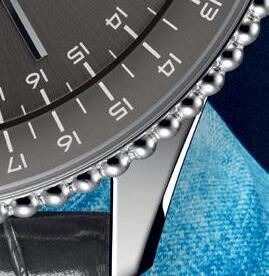


















































































































































































































































































































































We built this city on rock ‘n’ roll
38 44 58 e rebirth of cool in Bangkok
How the new Dusit Thani Bangkok is paying homage to a classic hotel.
Discovering the hidden gems of Abu Dhabi at the Emirates Palace Mandarin Oriental.
Lifting your spirits on a trip to Bhutan
The Himalayan Kingdom where spirituality is simply a part of everyday life.
Rocking out on a visit to the Kimberley
Exploring the incredible rock formations and the raw power of the Horizontal Falls. 64
Learning about West Hollywood’s music history on a high-octane walking tour. 18 A tale of two very luxurious ships
Setting sail on two very different Silversea vessels – the Nova and the Muse – in Australia. e pearl of the Middle East
London continues to be one of the most exciting cultural capitals on the planet. Our guide to all it has to offer.
Head of Content
Penny Cordner-Maas
Creative Lead
Natalie Meneghetti
For all editorial enquiries, contact editorial@luxuryescapes.com
Advertising
Tourism Boards
Jodie Collins
Executive Annika Rothschild
For all advertising enquiries, contact mediasales@luxuryescapes.com
Luxury Escapes
CEO and Co-founder
Adam Schwab
by
is published by Luxury
How Ubud became Bali’s hot destination
No longer just for yogis and wellness seekers, the northern town has come of age.
Riding the rails along the storied Silk Road
This ancient trade route offers intrigue and pure indulgence aboard The Golden Eagle train.
Making waves on the Mexican Riviera
Culture, history and a lot of fun on a Norwegian Cruise Line trip in the Sea of Cortez.
Is Victoria the best state for taking a road trip?
Its compact size, incredible food and rich diversity makes the southern state a contender.

Be inspired by wanderlustworthy destinations, traveller’s tales and the latest travel trends online at Dream by Luxury Escapes.

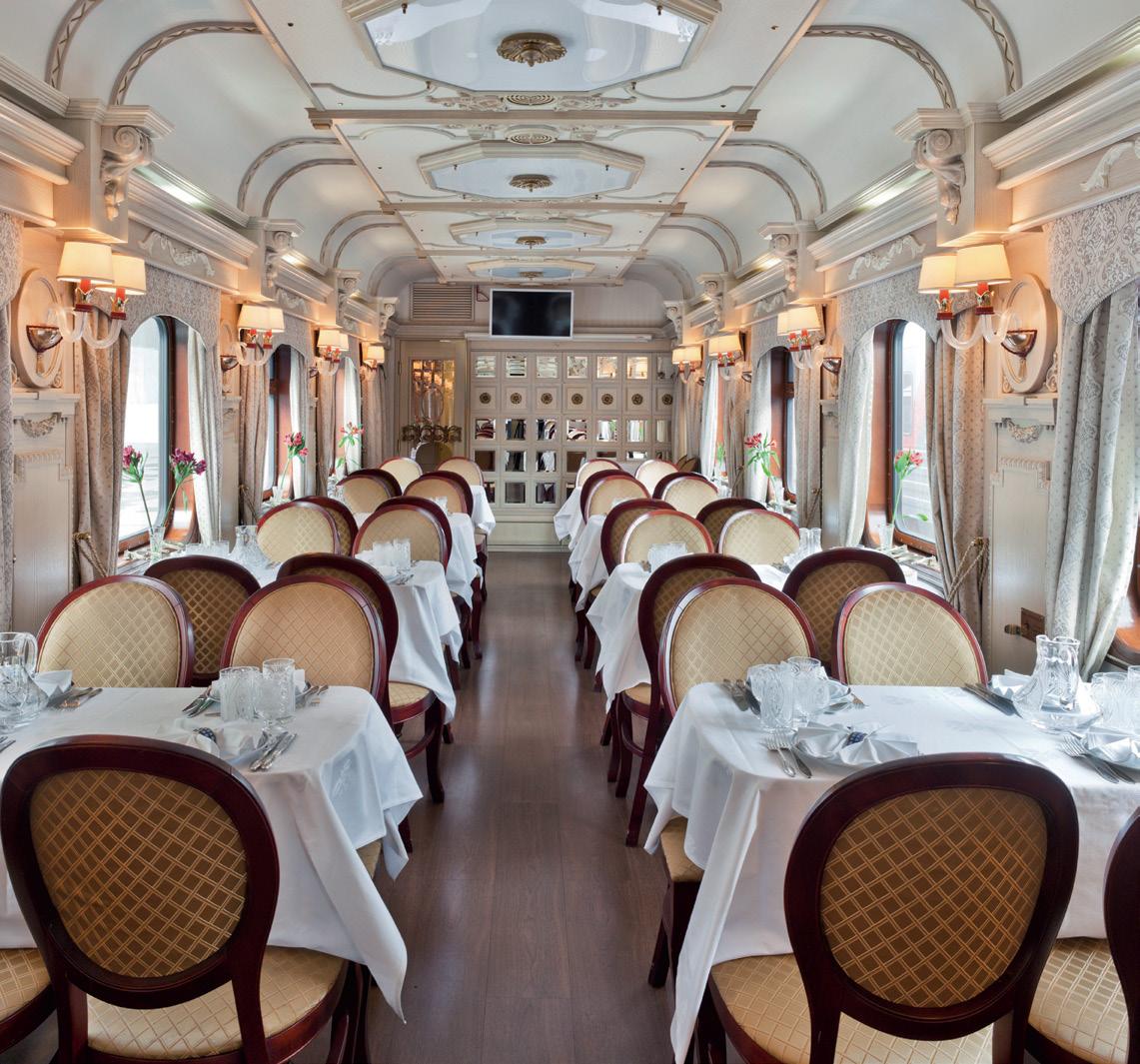
e shore thing: best beachfront Bali resorts.


Luxury Escapes top bucket-list destinations for 2025.
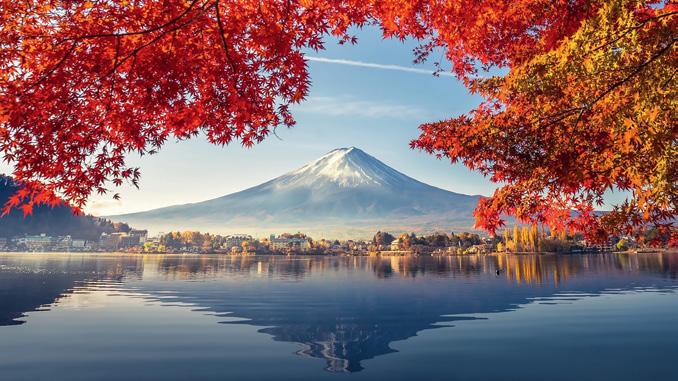

Also catch us at:
What are your travel plans for 2025? Here at Luxury Escapes we obviously think about luxury a lot and we have found, unsurprisingly, that it means different things to different people.
We reached out to our members at the end of last year and we uncovered a few interesting trends for the coming 12 months.
Forget FOMO (Fear of Missing Out), members are now taking JOMO (Joy of Missing Out) breaks where they prioritise relaxation over an action-packed itinerary. With cost-of-living issues stressing everyone out, the newest luxury we’re all craving is the time to simply switch off, and the perfect spot for that is Ubud in the north of Bali (“Jewel of the north”, page 82)
We also heard from members that luxury solo travel is on the rise with babymoons being replaced by “me-moons”, indulgent getaways for single travellers (see “Chill factor”, page 52).
And a fun trend spilling over from TikTok is “grocery tourism” where travellers are hitting the supermarket aisles to discover exciting new foods and flavours when they are

overseas without the high price tag of a fine diner. Stephanie Mikkelsen sinks her teeth into this new travel trend on page 62.
We’re also noticing a trend of “plastic surgery” where travellers are more likely to take an all-inclusive break to ensure their credit card is out of the equation, so they can relax and not worry about a bill at the end. Perfect trips for this include all-inclusive Luxury Escapes favourites like Pullman Maldives (page 14) or taking a cruise with companies like Silversea (page 64).
We have plenty of different types of luxury in this issue: perhaps it is a guided tour that teaches you more about a city you already love like LA (“Paradise city,” page 18), maybe it’s a high-end train journey along the routes of the former Silk Road (“Iron and silk”, page 90), or it might be hitting the town to discover the Harbour City’s newest and hottest dining spots (“One Night in Sydney,” page 34).
Whatever your idea of luxury is this year, Luxury Escapes will continue to provide some of the best value to help you book the perfect holiday.
CEO and Co-founder Luxury Escapes


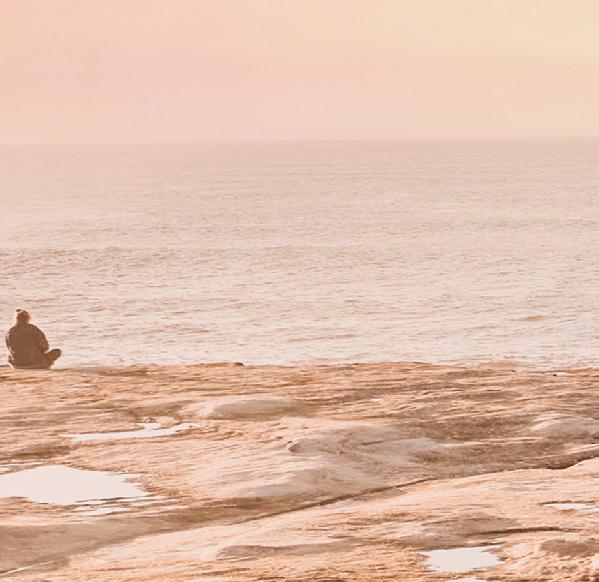







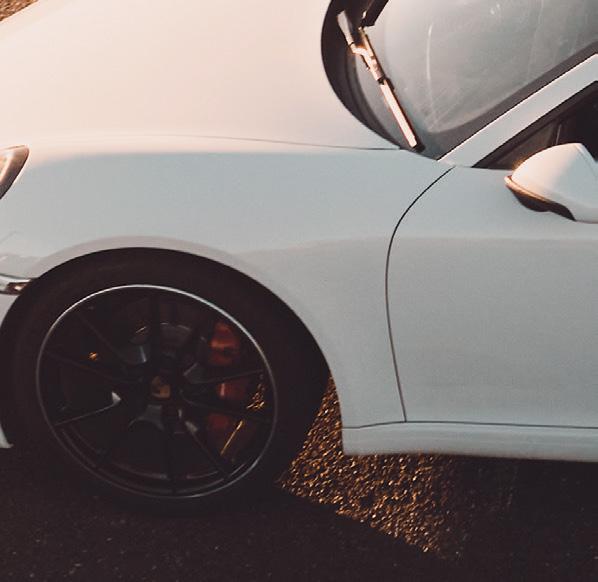

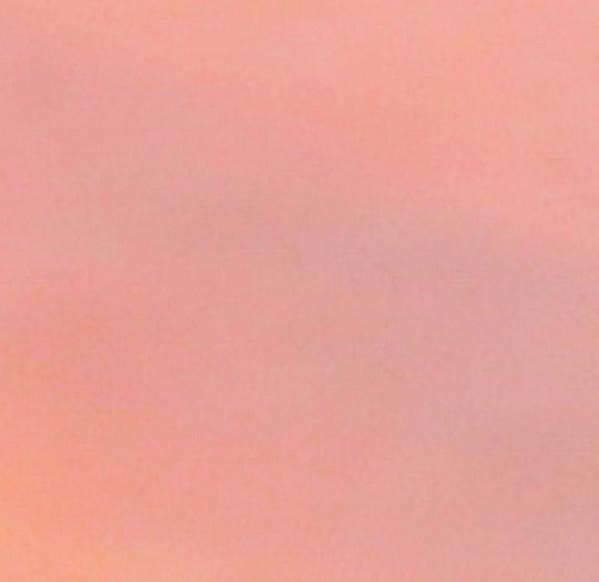

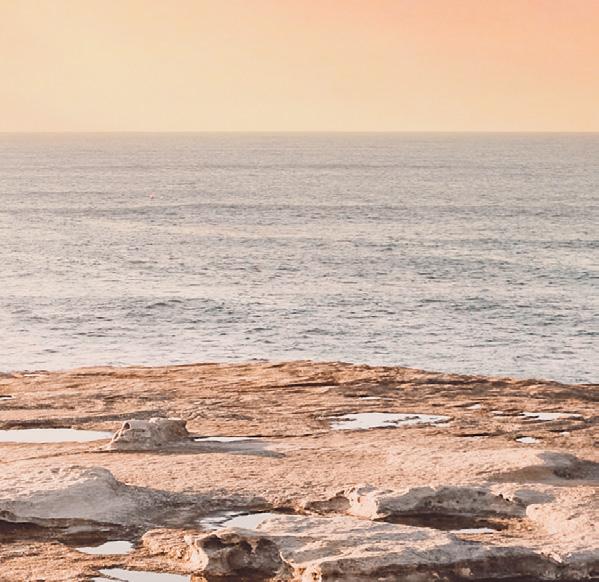














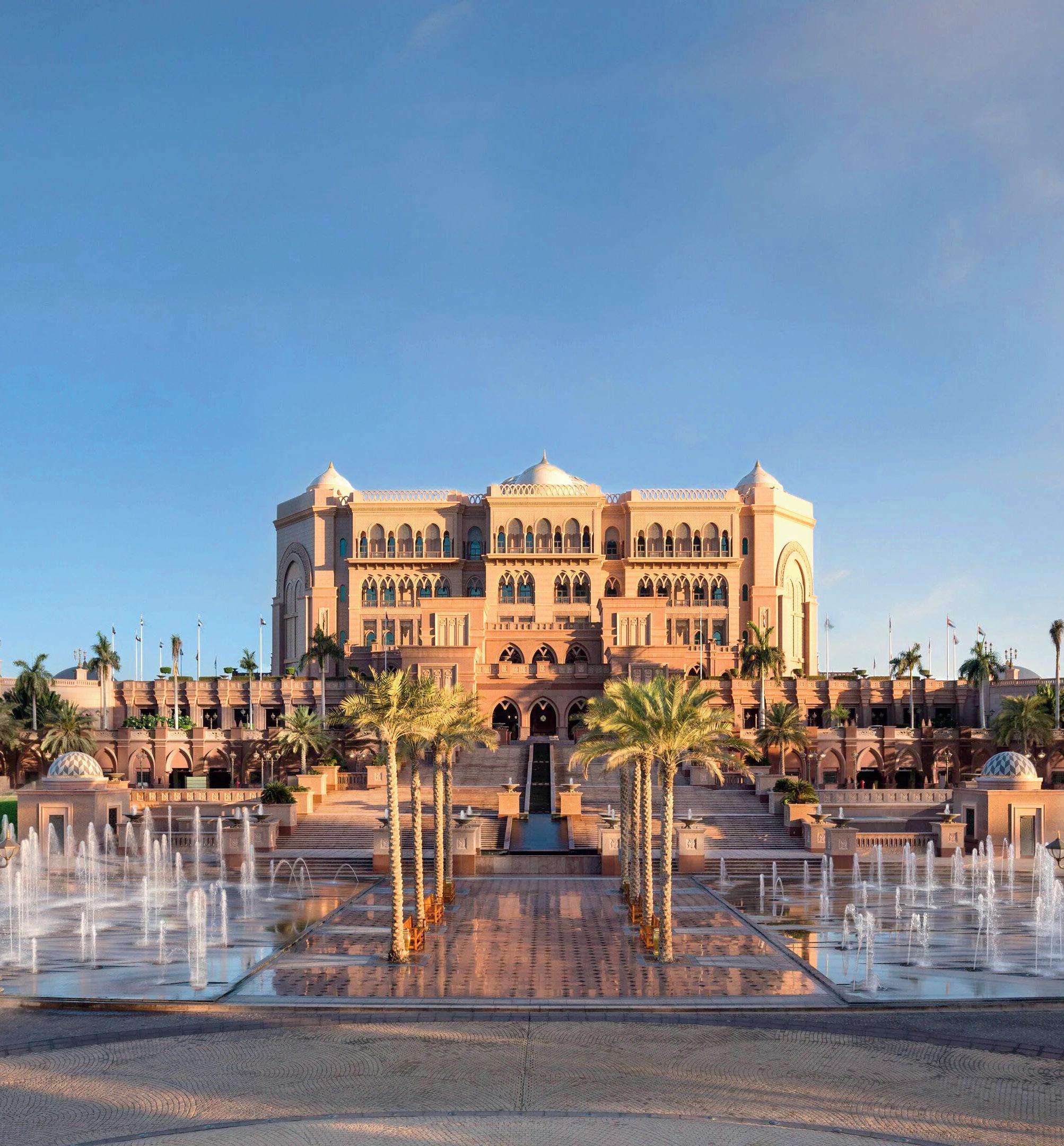
A by Adina launches new cocktail that requires 3D glasses.
Dean & Nancy on 22 at A by Adina Sydney recently announced a new signature drink that the bar says is its first ever “interactive cocktail”. The Ayahuasca Daisy is made with tequila, honeydew and apricot tea, berries and Montenegro Amaro – and comes complete with 3D glasses to create a sensory experience.
Restaurant and bar manager, Stefano Filardi says the 3D experience of the
margarita-style Ayahuasca Daisy is “connected back to an illustration on the menu as a little surprise-and-delight moment for guests”.
The new cocktail menu includes a variety of fun drinks including the Velvet Venom Milk Punch, served in a glass shaped like a sea urchin and the King Arthur’s Gimlet that comes with an icy play on the sword-in-the-stone myth.

Scarborough’s Rendezvous Hotel brings back its open-air cinema.
Perth’s Rendezvous Hotel in Scarborough has brought back its popular Film Club for summer. The hotel turns its 24th floor rooftop into an open-air cinema that not only has some of the biggest Hollywood blockbusters but amazing views of the Sunset Coast.
Guests start the night at the hotel’s Club Lounge with creative cocktails and delicious dumplings. Think spicy margaritas, espresso martinis and smoked negronis alongside bamboo baskets of vegetarian gyoza, prawn har gau and chicken dumplings.
Come 7pm it is up to the rooftop to grab a deckchair for the main event.


COMO Hotels and Resorts launches its new Arctic cruise for 2025.
COMO Journey: Into the Arctic will be setting sail from 30 July 2025. This exclusive 11-day expedition offers a once-in-a-lifetime opportunity to encounter native wildlife and explore the pristine wilderness of the remote northern Svalbard archipelago. In collaboration with the award-winning Natural World Safaris, this journey offers COMO’s luxuries combined with unrivalled access, exclusive insights and unforgettable encounters in one of the world’s most remote regions, featuring breath-taking fjords and snowcovered islands, complemented by the group’s signature offerings, from COMO Shambhala wellness to nutritious COMO cuisine.
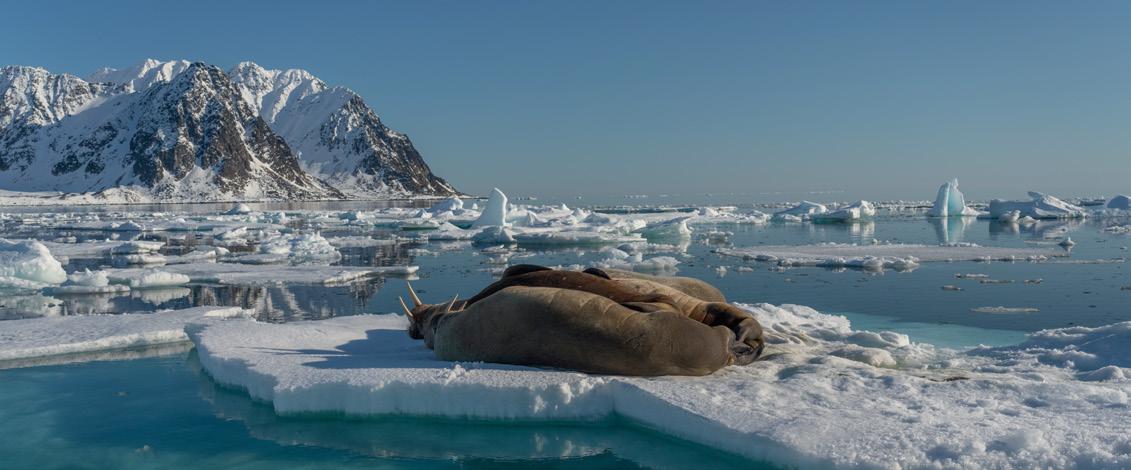
King Valley Prosecco pioneers Dal Zotto have a summer pop-up at voco in Melbourne.
Blacksmith Bar & Grill in Melbourne’s voco hotel and Dal Zotto Wines have combined to create a perfect summer pop-up in Dal Zotto on the Deck. Blacksmith’s terrace is something of a secret among the city’s rooftop bars but with an Aperitivo Afternoon happy hour and Bottomless Brunches featuring
Dal Zotto tipples the secret is well and truly out. “Bringing a taste of the King Valley to Melbourne’s CBD has always been our vision,” says Dal Zotto Wines’ Christian Dal Zotto. “This partnership captures the essence of Dal Zotto –combining great wine, delicious food, and the vibrant summer atmosphere.”

e only stay in Hoi An with private pool villas, this retreat occupies its own islet and is named for the owner’s two sons.
Wellness practices, influenced by local Vietnamese herbology, are integrated into day-to-day life; guests collect apothecary parcels every morning, which are then used in traditional therapies. Villas overlook either the river or nipa forest, and there are two onsite all-day diners: Mia Merchant for East-meets-West fare, and Nam Eatery, exclusively for hotel guests, for seafood inspired by Hoi An and Japan.
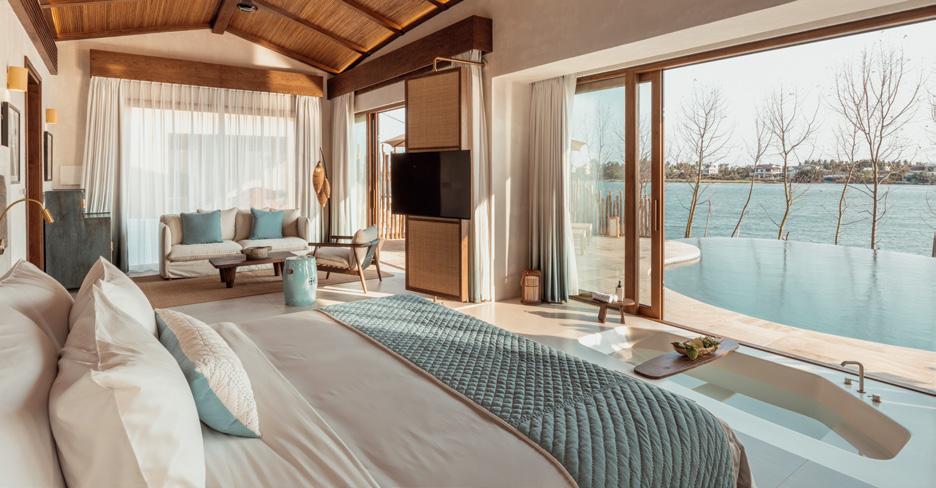
With the launch of e Sira in Lombok, e Luxury Collection debuts its third Indonesian property.
This new build occupies a patch along a white-sand beach and has views of Mount Agung. Find 46 suites and 14 pool villas, as well as a sprawling Beach House residence. For public paddles, the resort’s main pool is two levels and looks out over the ocean. Dining options span an all-day restaurant, a poolside Mediterraneaninspired eatery and a library bar.
e second outpost from Mandarin Oriental in the Chinese capital, this hotel has just 42 accommodations.
Inspired by the city’s traditional hutongs, the suites feature exposed timber roof beams, local artwork concepts, garden access with outdoor dining, and private courtyards. There are four dining options, from Yan Garden by Chef Fei for upscale Cantonese to VICINI for regional Italian plates, as well as an excellent spa.


e opening of this new-build hotel marks the debut for the Park Hyatt brand in the United Kingdom.
Quiet luxury is the name of the game across 203 guestrooms and 34 suites; think signature scents, commissions from 20 global artists, and elements of classic English style. Rooms with a river view are the hot tip. The hotel’s dining promises an extension of London’s multicultural diversity, and wellness offerings include a lap-worthy indoor pool and a riverside relaxation room.

e Arabian Gulf stands in for South Beach as Delano Dubai brings its signature Miami style to a shorefront on Bluewaters Island.
This 251-room resort includes 84 swanky suites, all with neutral and timber tones, marble bathrooms and private furnished outdoor spaces. Distinctive dining outlets include an iteration of the Rose Bar, the original of which is a Miami nightlife institution, and a slick pool overlooks the water and is flanked by sunken furniture, sunloungers and palm trees.
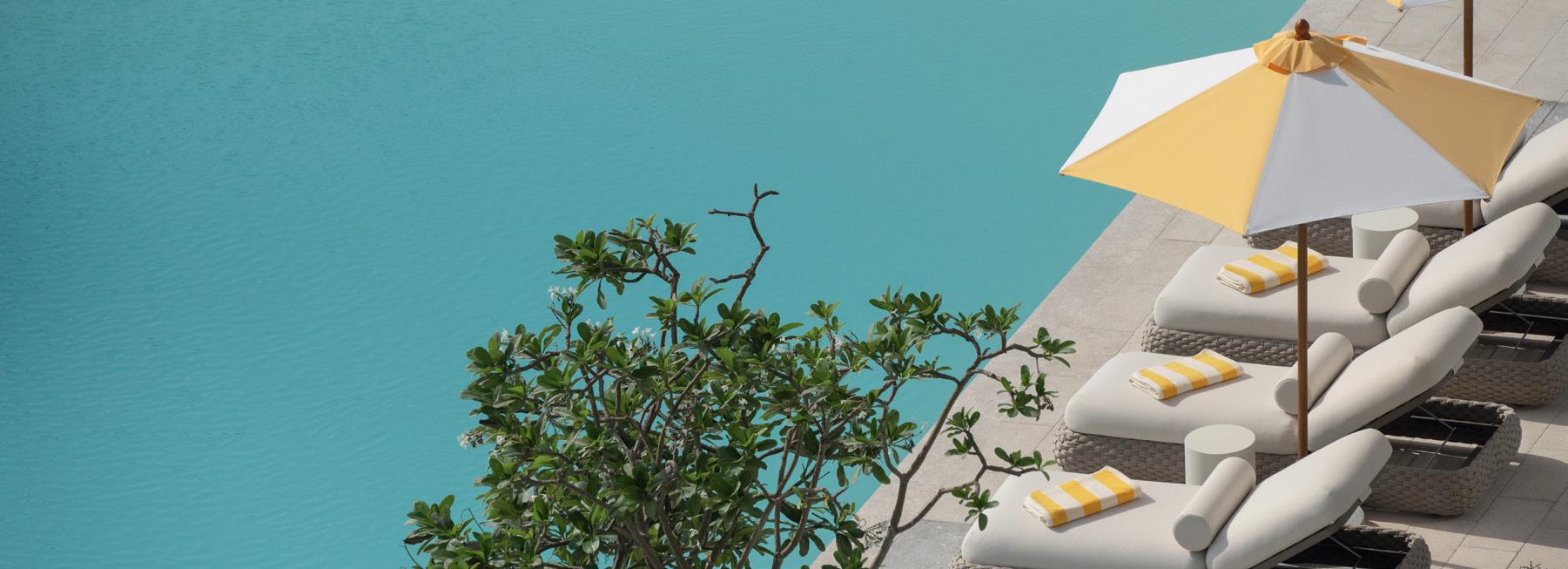


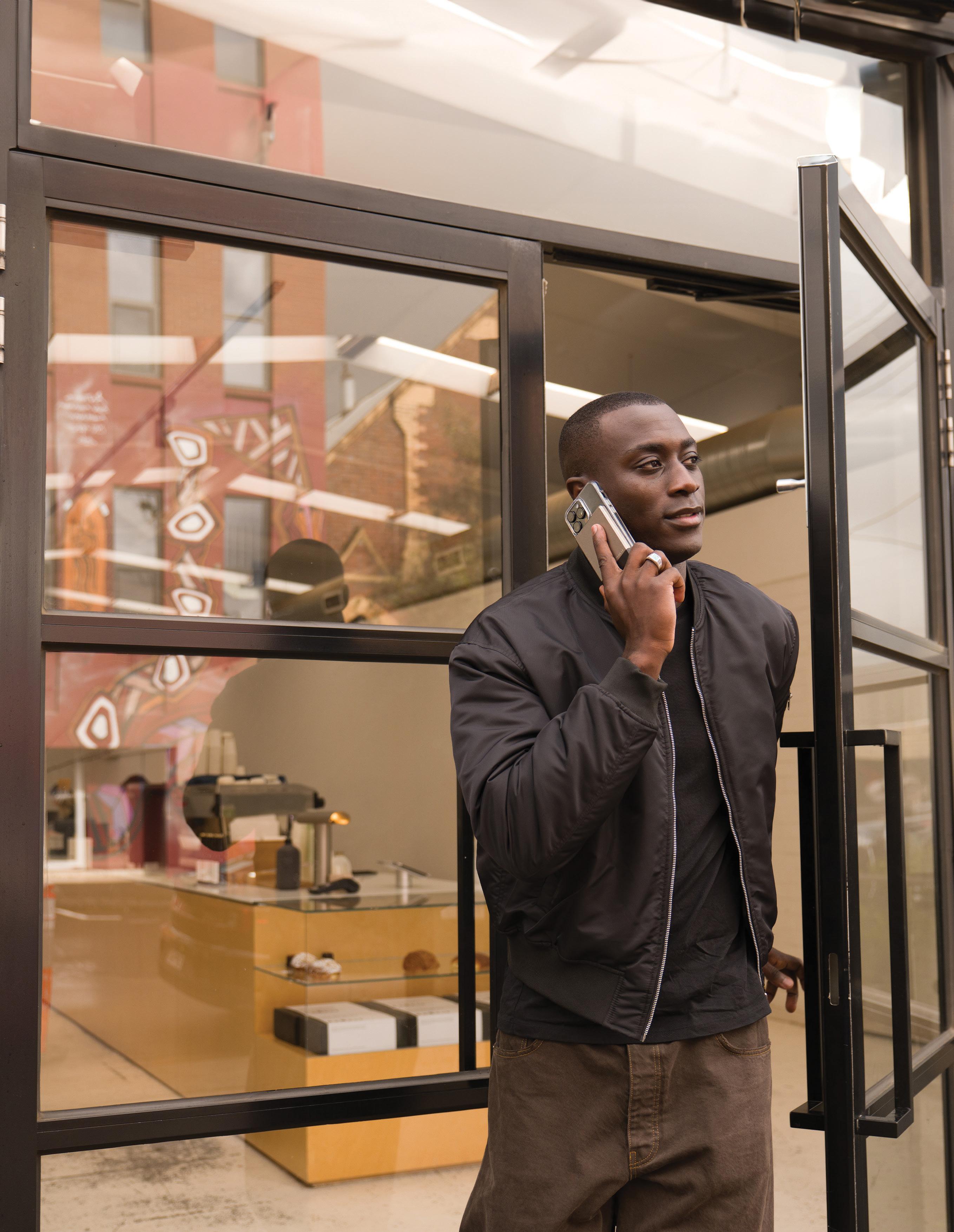


Under the ever-watchful eye of near-mythic peaks, Hobart and Cape Town present a tale of two mountains. ese symbolic summits have come to represent their respective cities more than a mascot or ambassador ever could. Vibrant arts movements, glittering waterfront precincts and wine scenes to impress even the most obnoxious of oenophiles: these cities refuse to skulk in the shadows.

Hobart proves “the best things come in small packages” isn’t just referencing carats. e Tasmanian capital is the little city that could, punching well above its weight despite often jostling for airtime against the Apple Isle’s other scene-stealers. One day here hints at its dazzling diversity – ne food, ne art and ne folk around every corner – but mine a bit deeper to uncover how Hobart truly sparkles.
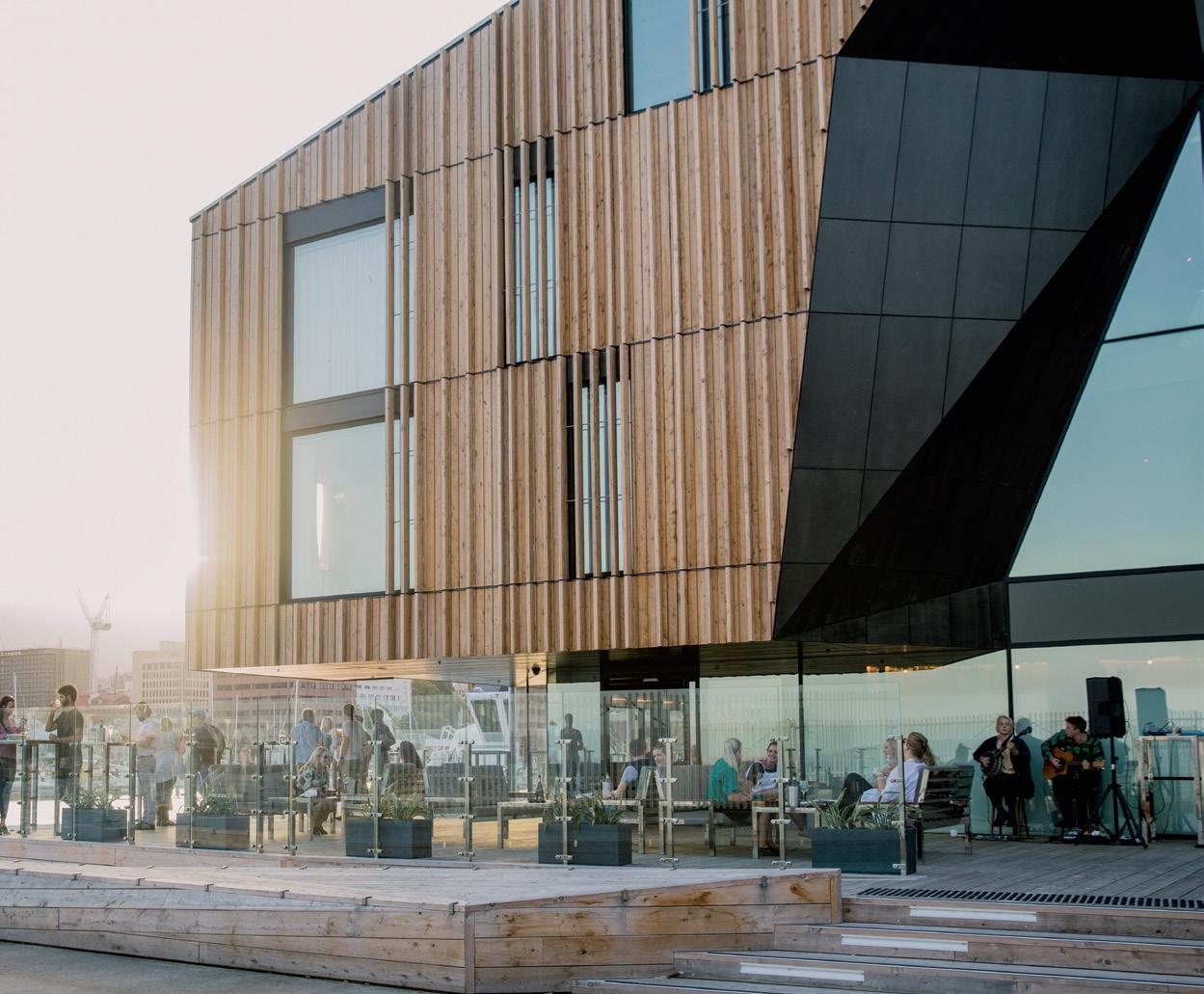
Battery Point was Hobart’s first suburb and the colonial-era cottages and merchant mansions are now some of Hobart’s most coveted real estate. Learn more about the history at Narryna, a heritage museum on Hampden Road, or pick up a pastry at Jackman & McRoss before cutting a lap around Arthur’s Circus.
Overlooking Hobart harbour, MACq01 blends creative quirks with clever design and respectful nods to the former warehouse’s heritage. Each of the 114 rooms and suites is named after a notable Tasmanian and guests can join daily storytelling tours. A lobby lounge is a cosy setting for predinner tipples, and the Old Wharf Restaurant serves Tasmanian produce and waterfront views.
FROM TOP: the view from Mount Wellington, towering 1271 metres above the city; spend the night at the luxurious MACq01.
OPPOSITE PAGE: Table Mountain at sunset which can be accessed by cable car; the venerable Victoria & Alfred Hotel.
Come Saturday morning, there is only one place you want to be: Salamanca Place, at the front of the queue for Smith’s Specialty Pies. The home-style curried scallop pie comes loaded with plump Tasmanian beauties in a lightly spiced sauce – a hearty way to fuel market exploration – however there are plenty of other offerings, from classic chunky steak to beltbusting barbecue pulled pork.
Towering 1271 metres above the cityscape, Mount Wellington can be explored by foot, tyre or wheel. Rock-climbing is also popular. Pick your mode for reaching the mountain’s summit and wander along boardwalks and between viewing platforms for outlooks across Hobart, Bruny Island and southern Tasmania.
On the outer fringe of the CBD, Sonny is a 20-seat wine bar with a walk-in only policy so come early for a spot around the communal table; patrons on one side, chefs on the other. Ten or so bottles rotate on the roster, including good lo-fi options, plus mystery wines by the glass. Bar snacks, house-made pasta, cannoli or tiramisu are on as eats, and a DJ spins vinyl from the deck in the corner.

Mother Nature, meet the Mother City. From its cultures to its landscapes, Cape Town is a city of convergence; legendary mountains give way to curving coastline, avours from old world cuisine are imbued with heady spices of the East, and complex histories pave the road for new stories. Vuvuzelas or no, the noise about Cape Town is real: it is as beautiful, it is as beguiling as cities come, and one visit is sure to leave you wanting more.
Named after the national fish, 30-seater Galjoen showcases the best of South Africa’s waters. The daily tasting menu celebrates sustainably sourced seafood and chefs spin up plates with just-shucked oysters or linecaught fish, depending upon the day’s catch. The wine list is as tight as the lunch and dinner menus, and the light industrial-style setting is a fitting extension of the kitchen’s modern plating.
Table Mountain is emblematic of Cape Town. Hiking trails criss-cross the mountain for those eager to explore on foot (guides are recommended), or the cable car whisks sightseers to the tabletop in a leisurely four- to five-minute ride. Don’t worry if you are shuffled to the side of the car facing the cliff face; the car rotates on its ascent, affording all passengers panoramic views along the way.

Located next to Grub & Vine, a buzzy bistro, and above moody jazz club Blue Room, Culture Wine Bar promises an awardwinning wine list, scene-setting red leather banquettes and a welcoming vibe; everyone can enjoy a pour here, regardless if you know your Pinotage from pinot noir. The food menu leans into comfort eats, from crispy chicken wings to a house hot dog, and local musicians take to the stage on Friday and Saturday nights.
This 1904 warehouse-turnedhotel has one of the best waterfront locations in the city; the restaurants, boutiques and goingson of the V&A Waterfront are quite literally at your front door. Rooms are spacious and modern, dressed with splashes of blue and red, and some overlook the harbour –a view made all the better with Table Mountain looming large in the background.
Perhaps best-known for its pastelcoloured houses, Bo-Kaap is intrinsically linked to Cape Malay culture. A guided walking tour, led by a local, is the most insightful way to learn about Bo-Kaap and delve into its heritage beyond its brightly painted facades. Bo-Kaap Museum and Auwal Mosque are two notable landmarks, and familyrun Bo-Kaap Kombuis dishes up classic Cape Malay cuisine.



Flying televisions, hidden celebrity boltholes and an access-all-areas pass: Paul Chai turns it up to eleven on a blistering tour of the rock ‘n’ roll history of West Hollywood, which has long been the playground of Los Angeles’ hard-partying crowd.
Like the secret track on a CD, the rock ‘n’ roll history of West Hollywood can arrive as an unexpected delight, popping up seemingly from nowhere when you thought you had seen and heard it all.
“I like to say of Los Angeles that all of its secrets are hidden in plain sight,” says Jon D’Amico, who runs Sunset Strip Rock ‘n’ Walk Tours (rocknwalktours.com). Jon has been a stage manager for Guns N’ Roses, Alice in Chains and Stone Temple Pilots, he’s played in “nardcore” band Stalag 13, and now operates fast-paced tours around the storied streets of the famously louche Sunset Strip.
This is the two-mile stretch of bitumen that was the first place Elton John played in America, was the scene of the untimely demise of actor River Phoenix outside the Viper Room and has been Hollywood’s party spot for nearly six decades. It is the few

blocks of Los Angeles’ Sunset Boulevard that became a counter cultural magnet for harddrinking actors like Jack Nicholson and the hard-rocking bands of the hair-metal era like Mötley Crüe.
As Jon describes it, the Sunset Strip’s rock roots were formed in the ’20s and ’30s when the area was known as a lawless playground for the movie industry; where people would work in Hollywood, live in Beverly Hills and get up to no good in between in the clubs of what would become known as West Hollywood.
Jon’s tours are the answer to the question: what if a punk gig and a walking tour had a love child? After three hours with Jon your head will be spinning faster than Motörhead singer Lemmy Kilmister’s after one of his allday benders at the Rainbow Bar & Grill.
It is at this very establishment, seated in a booth bathed in blood-red lighting, that
OPPOSITE: the palm-tree-lined streets of LA can look samey, but there are decades of movie and rock ‘n’ roll history hidden in plain sight ABOVE: day and night on the Sunset Strip, the road that launched many rock bands.
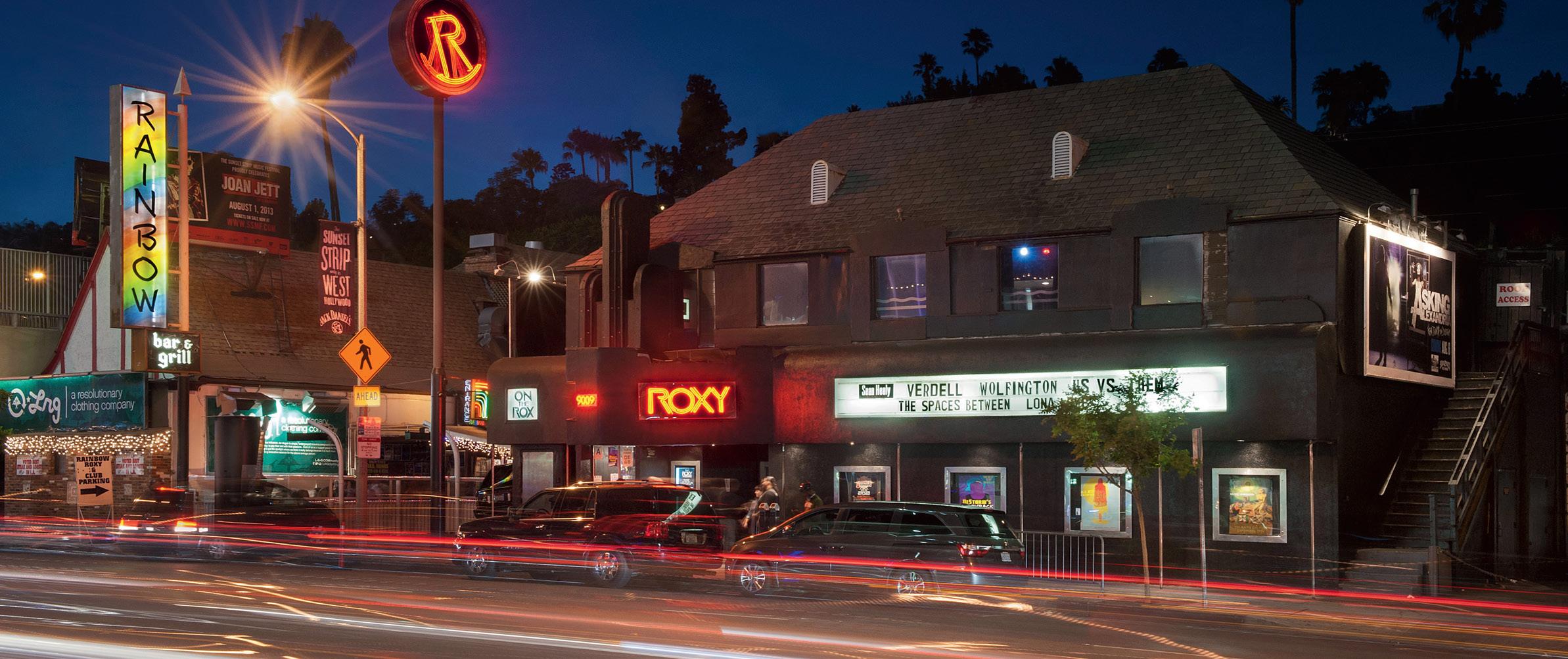
I discover the first of Jon’s plain-sight secrets: not only is there a statue of Lemmy next to the bar he used to frequent but part of his ashes are enshrined here as well. Jon will also take you to surprising parts of the Rainbow that few people get to see and, if those walls could talk, they would immediately be slapped with a nondisclosure agreement. But what goes on tour, stays on tour, as they say.
What I can tell you is that Jon’s guided experience is a high-octane ride that matches the extreme spirit of this notorious strip. “I’m going to give you a taste of the Sunset Strip that others can’t and we go places that you simply can’t get without me,” Jon says. “You will come here as a tourist and leave as a local and my aim is simple: I just want to blow your mind.”
As a rock fan who has tried to do his own music tours of LA in the past, Jon does manage a few mind-blowing moments. He takes us to the toilet next to the Tail o’ the Pup hotdog stand where Jim Morrison recorded the vocals for LA Woman because his producer loved the sound quality; we see the table into which Janis Joplin carved her name the night she died; and we visit hotspots like the Whisky a Go Go, the Roxy, and the Troubadour all of which have queues of music fans snaking around the busy streets on any given night. Jon also casually introduces us to an ’80s rapper in a cigar bar and an A-list Australian director lounging in the corner of a hotel courtyard; our tour guide is also regularly stopped himself for handshakes and selfies as he strides purposefully along the neon-washed streets.


Another take on West Hollywood is a Bikes n Hikes e-bike tour. Similar to Jon D’Amico’s rock tours, the team at Bikes n Hikes want you to experience LA, not just drive past it. As such they offer hikes to the Hollywood sign and e-bike guides that not only keep you safe on the car-packed Los Angeles streets but pass on some incredible local knowledge as you cycle along. You will visit the city’s famed WeHo Design District, the independent studio set up by Charlie Chaplin and Boystown, the LGBTQI+ party district.
The hotels around West Hollywood also have a story or two to tell. You no longer have to watch out for falling televisions or couches as you walk past the Andaz West Hollywood but back in the day the hotel was known as the “Riot House” and was famous for its rock ‘n’ roll bad behaviour. This was the hotel that had its rooms routinely trashed by the likes of the Who, Led Zeppelin and the Rolling Stones. The new Andaz is a much slicker affair these days but it leans into its rock history with artworks made up of colourful platform boots, the homage-heavy Riot House rooftop pool bar and a huge blackand-white photograph hung in the lobby of Led Zeppelin’s Robert Plant standing on the balcony of Room 905 before a crowd of fans declaring himself “a golden god”.
For a more low-key but also high-starwattage stay, the Sunset Marquis is the under-the-radar celeb spot that still draws music’s famous faces. The hotel is set off the street in a garden reminiscent of its famous neighbour, the Chateau Marmont. Rooms are hidden down greenery-enshrouded pathways and the pool is an infamous hangout of the
Rolling Stones, where Keith Richards would hang a pirate flag from his window when he was in residence, and the poolside lounges were the inspiration for the band’s Voodoo Lounge album. Take another pathway and you will end up lost in “Cyndi’s Garden”, a verdant getaway beloved by Girls Just Want to Have Fun singer Cyndi Lauper.
Sitting at lunch at the hotel’s sunny restaurant Cavatina, I am enjoying a little gem Caesar salad and a glass of IPA, fittingly called a “nose job”, when a film crew sets up for an interview and could-be-famous faces weave in and out of the garden paths to a soundtrack of Counting Crows and Goo Goo Dolls; the hotel is covered in famous rock photography and has the Morrison Hotel Gallery at the entrance which displays even more iconic rock moments.
Back on the streets of Los Angeles, I am soon zooming past taco stands, nail salons and decaying retro motels – they fly by with an almost numbing similarity – but I now know that any one of them could have a rock history story that might just blow my mind.

Located just a short walk to rock icons like Barney’s Beanery (where Jim Morrison has a plaque on the bar signed by all the members of the Doors) and the ideal location for taking the Rock n Walk tours, the Chamberlain was recently the recipient of one of Los Angeles’ first Michelin “keys”, the hotel version of the foodie prize. Rooms are spacious and split-level with a living space and huge bathroom, plus a balcony overlooking the tree-lined streets.

Just outside of West Hollywood on the famous star-studded Hollywood Boulevard, the Hollywood Roosevelt has played host to a range of stars from Marilyn Monroe to Charlie Chaplin. You can have a martini in the lobby bar or dine at Shirley Brasserie and the hotel also has a simple burger joint in 25 Degrees. Rooms have a midcentury modern vibe reflecting the hotel’s history.

ere is more to Hawaiʻi than sun-kissed beaches, great surf and a laidback island lifestyle. You can also take a cruise and discover local hotels that focus on wellness, opulence and sunrise discoveries. Come to the Hawaiian Islands for your next getaway.
Whether you are looking to take yoga classes in Waikīkī, enjoy a personal hotel concierge, head to a local lavender farm or island hop on an ocean voyage, you will discover exciting new ways to see Hawaiʻi. And getting around the islands is easier than ever with Hawaiian Airlines offering around 150 daily flights within the island group.
The islands are packed with a huge variety of experiences. You can explore the mountain range of Lēʻahi (Diamond Head), kick back on a rooftop infinity pool with views of Waikīkī Beach, or take a private hula lesson at a lūʻau and learn more about local culture. Fly in, rest up and set sail for the perfect island getaway.


Experience Hawaiʻi with Luxury Escapes
Welcome to the lush side of Waikīkī. Tucked away in the quiet edge of Waikīkī, where Lēʻahi's (Diamond Head’s) majesty meets the city’s pulse, Lotus Honolulu is a sanctuary for the seasoned traveller. With only 51 rooms and a commitment to personalised, intentional service among hotels in Honolulu, this boutique gem invites you to savor intimate moments — sunset sips at wine hour, serene yoga under island skies — all delivered with heartfelt aloha.

ESPACIO the Jewel of Waikīkī redefines luxury and indulgence, offering an exclusive, opulent retreat in the heart of Waikīkī. This boutique hotel features just nine spacious suites — one per floor — each with lavish interiors, custom Italian marble and private balconies with breathtaking ocean views. Guests enjoy the comfort of a personal concierge, private access to the rooftop infinity pool, and global contemporary cuisine at Mugen. Every detail exudes elegance, from high-end amenities like a dry sauna in the master bathroom to an in-suite chef service. ESPACIO offers unparalleled privacy, making guests feel like royalty in a serene oasis right above the bustling beaches of Waikīkī. The tailored, fivestar service, thoughtful touches, and sublime setting create a perfect escape for travellers seeking splendour and tranquillity.
When it comes to cruising Hawaiʻi it's our thing. But once you hop the Hawaiian Islands with NCL it will become your thing. Only NCL visits four uniquely different islands in seven days – with overnight stays in Maui and Kauaʻi. Giving you plenty of time to hike along a majestic waterfall, step back in time during a visit to Pearl Harbour and then take in a dazzling show at an authentic luau. It’s a Hawaiʻi cruise holiday experience that’s with you from sea to summit to stores you’ll share for years to come. Because Hawaiʻi has a way of doing that to you. Pride of America departs Honolulu every Saturday year-round and is available to book via Luxury Escapes.

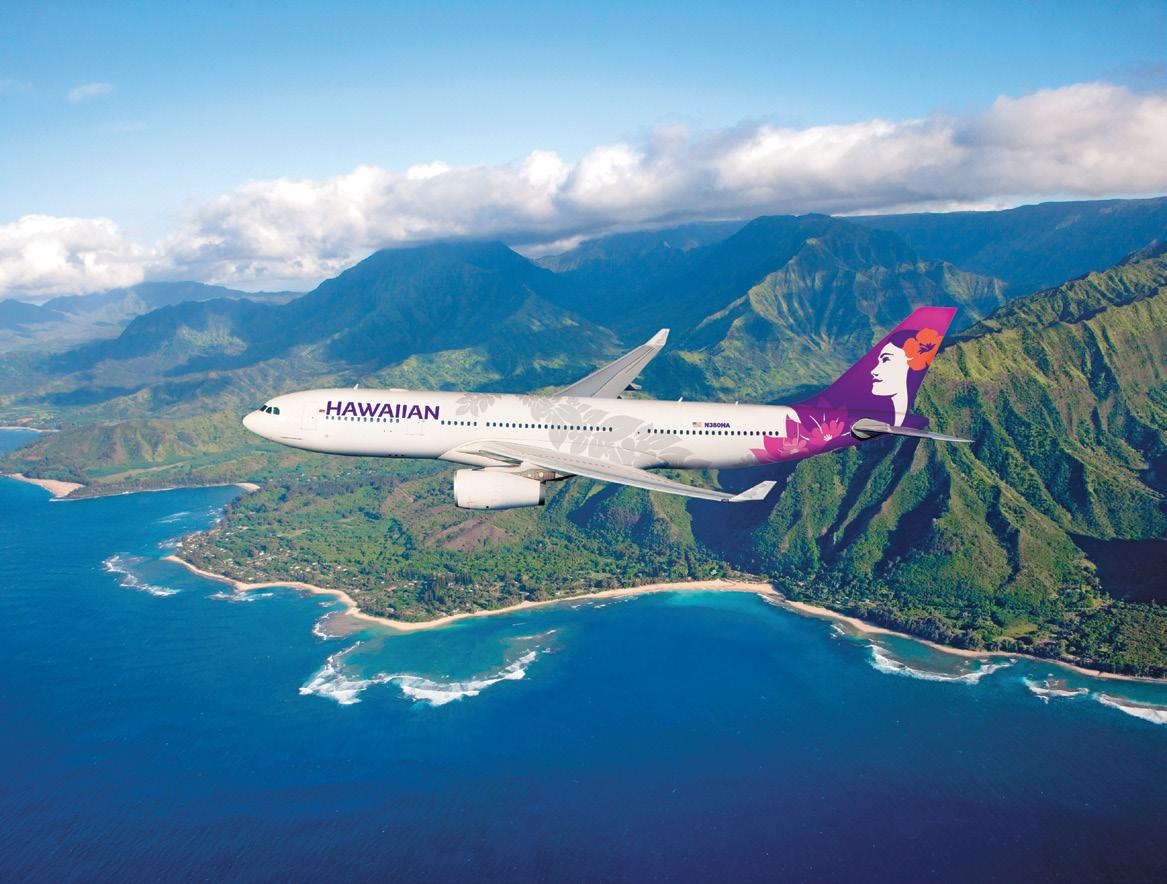
Now in its 95th year of continuous service, Hawaiian is Hawaiʻi's largest and longest-serving airline. Hawaiian offers approximately 150 daily flights within the Hawaiian Islands, and nonstop flights between Hawai'i and 16 U.S. gateway cities, as well as service connecting Honolulu and American Samoa, Australia, Cook Islands, Japan, New Zealand, South Korea and Tahiti. Consumer surveys by Condé Nast Traveler and TripAdvisor have placed Hawaiian among the top of all domestic airlines serving Hawaiʻi. As Hawaiʻi’s hometown airline, Hawaiian encourages guests to ‘Travel Pono’ and experience the islands safely and respectfully.


A deeper experience awaits when you stay at a Marriott International resort on Maui, Oʻahu, Kauaʻi and Hawaiʻi Island. The collection of hotels and resorts will awaken your senses with stunning infinity pools, vibrant landscapes and unique cultural offerings.
Stay moments away from self-discovery – where a stroll through Aliʻi Kula Lavender Farm will connect you with the land, the morning sunrise atop Haleakalā can rejuvenate the soul, and a hula lesson at a lūʻau can spark a lifelong love of dance. A deeper experience awaits in Hawai'i with Marriott International.
BERLIN
e bartender’s handshake is the traditional greeting between hospitality workers: it might take the form of a signature cocktail or a simple shot. We shake hands with Aurora Almenar, lead bartender at Berlin’s high-concept den of mixology, Bar Clara.
At Bar Clara, it’s all about the view. Inhabiting the rooftop terrace of boundary-pushing contemporary photography museum
Fotografiska Berlin – outpost of the legendary Stockholm institution of the same name –it makes for the perfect sunset chaser to an afternoon of pop art, outré film and high spectacle.
Inspired by its unique location, Bar Clara’s cocktail list is equal parts seasonal and ephemeral; changing in step with Fotografiska’s exhibits, themes range from photography’s eternal muses (light and colour) to the unforgotten champions of hip-hop (DJ Kool Herc and Lil’ Kim, among others). Behind every shake, stir and pour is the philosophy that the drinks should be at least as spectacular as the art.
Aurora Almenar isn’t shy about the work involved in keeping things cutting-edge, an outlook brought from her role as former head of research and development at acclaimed Barcelona bar Paradiso.
“For the preparation of our cocktails, we employ many techniques deriving from gastronomy,” she says.
“Some of the tools we use include immersion circulators to make
infusions, iSi whippers for foams, centrifuges and micron bags for clarifying. We forcecarbonate highballs in their entirety before serving. For our guests, only the bubbliest cocktails will do.”
“Maybe not the trendiest choice,” says Aurora, “but they have a great variety of Georgian wines.” Georgia is one of the world’s oldest wineproducing regions; the wine bar/ cellar’s laidback atmosphere makes it the perfect place to sip your way across the Caucasus.

50ml galangal and ginger-infused whisky
30ml guava syrup
25ml lime juice
A dash Pimento Dram allspice liqueur
Top with smoked mastiha (Greek mastic liqueur)
Garnish: an orange twist or candied ginger

1. Add whisky, guava syrup, lime juice and Pimento Dram liqueur into a shaker filled with ice.
2. Shake vigorously until cold and combined. Double-strain into rocks glass over ice. Top with smoked mastiha.
Ranked No. 29 on The World’s 50 Best Bars, Wax On is at the centre of the ultra-hip Weserstrasse’s bar scene, with a wunderkind bar team and laboratory-created cocktails showcasing ingredients like clarified banana juice and freshly made yoghurt.
“Can we choose non-bar venues?” Aurora laughs. “Canal Berlin has to rank up there… these are the best eclairs of my life.” Even in a city as legendary for baked goods as Berlin, Canal’s pastries and icecream stand alone: the patisserie’s shops can be found sprinkled across the city like fairy dust.
“It’s another strong concept that inspires me.” Germany’s first and only two-Michelin star dessert restaurant features a sommelierbacked wine, beer and saké menu that challenges how diners think about flavour pairings.
There’s nothing Berliners love more than good food and drink, and Mediterranean fusion spot Yafo Gastro Bar more than delivers, with a strong wine selection – including traditionally made, tannin-packed orange wines – and plenty of things to snack on while you wait for the next round.

Simon Rogan is among the celebrity chef elite, a small constellation of superstars with all three Michelin stars. Yet he’s proudest of his achievements as a longtime advocate of sustainable and seasonal cuisine, he tells Ron Gluckman.
The son of a vegetable and fruit merchant from Southampton, in southern England, Simon Rogan learned to value seasonality and minimise waste as a boy, growing up in a kitchen abounding in ripening food and flavour. Hailed as an early farm-to-table pioneer, he is famed for L’Enclume, set in a former 13th-century blacksmith workshop in Cartmel, on a farm in the idyllic Lake District. It’s also a farm-stay pioneer that celebrated its 20th anniversary in 2022, the same year Simon received his third Michelin star; plus it has a Green Star for sustainability.
Simon is also the force behind Aulis, an intimate chef’s table offering an inside look at the backstage magic of chefs as they create dishes, explaining technique and processes.
We caught up with Simon ahead of opening his new restaurant, Aulis, at Thailand’s Iniala Beach House, a small, luxe resort in Phang-Nga, just across a bridge from the holiday island of Phuket. We start with drinks (including a variety of dazzling kombucha made from kitchen scrap –nothing is wasted) in the glamorous lounge, then dish after delicious dish grilled, spooned and torched right at the adjacent chef’s table. His team sources the finest local ingredients: juicy river prawns, fish and squid from the
waters around Phuket. His scrumptious pomelo tart featured fruit from a local market and pomfret from a small fishing family in Phuket. Dessert paired yoghurt from Chiang Mai, a prime producer of organic ingredients, with local mango and passionfruit.
“Thailand is magical! There is so much potential here,” says Simon, who first visited on a family holiday three decades ago. “The possibilities are endless. We’re just starting to explore, but Thailand really has everything we need.”
Inspired by the classic bread-and-butter puddings of his childhood, this small packet of flavour emphasises his passion for hyper-localisation. The original was caramelised in birch sap and topped with grated Berkswell cheese. His Thai version is glazed in aged molasses of bananas from nearby fields, topped with black garlic and truffle.

SIMON’S FAVOURITE PHUKET RESTAURANTS
“This restaurant rightly gets a lot of credit for bringing the world of fine dining to Thai food and was the first restaurant to be awarded a Michelin star in Phuket. The team shares a similar philosophy to ours, working with their own organic farm to shine a light on sustainably grown, local produce.”
“This restaurant wouldn’t be out of place in a big city like London or Hong Kong, but their focus on seafood from coastal Thai regions gives it a real sense of place and belonging.”
“I’m not much of a cocktail man, but hats off to the team of bartenders at this bar in Phuket Old Town who create works of art that taste as good as they look.”
“Another fine dining establishment; I’d heard about this place from other chefs as they’d done some successful pop ups, so there seemed to be a lot of buzz about the re-opening when I was in Phuket last December.”
“This is just five minutes from Natai Beach, where Aulis Phuket and Iniala Beach House are, so it’s perfect for an off-duty meal and a few beers with the team.”
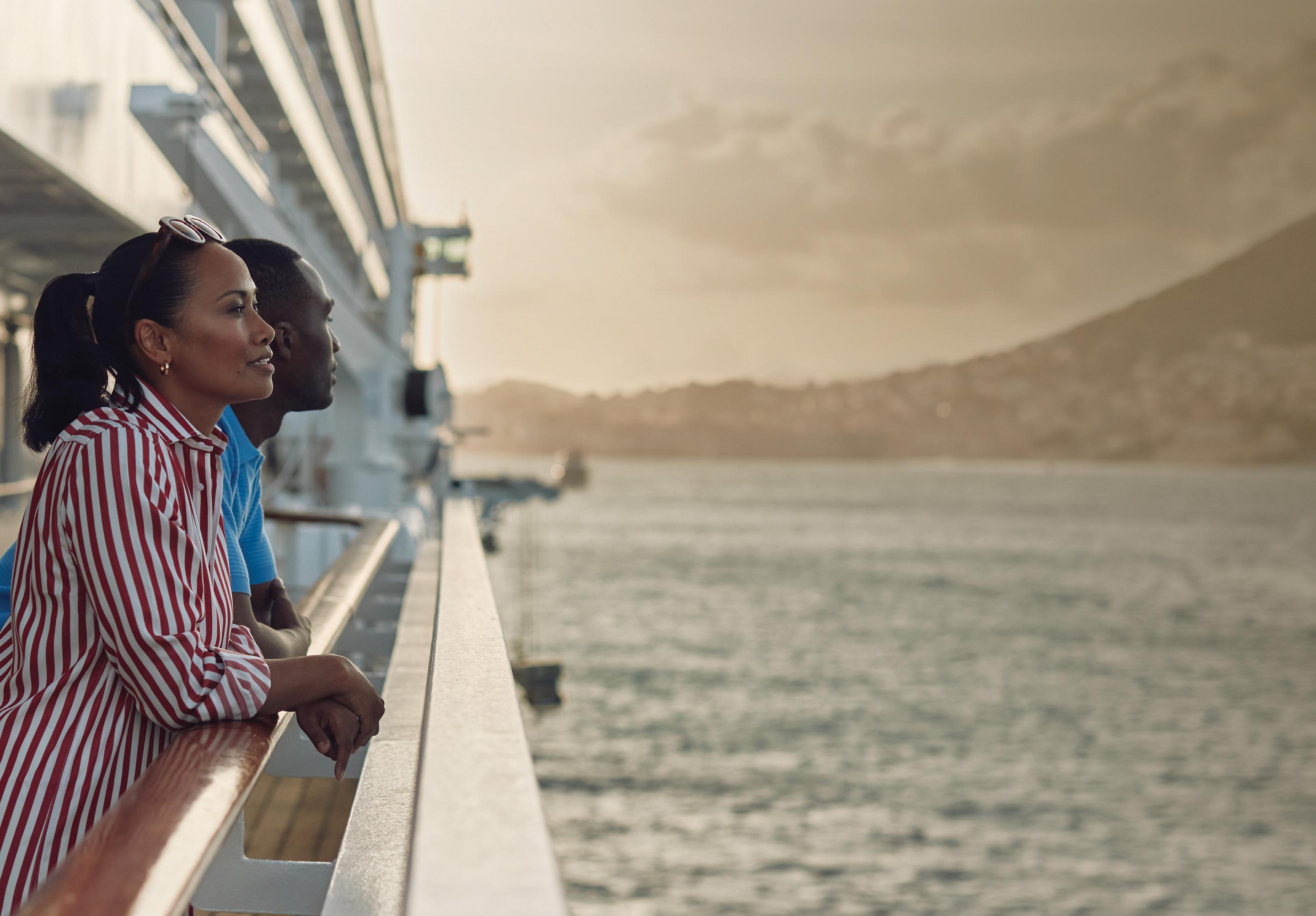

Tokyo — Tokyo
21 NIGHTS FROM $15,350 PP
18 APR 2026 ‑ 09 MAY 2026
CRYSTAL SYMPHONY

12 NIGHTS FROM $8,080 PP 27 APR 2026 ‑ 09 MAY 2026
CRYSTAL SYMPHONY

11 NIGHTS FROM $7,440 PP 09 MAY 2026 ‑ 20 MAY 2026
CRYSTAL SYMPHONY
Take a horse and sleigh ride in the snow, enjoy a boardwalk through an icecovered canyon or take a gondola ride between white-capped Rocky Mountain peaks. Winter in Ban and Lake Louise is a magical, snow- lled wonderland full of luxury accommodation, crackling res and cracking food and wine.
There is something wonderful about sitting around a huge open fire as snow falls silently outside the window. Banff National Park is the perfect winter escape, the park stretches over more than 6000 square kilometres with frozen lakes, soaring peaks and plenty of option for outdoor adventures. You can base yourself in a modern-day
fairytale castle, explore an ice-covered canyon and travel on one of the most scenic stretches of road in the world, the Icefields Parkway connecting Banff and Jasper National Park. Winter in Banff and Lake Louise is the time to explore, to indulge and to unwind with these perfect winter activities.

Ready to explore?


Fairmont Chateau Lake Louise looks like it was plucked from a Disney movie surrounded by thick alpine forest; Rocky Mountain peaks soaring above and the iconic frozen Lake Louise at its doorstep. The chateau has 539 rooms that are decorated with a contemporary glamour, making it an ideal base for a winter adventure. Equally, you could base your stay at sister property, Fairmont Banff Springs, known as “the Castle in the Rockies”. Located inside the UNESCO-listed Banff National Park, Fairmont Banff Springs has been offering hospitality within its venerable castle walls since 1888.

The romance of a horse-drawn sleigh carrying you through pine trees whose branches are piled high with snow is a must-do on a trip to Banff National Park. Lake Louise is the wintry setting as the gentle horses pull the wooden sleigh through the glacial terrain with a gentle rocking motion that soothes you as you travel; this really is a storybook experience and one that is best done in the snowy weather.

Eden restaurant at The Rimrock Resort Hotel in Banff is an elevated dining experience in more ways than one. Not only does the dining room have stunning views of the snow-dusted mountain tops but the menu is one of refined elegance with wine-pairing that is also next level; that’s what happens when you have a cellar with over 17,000 bottles on offer ensuring an exquisite culinary experience. The Rimrock Resort Hotel itself is another incredible mountain retreat with views over the Bow River and the Rocky Mountains.
A surreal place of vertiginous falls and cliffs fringed with giant icicles, Johnston Canyon is a natural wonder. The best way to explore it is on a guided icewalk where guides and guests are equipped with cleats to explore the boardwalk. For the really adventurous, you can also choose to go on this ice experience at night.

The Icefields Parkway parallels the continental divide of the Rockies for 232 kilometres and makes for one of the most dramatic journeys on earth. The road connects Banff and Jasper National Park. If you’re wanting to experience both parks take a journey with Brewster Express or Sundog Tours, and drive past frozen waterfalls and surprising rock formations with the Rocky Mountain peaks as your constant companions. If you love spectacular scenery this is one journey you just can’t miss.

Be carried to the summit of Sulphur Mountain on the Banff Gondola, a ten-minute, 700-metre ride to the best views of the mountain town. You will be swept through the tree tops up to the peak where you can look down upon the town; go at sunset and you can watch the lights of the township twinkle from your impressive vantage point.
Do winter right by embracing the frozen lakes, the icy valleys and the snow-capped mountains of Ban . You’ll leave with the warm feeling of having created lasting memories that you can only get on a winter trip to Canada.

One of Bangkok’s most historic hotels was razed to the ground in 2019, ve years later it has returned bigger and bolder than before. Ron Gluckman checks in for the second coming of the city’s iconic Dusit ani Hotel.


The hottest hotel in Bangkok in 1970 was unquestionably its newest, the grand Dusit Thani, on a prime central site facing Lumpini Park, often called the Central Park of Bangkok. Built by businesswoman Chanut Piyaoui, it was Bangkok’s first modern luxury hotel, towering over all the competition – literally. The 22-storey building was the tallest in Thailand.
And the hottest new hotel in 2025? The new, bigger, brasher and ultra-luxe Dusit 2.0.
Before the original Dusit shut in 2019, it had been the centre of the local scene, hosting royal soirees, heads of state and celebrities. But what was once glamourous grew dated after a half century, according to Dusit chair Chanin Donavanik, and could no longer compete with flashy new hotels. He reluctantly decided to raze the hotel built by his pioneering mother, and start anew.
Hence there was great anticipation about the brand-new Dusit, built from scratch over the past five years, which debuted to great fanfare late last year. The verdict? Bangkok’s homegrown hotel brand is back.
The new Dusit rises on the same prime Bangkok site, facing Lumpini Park, a 142-acre urban oasis in one of the world’s busiest cities. The new Dusit is the first structure to open within an ambitious Dusit Central Park project, which budgeted $1.9 billion to add luxe Dusit branded residences, an office tower and Central shopping mall on the original site, expanded with more land providing extra green space to complement what should be the city’s largest rooftop garden, atop the hotel.
As much as we loved the original Dusit, the new version is a leap forward in every way. This Dusit is 39 stories, nearly twice as big as the original, but with half the guest rooms, which feel massive (starting at 50 square metres). Each room overlooks Lumpini, with decadent views through an enormous five-metrewide picture window that is the centerpiece of every room.

A long daybed runs the length of the singlepane windows. The inspiration, according to designer André Fu, was the Thai sala, seating pavilions famous for views of rice fields and countryside at so many beloved holiday resorts. It’s easy to spend all day soaking up views of the park, watching joggers and aerobics groups, all the action framed by the glistening high rises of modern Bangkok. A long infinity pool magnifies the same views, with dozens of daybeds and lounge chairs all on the hotel side, so swimmers have unobstructed sightlines of lush Lumpini Park.
The views are even more dramatic from the rooftop, where bars will be rolled out by the end of the year, along with sky-high hotel check-in. Spire Bar will have space for 100, and a glass box above will house 1970 Bar, commemorating what had been Thailand’s tallest building. There is also an elegant lobby bar, and down below, a small secret bar for slipping away to sneak off one last round.
André Fu is best known for modern designs, like Upper House and St Regis in Hong Kong, and Andaz and Fullerton Bay in Singapore. He hasn’t done a heritage project,
and nothing with so much connection to Thai culture and history. “Heritage does not need to be all about the bricks and mortar,” he says. “It’s more emotional. It’s more the spirit of the hotel, how it integrated into the community of Bangkok and Thailand as a whole.”
Before the Dusit was demolished, he walked floor by floor to identify relics and motifs to save and incorporate in his new design. Two pillars from the original were cut out; repainted by local artists, they stand in the lobby. And Dusit’s history is recounted on the Heritage Floor.
Pavilion, the all-day dining room features Thai-Chinese favourites from the original hotel, plus an outdoor terrace facing a familiar waterfall – nine levels like in the original.
The signature restaurant is all flash, Cannubi by Umberto Bombana, famed as King of the white truffle, and for his 8½ Otto e Mezzo Bombana in Hong Kong, the first Italian restaurant outside Italy to get three Michelin stars. And in the lobby, there is afternoon tea, with a twist. Dishes are Thai treats and colourful dumplings. All to celebrate the second coming of Dusit Thani.

FROM TOP: the infinity pool also comes with park views; the lobby bar is an elegant, welcoming space. Book your stay at Dusit Thani Bangkok

Basing yourself at Sydney’s new belle of the CBD-hotel ball, get set for a night of o beat cocktails in a new basement joint, a wild take on the Bunnings sausage and musical musings in the inner-west.

Here’s your planner for the perfect night out in Sydney.
The $70-million glow up of the Sofitel Wentworth Sydney has made it the go-to address in the Harbour City once again. This Qantas-commissioned stay was once the hub of ’60s jet-set fashion and the refurb sees it flying high once again. My suite is split between a spacious bedroom overlooking the city and a comfy sitting room with views on to the revamped semi-circular open-air space that is now the Wentworth Bar (with a new awning for all-weather fun).
Plan your evening over a Slipper-y When Wet, a reimagined Japanese Slipper cocktail that swaps the original’s cloying sweetness with a tart yuzu hit. The Sofitel Wentworth Sydney’s fifth-floor Wentworth Bar has casual outdoor seating radiating out from a central tree with greenery peppered throughout; the feel is very Sydney where you could easily while away a sunny afternoon over dishes like chilled scallop with citrus and roe, kingfish crackers with green chilli and coconut or fried calamari with chilli salt. Delta Rue next door is the Vietnamese restaurant and hotel breakfast spot.
Flit over to Double Bay to a basement bar that celebrates the golden age of Sydney Top 40 radio when lunchtime martinis were number one with a bullet. Named for radio veteran (and grandfather of bar co-owner Linden Pride) Bob Rogers, and decorated like a New York art-deco den, Bobbie’s is hard-spirits heaven. The Bobbie’s martini is served with clarified green apple and a pickled onion, the watermelon Garibaldi comes with Davidson plum liqueur and the white-chocolate espresso martini has a fun surprise printed onto the coffee-coloured foam.
Chef Khanh Nguyen is having some serious fun at King Clarence in the city. The duck tsukune is sold as Khanh’s take on a Bunnings snag: a duck sausage is glazed with hoisin sauce and duck fat, served on shokupan bread with charred onions and peanut-butter-and-mustard sauce, then dipped in confit egg yolk and soy sauce. It is sinfully rich and blows Bunnings weekly barbecues out of the water. Another killer dish is the fish finger bao with chunky pieces of barramundi served with cheese, pickled chilli and salmon caviar on a pillowy bao bun. The fresh fish from the restaurant’s tank will have to wait ‘til next time, however.
The Bob Hawke Beer & Leisure Centre is the Marrickville party spot that comes across as a pub from the 80s – retro-styled public bar, Chinese-Australian bistro – only with better brews and food. Sip Hawke’s Brewing concoctions like the Patio Ale or the Underdog surrounded by black-and-white photos of Australia’s most famous lagerchugging elected official.
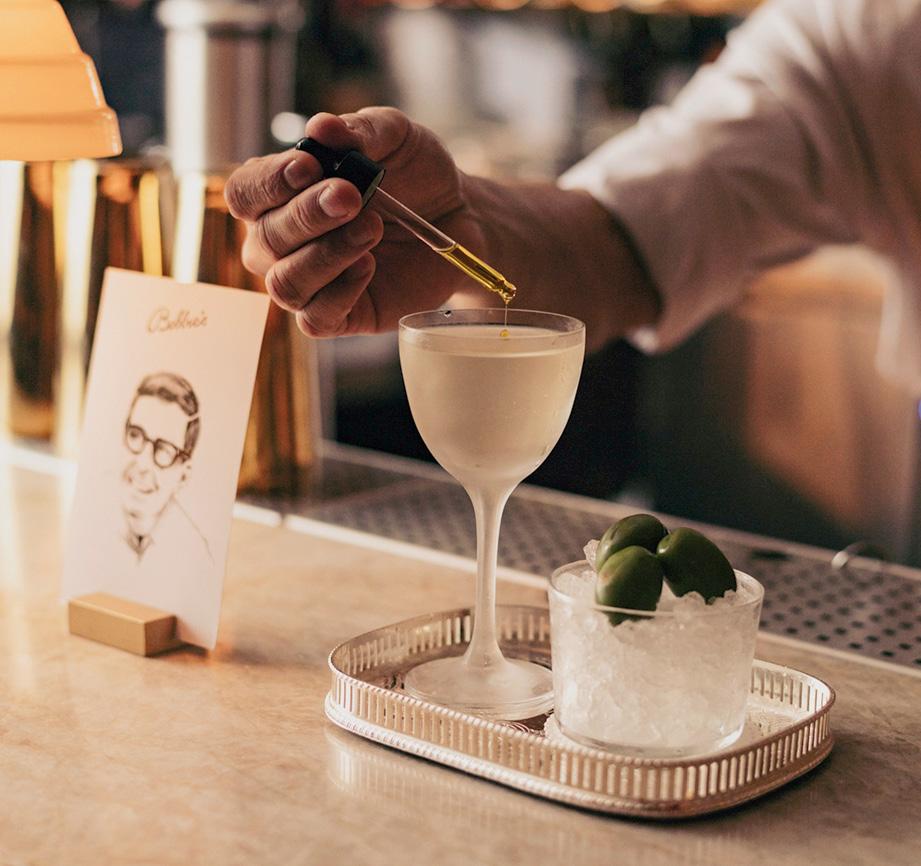


This neighbourhood restaurant is quite simply fire. The team behind 20 Chapel, chefs Corey Costelloe and Dave Allison, cook produce from Dave’s Hawkesbury Stix organic farm simply over flames. Aged to perfection onsite, the Wagyu cuts are the stars here but as part of my progressive dining plan I am focussing on the small share plates. A Fijian-inspired raw fish “kokoda” cures the white fish in coconut milk; the charred baby octopus comes on a bed of creamy macadamiatahini sauce; but it is the garlic prawn pot that will ruin any other version of this dish for anyone who orders it – served with holy basil and Davidson plum the garlic oil here is good enough to drink. One of the best new restaurants in town.

Lazy Bones Lounge is an upstairs music room whose rococo flourishes of swinging chandeliers, thick velvet curtains and oil paintings make it look like an RSL Club reimagined by Baz Luhrmann during his Strictly Ballroom era. Lazy Bones has bands most nights of the week and a range of local mircobrews on tap. I catch an Americana band with a lively crowd.

Four Points by Sheraton Phuket Patong Beach Resort, a multi-award winning property, offers exceptional service, beachfront access, and high-quality amenities. Guests love our comfortable accommodations, prime location, and warm hospitality, making it a top choice in Phuket.
The resort features ve diverse on-site dining options: Sears & Co. Bar and Grill, the award-winning grill and seafood restaurants; Chao Leh Kitchen, known for its Thai avours; The Deck Beach Club Patong, our on-site beach club; and BOGO Happy Hour is available everyday at The Deck Beach Club, Lobby Bar and Pool Bar.


Four Points by Sheraton Phuket Patong Beach Resort 198/8-9 Thawewong Road, Patong, Kathu, Phuket 83150 Thailand

Ideally located on the quieter northern end of Patong Beach, our beachfront location strikes the ideal balance. Far enough from the hustle and bustle of Bangla Road to provide a serene beach retreat, yet just a relaxed 10-minute walk along the shore if you want to explore Patong’s bustling entertainment scene.

Enjoy a wealth of activities, from a 24-hour gym to on-site yoga and Muay Thai classes. Daily kids activities keep younger guests entertained, while Patong Beach offers thrilling water sports, including jet skiing, parasailing, and banana boating. Relax on the soft sands, take a refreshing dip, or enjoy beachside adventure.
The ultimate haven for families with spacious Family Suites, dedicated kids’ amenities, and a variety of daily activities, ensure both kids and parents have an unforgettable stay. Discover the ultimate in relaxation with our all-inclusive package, crafted for your perfect beach retreat in a tropical paradise. Indulge in a seamless and hassle-free escape where everything is taken care of from all daily meals, unlimited drinks at any outlets from 12:00 pm to 10:00 pm, kids eat free and more.




ABU DHABI
Diving deep into Abu Dhabi’s riches, Annabel Fuller discovers underwater beauty, pearl-diving history and happiness in a hammam at Emirates Palace Mandarin Oriental.

Beneath a kaleidoscope of coral, a shimmer dances in the refracted light. Rising like ancient boulders from the sea floor are the massive structures of buttery-yellow brain coral and tucked within their intricate crevices, enormous clams rhythmically open and close, their iridescent shells glinting like ultraviolet eyes.
I’m midway through my first dive in the Arabian Sea, off the coast of Abu Dhabi. I peer closer inside the clam, wondering if any precious gems lie within. For over 7,000 years, travellers have plunged into these waters in search of treasure, many of them pearl divers who helped shape the Arabian Peninsula before the advent of oil. Like them, I’m eager to uncover something extraordinary.
But Abu Dhabi’s riches aren’t just hidden beneath the sea. The city is a cosmopolitan gem where modernity harmonises with rich cultural heritage. I had envisioned a skyline dominated by towering skyscrapers and gleaming facades, but what I discovered was far more nuanced: a city of quiet opulence, steeped in tradition and hospitality, inviting me to wander through bustling souqs and charming side streets.
I am spending my Arabian sojourn cocooned at the Emirates Palace Mandarin
Oriental, where the sense of luxury is almost dizzying. Originally built to welcome dignitaries, this regal property – now a 394-room luxury hotel – stands proudly on the Persian Gulf, commanding its own 1.3-kilometre private beach.
At a kilometre long, this colossal structure is larger than Buckingham Palace and just as opulent. There are over one thousand Swarovski crystal chandeliers, casting light off the 114 domes that pay homage to the pearl, once the lifeblood of the region.
The grandeur here doesn’t intimidate; instead, it draws me in, with each detail reflecting the region’s rich legacy. The hotel is also home to a Michelin-starred restaurant, superyacht marina, an indoor ballroom lined with palm trees, and the aforementioned private beach has pristine white sand imported from Algeria.
I dive into the culinary offerings at Martabaan. Seated by the window, I admire the stunning views of the Arabian Gulf’s crystal blue waters alongside the restaurant’s ethereal pearlescent decor. Renowned chef Hemant Oberoi’s menu features a red pumpkin and coconut soup, followed by succulent Mung Mai chicken marinated in raw mango and grilled in the tandoor.



Reopened under the Mandarin Oriental flag in 2020, this ultra-luxe resort boasts a prestigious address on the Arabian Gulf. The gold-dripping Emirates Palace Mandarin Oriental Abu Dhabi is home to 394 rooms and suites.
Book your stay at Emirates Palace
I may not have turned up a pearl on my morning dive, but I do end up finding another gem, the hotel’s heated marble hammam.
Separated from Emirates Palace by its own discreet entrance, the spa is enveloped by the hotel’s immaculately manicured gardens, exuding a tranquil Moroccan charm. I’m welcomed by lowhanging lanterns casting soft shadows, the gentle murmur of bubbling fountains and
tessellated tiles stretching from floor to ceiling. Soon, I’m led past Jacuzzis, steam rooms and even an ice cave before arriving at my private suite.
Polished Moroccan tiles and scattered rose petals add a touch of romance and the highly skilled therapists bring attentiveness and a soothing touch. Immersed in the royal ambience of traditional Arabesque design, I settle into my slice of hammam heaven.



The treatment uses traditional Teksal techniques – a method involving a vigorous scrubbing process with a textured glove designed to exfoliate and invigorate the skin. This ancient ritual leaves me feeling utterly rejuvenated, as though years of tension have been scrubbed away. Tranquil music sets the mood as fragrant oils and mists fill the air.
Night has fallen as I amble back through the magnificent marble lobby toward my suite. Maybe it’s the date sugar still sparkling on my skin, but I feel somehow more in tune with these gilded walls.
The Emirates Palace is more than an opulent hotel, it’s a living tribute to the dreams of the pearl divers who once scoured these waters. Just as they searched for nature’s rarest gems beneath the sea, the palace tells the story of an era where the shimmer of a pearl was synonymous with beauty and elegance.
Much like the colourful corals, clams and pearls of the Arabian Sea, the real jewels in Abu Dhabi lie below the surface.

Nestled in the lush jungles of Ubud, Kayumanis Ubud Private Villa & Spa embodies the beauty of Bali’s heartland. Each villa is designed with elegant Balinese craftsmanship, featuring private pools, open-air pavilions, lush garden views, gourmet kitchens, and spacious, air-conditioned bedrooms with en-suite bathrooms. With personalized butler service, you can immerse yourself in absolute comfort.
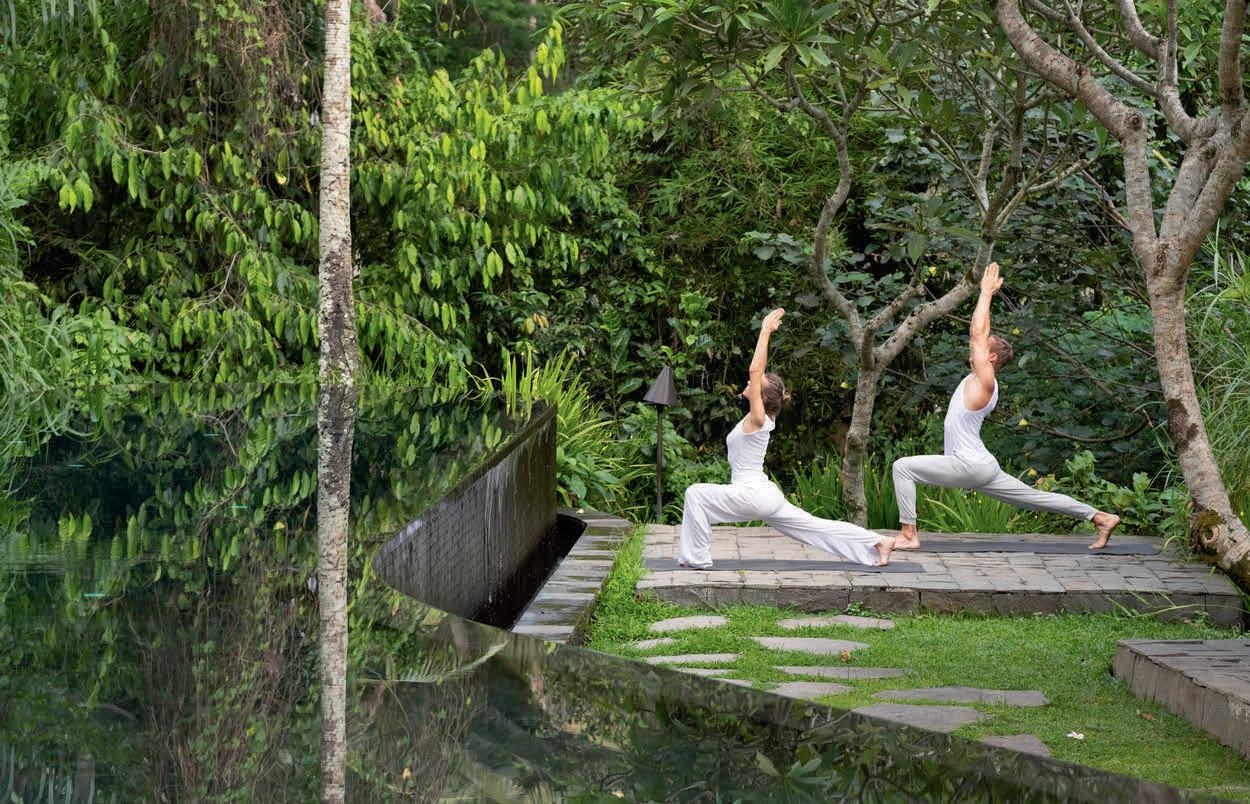


Set along the Ayung River, this secluded retreat offers a sense of harmony with nature, ideal for relaxation and rejuvenation. Savor private dining experiences by your pool, unwind at the awardwinning spa, or explore the cultural treasures of Ubud, including traditional markets, temples, and serene rice terraces.

A new, mature Gold Coast is about more than just good weather and great waves. Tom Angel, bar manager at e Exhibitionist Bar takes us through his perfect day on the Goldie.

The Exhibitionist Bar is on the top floor of HOTA, the Home of the Arts, a multi-storey space for art, entertainment, great food and killer drinks that represents the changing face of the Gold Coast. Once a destination mainly for surfers and clubbers, the Gold Coast is now a hub of sophisticated offerings from supper clubs to sustainable morning coffee, still surrounded by some of the best beaches in the country.
“What I love about HOTA is the quality of what we produce, from the quality of the
artwork to the quality of hospitality,” says Tom. “And it shows that the Gold Coast is growing up and getting away from the night clubs and the meter maids.”
Exhibitions like Here and Now: Gold Coast Triennial (‘til February 16) and A Bigger View (‘til June 2026) showcase a huge range of modern artists and Tom’s bar offers cocktails inspired by the exhibitions themselves; the Basic Peaches is slushy with vodka, sour peach, limoncello and vanilla foam and is the triennial signature drink.




Side Piece Coffee in Varsity Lakes is the perfect morning stop for a caffeine hit. “The coffee is always amazing,” says Tom. “Working as a bartender, sometimes you have a few drinks after work and you need something more hardy to soak them up.” The coffee shop is becoming well-known for its build-your-own breakfast model so you can have things as hearty or as light as you wish.
“I have two sons and the youngest is a mad fisherman,” says Tom. “We go to Tallebudgera Creek and it is also great for a swim as the water is clear and not fast moving. If you’re lucky you will even see dolphins coming in and going out to the ocean.”
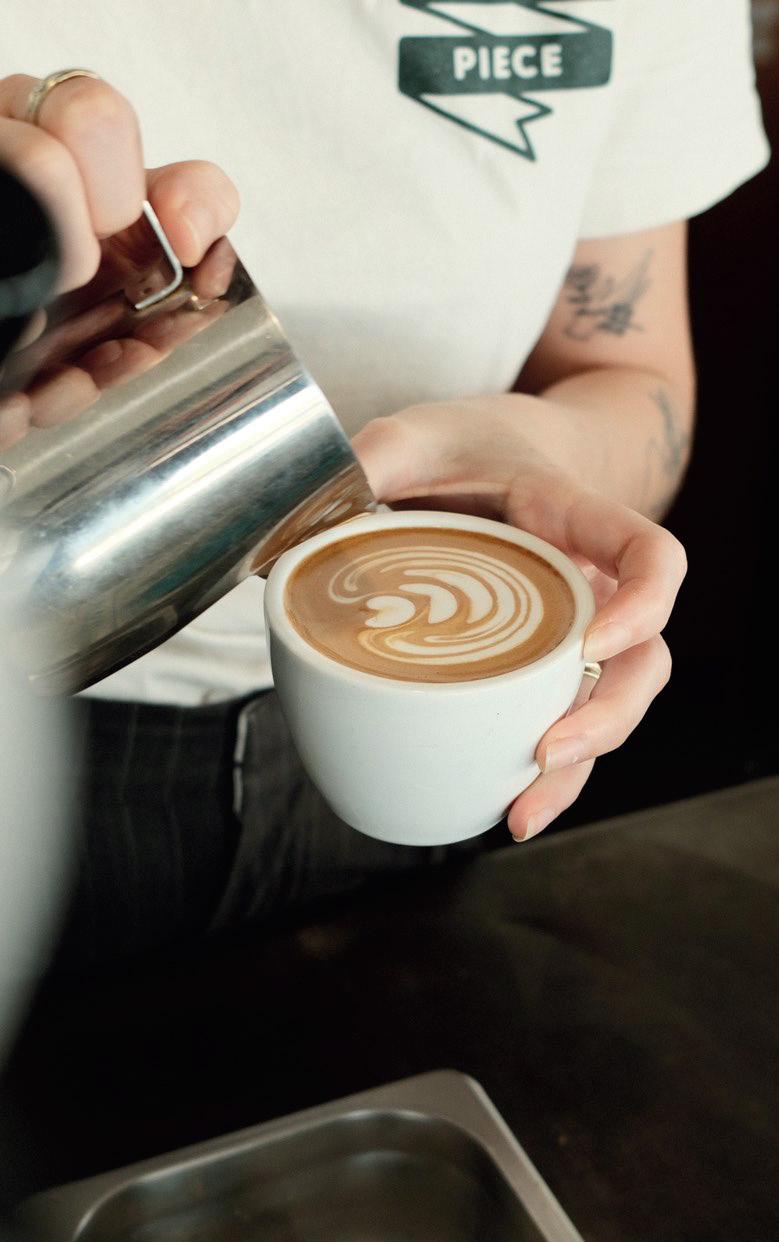
Flor is a bottle shop in Burleigh where you can go and get some bread, cheese and chips – and a sparkling wine if you like – and then sit along the beach in Burleigh,” says Tom. “You can’t eat out all the time and this is a nice way to do it on the cheap. They also have industry magazines so you can sit and have a read.”
If you’re looking for an indulgent lunch spot, then you can’t beat the views at Rick Shores at Burleigh Heads. “The team at Rick Shores also has a restaurant in Brisbane as well as Southside and they are about to open in Nobbys Beach; anything they do, they absolutely nail it with the food and the service. Rick Shores is Asian fusion and they do these spicy dumplings. I don’t usually eat spicy food, but it is worth going through the pain for these dumplings.”
Old Quarter Coffee Merchants is part social enterprise and part coffee roaster. They source 100 per cent of their beans direct from south-east Asian farmers and aim to connect communities through the morning ritual of having a coffee. “They just opened a shop in Southport and their coffee is so good,” says Tom.
Tom’s Exhibitionist Bar in HOTA takes its drinks very seriously. “We have a dirty martini up at the bar and we make very, very good martinis,” he says. “We have a recipe that we worked on for a long time; we make our own brine with three different types of olives and obviously I have to do a bit of quality control.”

“Cantina is a nice little bar in Mermaid Beach that does great food and the couple that owns it are lovely,” Tom says. “They change their menu all the time but the other day they were doing a pork cutlet and some really nice rice and beans.” Cantina is also known for its sour cocktails.
“Cadillac Supper Club is a New York-style bistro; I go and order too many oysters and steak. The drinks here are so good, they do a freezer martini so it comes out extra, extra cold. They took over the old whisky bar and they had all this leftover whisky so they decided to create this “infinity whisky” by combining them all. Now they make a Boulevardier (whisky, vermouth, Campari) with the infinity whisky.”

In Bhutan, spirituality is observed at every turn, in deed as well as in mind. Jeremy Bourke discovers why this Himalayan kingdom continues to have such a hold on travellers and nds that even the most casual observer will soon be immersed in the country’s mysticism, body and soul.

I’m expecting to be dazzled by Bhutan. Hanging off the Himalayas between raucous India and mystical Tibet, the fabled “happiest country on earth” should offer wonderment at every turn, and it delivers on the flight in, the plane dipping and twisting to counter the fickle winds in the dogleg valley approaching Paro International Airport.
But soon I realise that, while it’s busy, Bhutan isn’t bustling. The most energetic act I observe is the armwaving of a white-gloved policeman on point duty beneath an ornate gazebo in Thimphu, the capital. Spirituality informs most aspects of their lives, with temples the dominant feature in any community, while devotional flags flutter above every home and along roadsides.
The Kingdom of Bhutan has almost mythical status amongst travellers,
a primarily Buddhist enclave that is known for its dramatic scenery and devotion to ancient crafts, spiritual wellness and sustainability.
I’d have thought the 51-metre-high statue dominating the hillside above Thimphu, the Buddha Dordenma, with 125,000 mini Buddhas within its meditation hall, would be the beacon for devout Bhutanese. But my guide Tshewang shows me the true heart of the country’s devotion, the smaller but busier National Memorial Chorten, a white-and-gold stupa in the centre of Thimphu that’s a hub of activity. Locals perform the ritual of circling –always in a clockwise direction – the chorten three times while others sit in shelters at the side. Many are elderly who congregate here daily; it’s their senior citizens’ centre.



The chorten has several levels of spiritual imagery: intense, colourful, cluttered. The main statue depicts the union of man and woman, but with many small figures suppressed below their feet. The significance is in the postures and hand gestures. “You could do a PhD on just one deity here,” Tshewang says.
At every chorten, temple or dzong – the latter a particular Bhutanese blend of fortress, government office and monastery – I must show respect in several ways: no shoes, hat or
photographs. After prostrating himself before the deity, Tshewang will make an offering, usually just a small banknote. But in any temple will also be water or wine, and food, from fresh items to sweets. It’s not the size or type of offering that matters, Tshewang explains, but its sincerity. A common sight at temples is lines of golden cylinders known as prayer wheels. Inscribed with prayers, people set them spinning on their spindles in turn so that their messages can constantly be expressed.

HOTELS AND RESORTS, GRANTING ACCESS TO THE EXTRAORDINARY
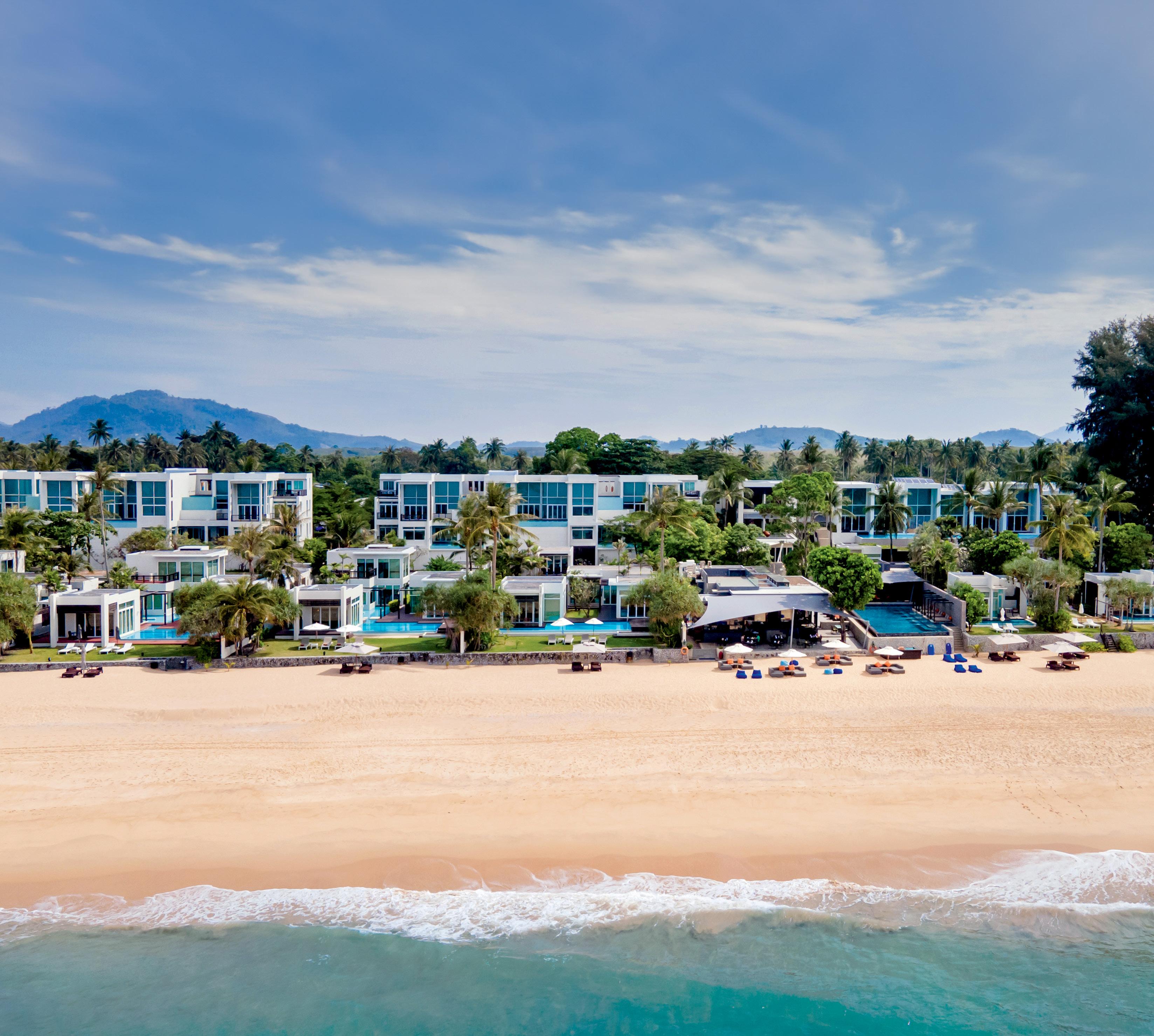


Discover Aleenta’s unique luxury retreats in Thailand. Aleenta Hua Hin-Pranburi offers beachfront tranquility with stunning ocean views. Aleenta Phuket-Phang Nga immerses you in tropical paradise, featuring private pool villas and beachfront access. Aleenta Chiang Mai combines modern elegance with traditional charm in a peaceful countryside setting. Each Aleenta property is the proud recipient of a MICHELIN Key and blends personalised service, eco-conscious design and authentic Thai hospitality, creating unforgettable experiences tailored to rejuvenate your mind, body, and soul.





Because of their significant role in Bhutanese life, even humble temples often occupy strategic ground, and there’s a most original one in Punakha, high above a river and approached through a maze of rice paddies. Featuring an uncommon pagodastyle, Khamsum Yulley Namgyal Chorten is macabre, its interior festooned with skull motifs. The present king of Bhutan, Jigme Khesar Namgyel Wangchuck, was told by an astrologer as a teenager to build a “magical tool” to ward off obstacles to the throne. Hence there’s a crown with five skulls on the head of the temple’s bodhisattva (god), indicating that he has overcome the “five poisons” (desire, anger, ignorance, pride and jealousy).
Bhutan also injects spirituality into physical healing, the countryside is dotted with

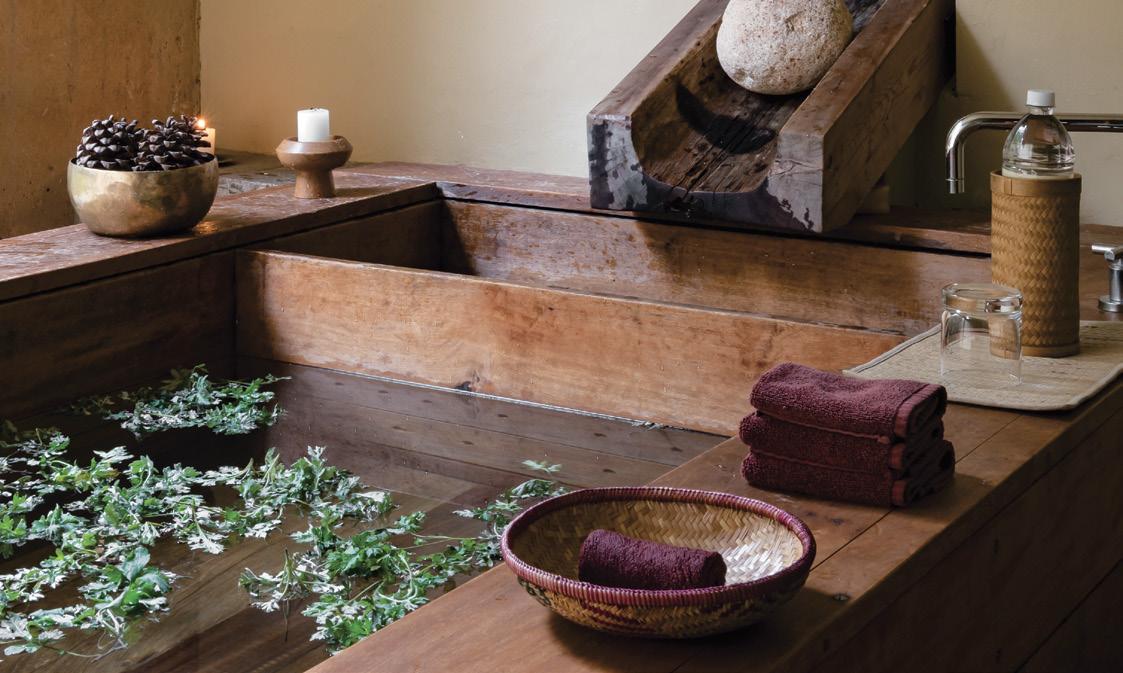
dotsho, modest baths into which heated mineral-rich stones are submerged. Locals will stay for several days to soak injured limbs or the like in the natural waters from the mountains. The tradition, like many things in Bhutan, was born of a legend. The mystic Guru Rinpoche, said to be a reincarnation of Buddha when born from a lotus petal in the 8th century, treated an injured vulture by bathing it every day in the mountain water until it could fly again. An old man I meet at a bath above Paro, at a spring blessed by Rinpoche, plans to stay for a week to treat his injured spine.
Stone baths also make appearances in high-end resorts, including full-service inhouse spas where Eastern wellness lines up with Western pampering. Six Senses has the baths in several of its properties in Bhutan’s
main western valleys. For private pampering, many of its multi-bedroom villas have their own treatment rooms. One of Aman’s five resorts, at Gangtey, places a bath in a private stone hut in the forest, while COMO’s Shambhala Retreat in Paro features two private hot-stone bathhouses.
I emerge from my treatment at Six Senses Thimphu to breathe in the pure air of the Himalayas, at which I can look but mustn’t touch. In respect to the spirits, Bhutan’s peaks over 6000m were closed to climbers in 1994, and 10 years later all mountaineering in the kingdom was banned, meaning its senior peak, Gangkhar Puensum (7570m), is the highest in the world still unclimbed. Fortunately, there are plenty of paths available for travellers to Bhutan who are seeking a more spiritual high.


Taking its cues from classic railcar carriages, and using actual vintage stock that invoke the golden age of travel, this Khao Yai resort is the passion project of designer Bill Bensley. Ron Gluckman makes tracks for this whimsical stay.

e details

Hotel designer Bill Bensley is famed for resorts that offer fabulous flights of fantasy; this may be his best – the train-themed InterContinental Khao Yai Resort, where guests stay in luxuriously refurbished train carriages. Check in at a reimagined centuryold train station, then follow recycled tracks to your suite in an actual carriage.
Rooms are constrained by the dimensions of old carriages, yet nothing feels tight. There’s an Art-Deco bathroom with shower, and old books and vintage oddities for amusement. I loved the classic railway lighting and buckets dumping water in the private pool on my porch overlooking the lake, where I spent the weekend spotting tropical birds.

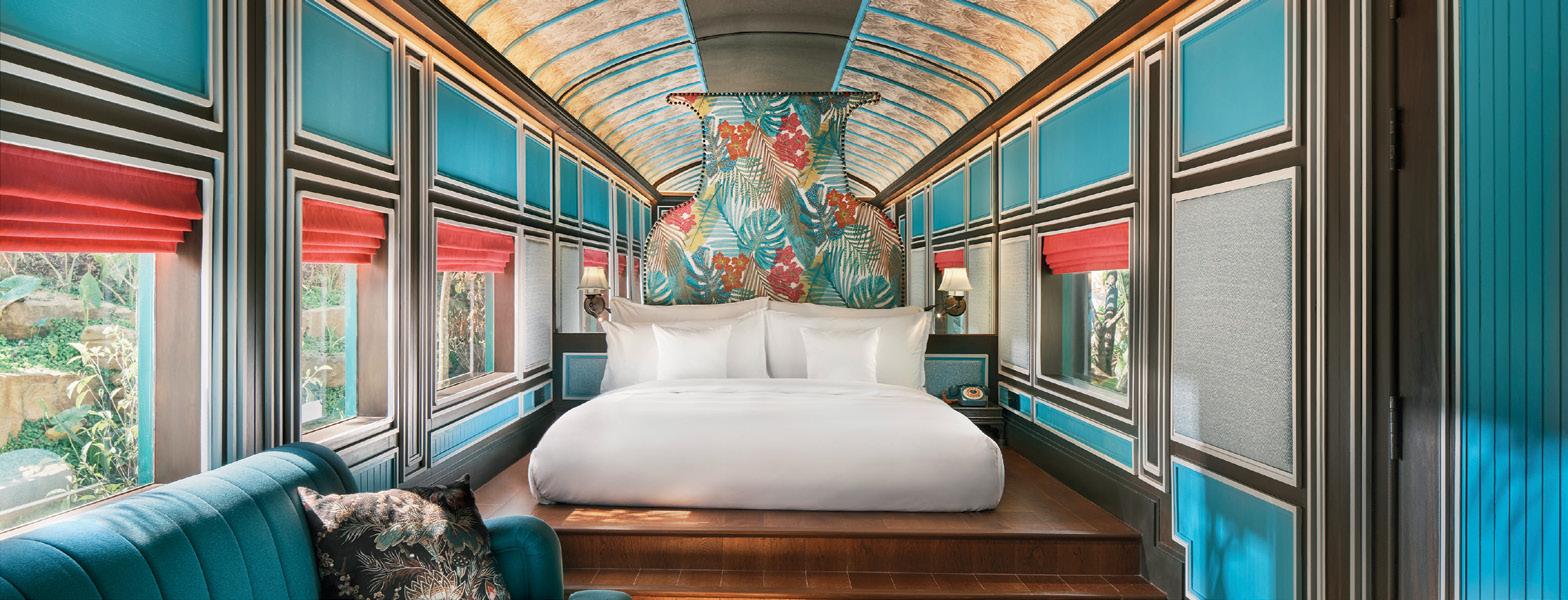
The train-theme keeps rolling in the restaurants. Bensley always crafts a story for his resorts. This is described as the creation of retired train conductor Somsak. Sonying’s Kitchen, named for his wife, features local farm-to-table dishes in a bright blue dining hall melding Art Deco with American diner. There is also a classic French restaurant, Papillon, with upscale bar in a trio of rail cars, and a stately tearoom as radiant as the Orient Express.
Plunging into the past, and the mesmerising recreation of the grandeur of rail travel, spun in exquisite Art-Deco carriages, vintage dining cars and rolling bars, throughout a property that seems like a marvellous train movie set. And it’s endlessly fun to discover all the whimsical touches of design genius –without the sway of an actual old train.
The setting is idyllic, overlooking Swan Lake in densely forested land alongside Khao Yai, Thailand’s first national park. Only two hours from Bangkok, it still claims wild elephants and the surrounding countryside is called the Napa Valley of Thailand and abounds with wineries and organic farms selling marvellous homegrown products.



Bensley is among the boldest hotel designers; his properties rocket up the world’s best lists. For this masterpiece, he spent years searching out old Thai train carriages, refitted them with antiques, and had them craned into viewpoints around the lake. The details are boggling – there is even a plush spa in a carriage and train-themed workout room. All rooms are gorgeous, but upgrade to a train carriage suite. Book your
MELIA HO TRAM, VIETNAM
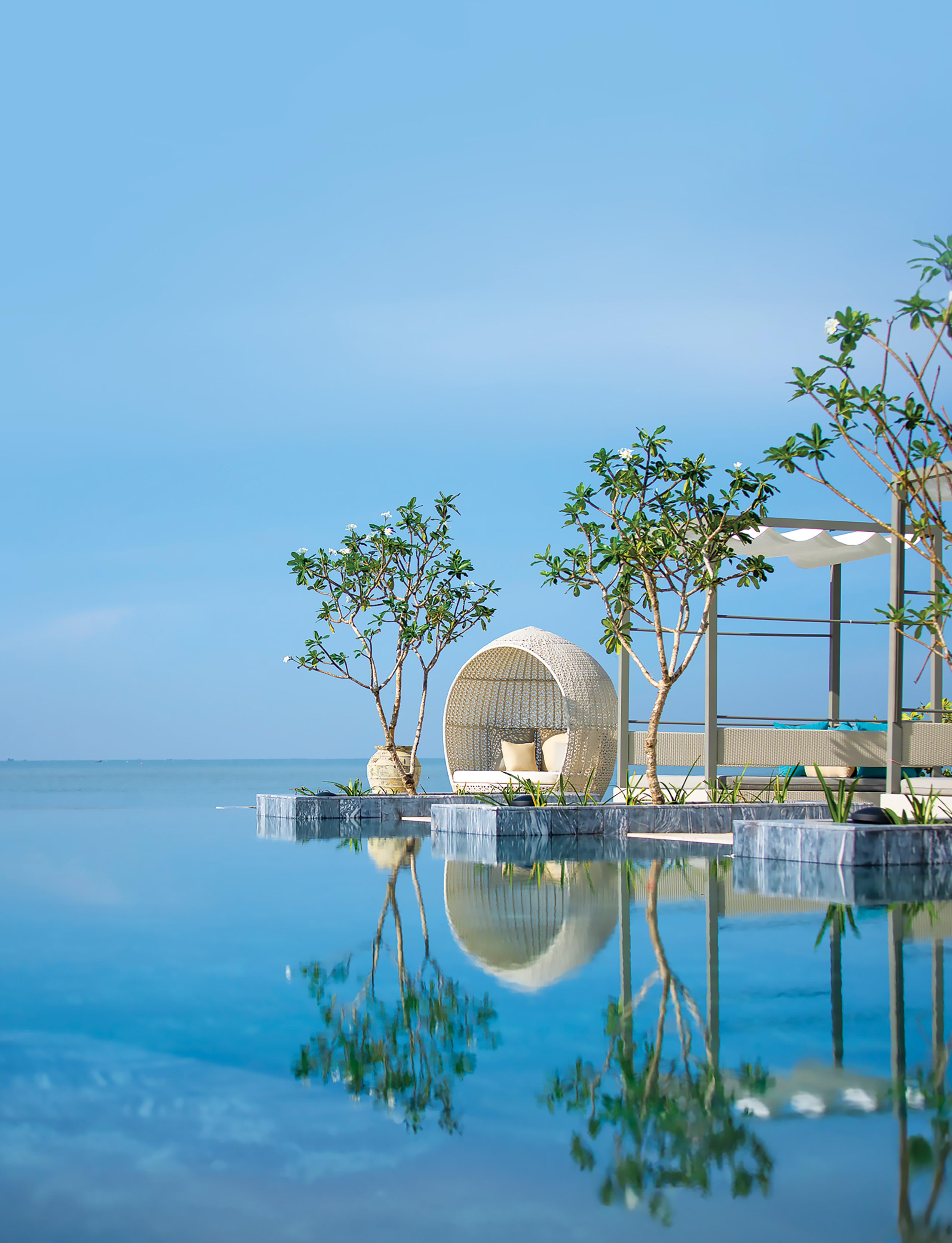
Vietnam is often associated with stress-inducing pedestrian road crossings and crowded cities but a host of new resorts are getting onboard the wellness trend. Samantha Brown heads to two very di erent resorts, both designed to help visitors switch o .


“You can do it! Your friend yesterday only lasted one minute.” These are the encouraging words my massage therapist calls out to me as I coerce my body into the freezing cold ice bath in front of me. Feet in, now knees, then waist. Just one more step until I’m submerged up to my shoulders. I’m in, and now I’m desperately watching the timer countdown from two minutes. As someone who refuses to get into a swimming pool unless it’s heated, and having just come out of a piping-hot steam room, I was determined to conquer a serious physical (and mental) challenge: hydrotherapy treatment.
I’m in Vietnam for a week of wellness and while this South-east Asian nation may be known for its busy road crossings in the capital of Hanoi and the bustling city of Ho Chi Minh I am heading further afield to two beachfront havens: Melia Ho Tram Beach Resort and TIA Wellness Resort, both well


versed in encouraging us to put down our phones and turn our minds on silent.
I begin on Vietnam’s south coast. On a two-hour drive from Ho Chi Minh City, we leave the fluorescent neon lights of the city behind as the scenery gives way to farmland, rice paddies and then coastal scrub. We arrive at Melia Ho Tram Beach Resort, a sprawling beachside property in an area known for its exceptional kitesurfing conditions, meaning there’s a nearly constant sea breeze that provides a welcome respite from the heat.
One of the first activities we have planned is to wander along the resort’s Wellness Pathway, a gentle walk around the onsite lake with eight signposted stops – each a reminder to pause and unwind in a different way. My favourite is the reading stop, a plush daybed between swaying palms with views over the lake and a charming lending library stocked with paperbacks.
Halfway through my meander, I walk across a bridge to a tiny island in the middle of the lake where a shaded platform is decked out with meditation cushions. Another stop reveals an easel and art supplies, and one invites me to kick off my shoes, sink my feet into the soft grass and engage in some grounding therapy.
Inspired by the Japanese custom of shinrin-yoku (forest bathing), where wellness is associated with therapeutic time spent in nature, the pathway is genius in its simplicity, inviting guests to be present while walking through the resort’s grounds.
“We wanted our green space to be used effectively,” says Amandine Krieger, Melia Ho Tram’s director of guest experience and quality. “We wanted to develop a concept that’s accessible for beginners and those more experienced. We simply forget sometimes to sit and listen to what’s around us and use our senses.”
After an introduction to mindfulness, my next stop is further north in Da Nang, a coastal village perched between the picturesque towns of Hue and Hoi An. TIA Wellness Resort has villas tucked away on the periphery of the resort, allowing the main building – home to the reception, main restaurant and creative workshop space – to take centre stage in all its moody, dark-toned glory. It’s flanked by the sparkling white of the spa on one side, and a spectacular beachfront infinity pool and light-filled second restaurant on the other. TIA was recently recognised as the number 10 spa resort globally in the “Top 20 Destination Spa Resorts in the World” for Condé Nast Traveler Printed on a piece of card is my personalised itinerary and TIA’s general manager, Ramon Imper, explains why I am so busy. “People are looking for more than a sun tan on the beach and drinks every day. Holidays are
precious and you want to get something out of it.” Ramon is right. The itinerary feels just right as I float between yoga classes, facials, massages and the aforementioned hydrotherapy (yes, I lasted the full two minutes and came back for round two). I wake one morning for a sunrise tai chi class atop the Marble Mountains – five picturesque limestone peaks just out of Da Nang, each named after the five elements. Later, as I sit in a creative workshop on my last full day in Vietnam, glueing images to a vision board that depicts my hopes for the year, I reflect on what I’ve learned about myself, and importantly, how I want to live when I get home.
Rather than a suitcase of souvenirs, I’m heading home armed with my own personal wellbeing toolkit of new skills. I glue two words onto my vision board that I know will stay with me: “create balance”.
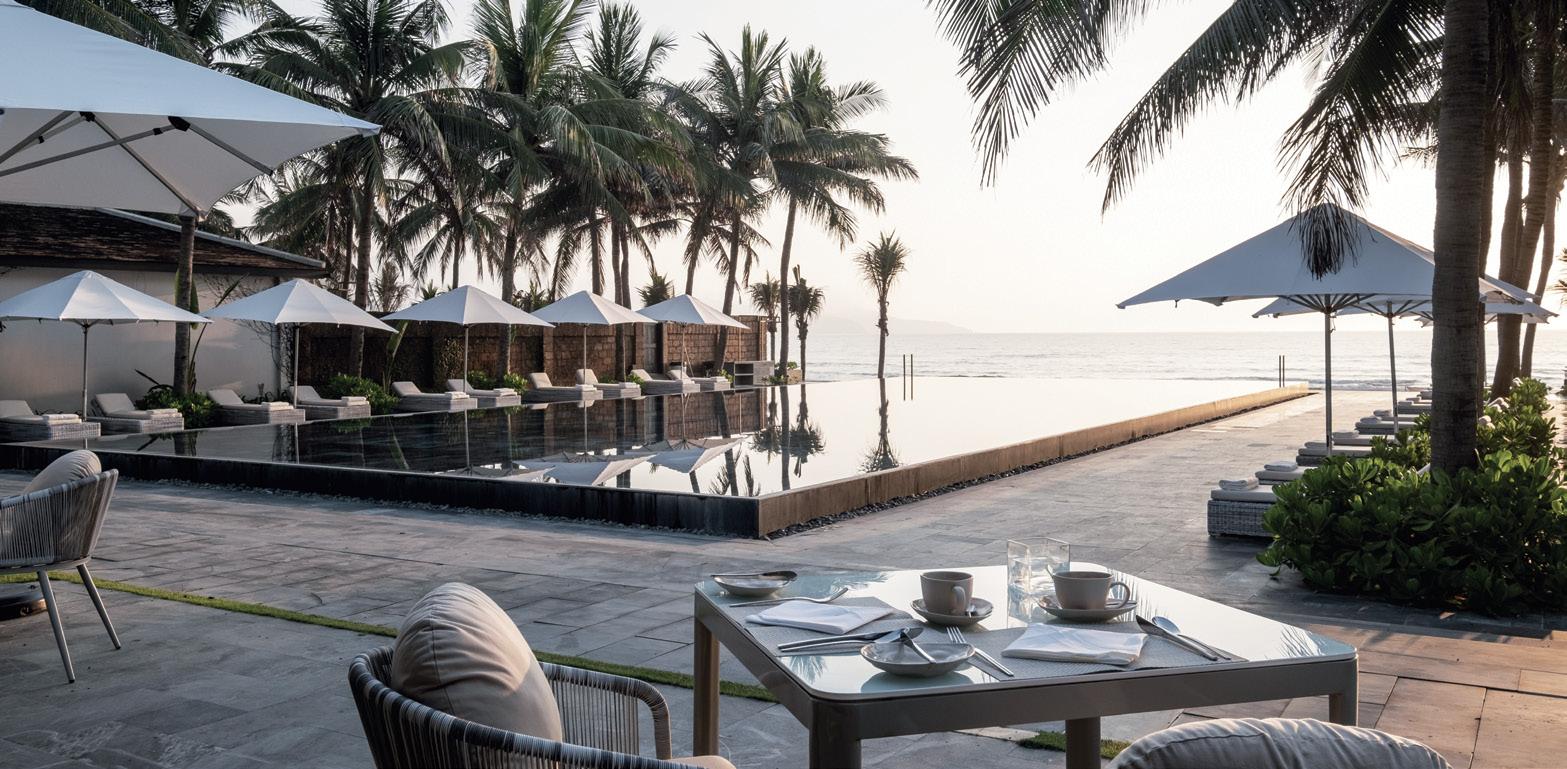



Invite some extra balance into your stay at Melia Ho Tram Beach Resort with a customisable four- or sevenstep Wellness Package, incorporating beauty treatments, detox menus, wellness activities and turndown rituals.
Book your stay now

TIA Wellness Resort offers Wellness Inclusive and Retreat Inclusive packages, allowing guests to focus on their individual wellbeing goals through creative workshops, nourishing menus and an extensive list of holistic spa treatments.
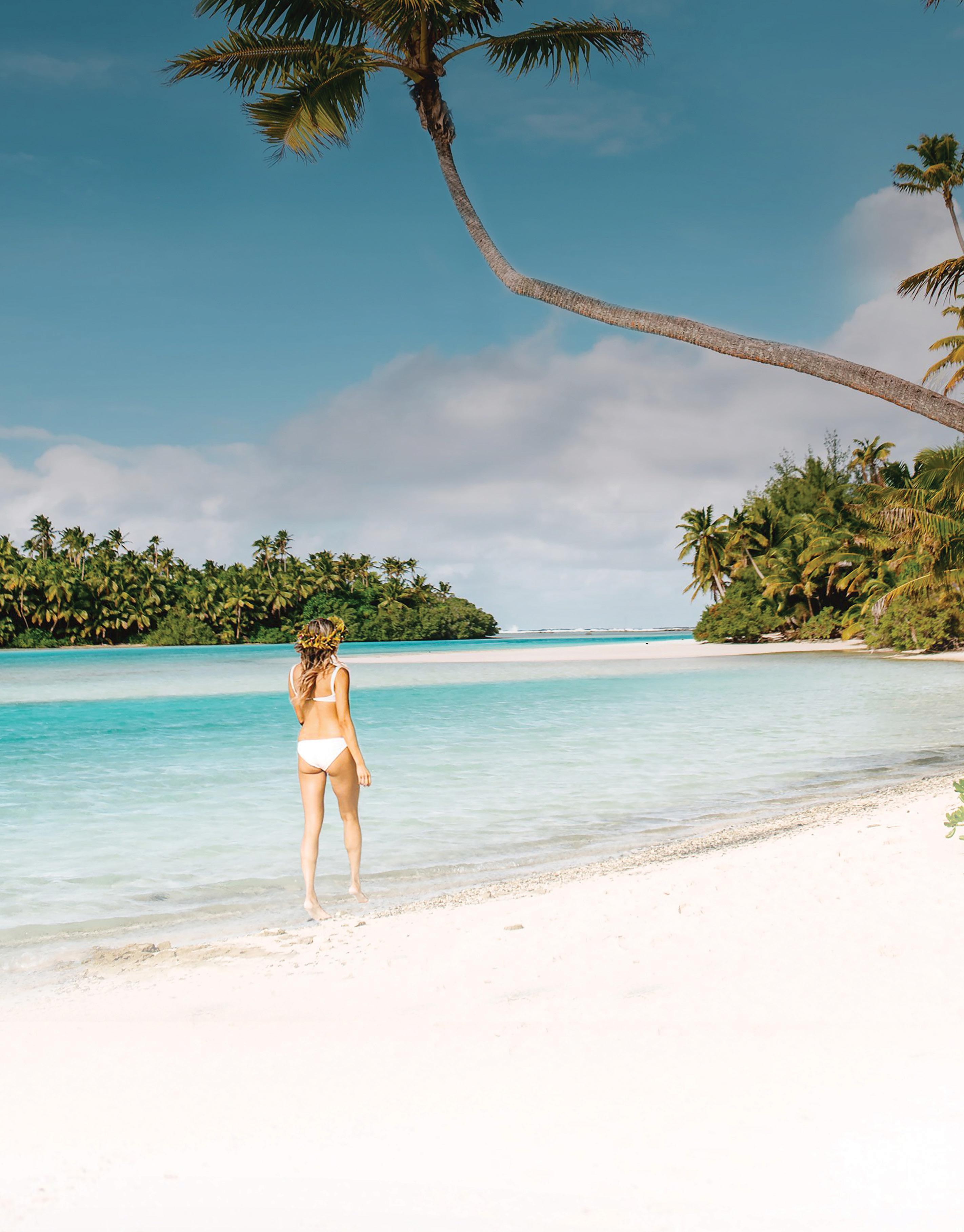
There’s a local Cook Islands law that states no building can be taller than the coconut trees around it. You also won’t find traffic lights or stop signs in this South Pacific paradise. It’s like going back to simpler times yet still being able to enjoy today’s modern conveniences. Book your Cook Islands getaway now and have the ultimate South Pacific holiday you’ve always dreamed of.
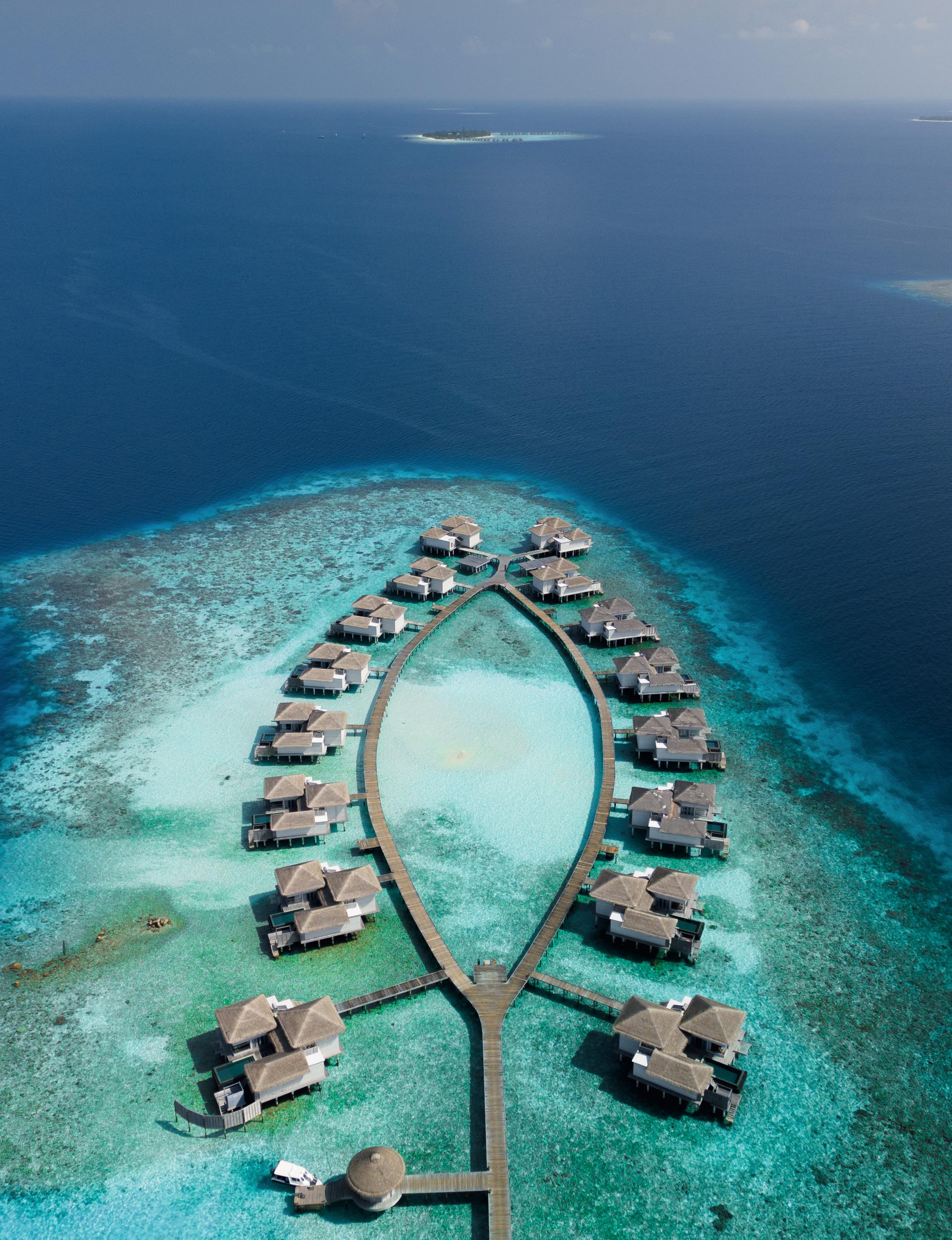
Salty Luxe (aka Sarah Royale) pays a visit to Ra es Maldives Meradhoo situated on Gaafu Alifu Atoll where you will be taken care of by a Ra es Butler for all your island needs.






Ready to explore?


On a Coral Expeditions cruise of the Kimberley region, Siri Smith experiences the raw power of Horizontal Falls, the tranquillity of the meandering rivers and discovers a new appreciation for the area’s rock formations.
I’ll never view rocks the same way again. For twenty-something years, I lived with a mad rock enthusiast; my mother is an archaeologist who often brought home what appeared to be just ordinary pebbles, and I’d reluctantly play with my “Palaeontologist Barbie”, wishing for sparkles instead of stonewashed overalls.
Yet here in the Kimberley, in the heart of Western Australia’s untamed outback, I stand in awe of stories surrounding the ancient stone and immense powers at work.
I am onboard Coral Expeditions’ Xplorer – a purpose-built, flat-bottomed boat – gliding past magnificent ripples of ochre, basalt and beige.
Coral Expeditions guest lecturers
Anne O’Dea and Steve Winderlich explain that the oldest rock formations in the Kimberley, the Wunaamin Miliwundi Ranges, formed hundreds of millions of years ago, before life on Earth began. The Kimberley Block – the name of this geological section visible even from space – is the result of tectonic plates crashing together. Folding and warping under pressure, the softer layers allow the hard sandstone to bend. “Think of the pressure and the temperature it has to be to make that happen,” says Steve. Back on board our mothership, the Coral Discoverer, we find 72 guests,
comfortable cabins, gourmet dining and a focussed crew who cater to our needs with care. The Xplorer, three Zodiac inflatable boats and an open bridge captained by Master Daniel White provide the platform for us to witness the Kimberley’s ever-changing moods up close.
I’m on Coral’s last Kimberley expedition for the year and the dry season heat is creeping in. During this time, the Yawuru – this region’s traditional owners – calendar tells us the turtles are preparing to mate.
On another expedition to Camden Sound, I sit in a Zodiac and watch as Montgomery Reef (the world’s largest inshore reef at 400 square metres) rises from the ocean. As the tide recedes just twice a day, small cascades form as seawater pours off coral terraces; within minutes, the reef has formed a wall around the Zodiac. “If you see a turtle, it’s yours,” says Steve. “No need to point it out, because it’ll be gone before anyone else sees it.” Later, I spy a dark shape under the water, before a small green head surfaces for air then disappears as quickly as it arrived.
The following day we visit the region’s famous Horizontal Falls, which are formed by staggering tidal forces that make the waters cascade between the rocky outcrops.
For now, boats are allowed to pass through its gorges. By 2028, access will be restricted; a move to safeguard the area known to traditional owners as Garaanngaddim.
I’m among the few to experience Horizontal Falls from the water over the next four years, a rare privilege. Our skipper guides us toward the first break in the iron cliffs, the 24 metre “wide gap” (the first set
of falls). Whirlpools stir the water into a flurry of foam, the current battling the propellers of the Zodiac beneath the surface. Just like that, we’re hurled through to the other side. We then slow down to take in a “narrow gap” (the second set of falls), as millions of litres of water thunder, creating a 1.5 metre shelf. I’m struck by its sheer power, considering myself lucky to be in its presence.


After our adventures at sea, we get acquainted with the rivers. Floating down the Prince Regent River, morning light filters through the leaves of mangroves and glitters on the surface of glow-in-the-dark green water.
We’re here while the tide is high; any later and the Xplorer would have to crawl out of sludge like the slimy mudskippers found on the estuaries. Our moustachioed expedition leader Sam Ashton introduces us to “shinrinyoku,” the Japanese practice of forest bathing. We fall silent, letting the Kimberley sound wash over us. We listen to the whispers of mangroves and whistles of distant birds, the silence broken only by branches brushing against the Xplorer. “Talk about getting up close and personal with nature,” says Sam.


We head out on a few more boat trips to take in the walls of ancient caves carved by temperamental tides. Gwion Gwion (rock art featuring the figures Kiro Kiro and Kujon) and Wandjina (rain spirits) are traditional tales of a time long before ours. Venturing inland, dynamic Gwion Gwion figures dance across the rock in shades of copper. The Wandjina with their large eyes and halos are an emblem of the Worrorra people. Etched into the rock are stories of creation and ancestors, of spirits that shaped the land as it is today passed through millennia.
Peering once again at the staggering geometrical cliffs of the King George Sound, I realise that the rocks that I was given as a child – that I once considered tedious and mundane – are the tangible evidence of an ancient world.
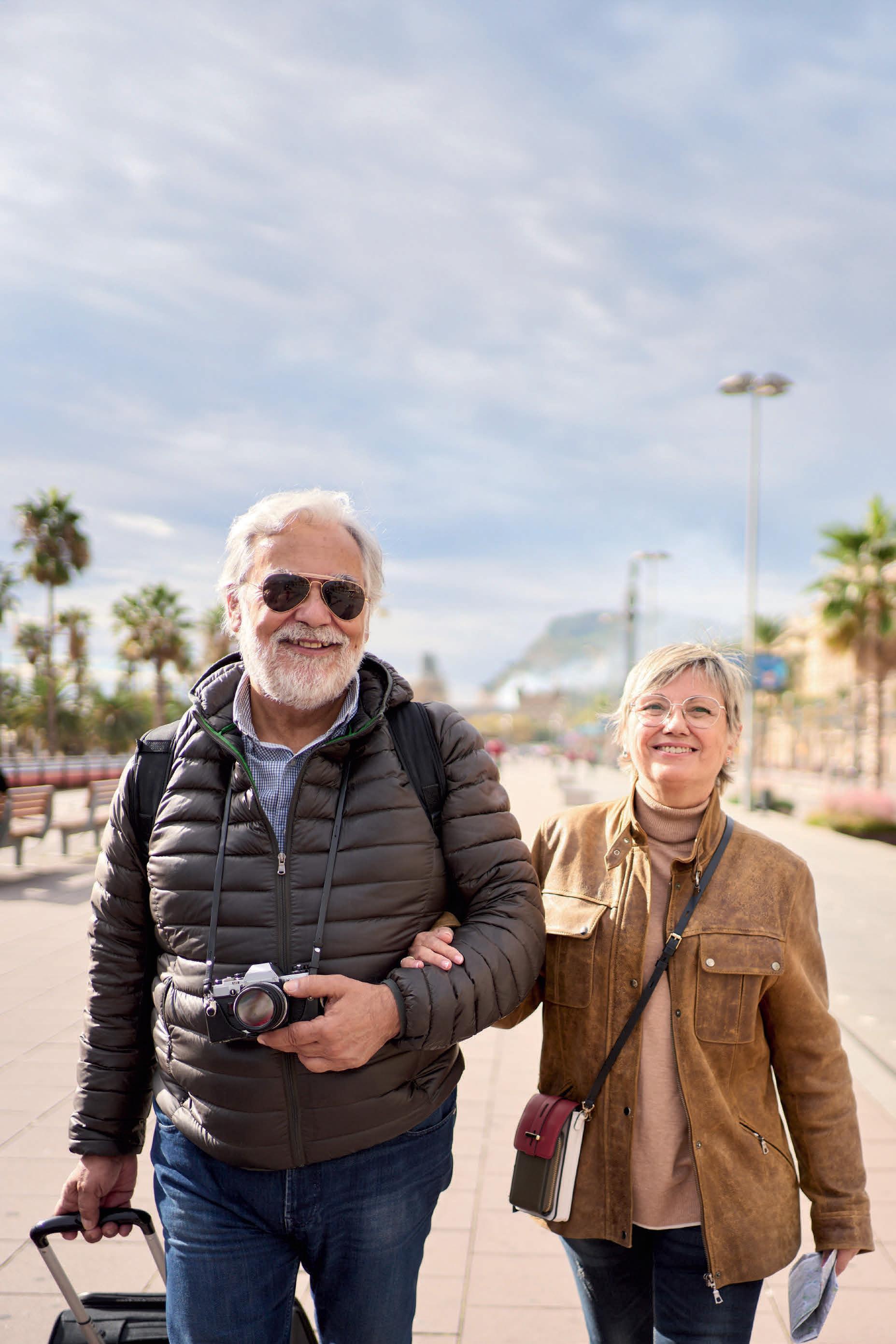


While most travellers head to museums, galleries or landmarks, and increasing number of travellers are including supermarkets on their cultural tour when arriving somewhere new. Stephanie Mikkelsen swaps audio guides for aisle directories, to investigate this latest travel trend that is too good not to check out.
Only one grocery store in and I knew I’d need another suitcase for the trip home. I was on a whirlwind supermarket tour of London, having already undertaken similar sprees in Lisbon and Cairo; putting local stores at the top of my itinerary, instead of more traditional tourist attractions. I’m not alone in this habit: “grocery store sightseeing” content continues to grow on social media, from videos of “Unusual things you’ll see in a French supermarket” to clips of gargantuan groceries in an American Whole Foods.
For these creators, going to a supermarket while travelling is a cultural experience. And according to Expedia’s Unpack ’25 report, the appetite for “goods getaways” shows no sign of slowing down. “Travellers are going the distance in search of treasures they can’t get at home and can’t go home without,” the report says. “In addition to sightseeing and visiting tourist attractions, travellers are also frequenting local supermarkets and grocery shops to find regional delicacies.” The report reveals 39 per cent of tourists will visit a grocery shop while away and 44 per cent shop with the intent of buying goods unavailable to them at home.
ILLUSTRATIONS BY KATIE FORD

“supermarkets tell you so much”.
Good grocery stores represent a snapshot of the communities they serve. From the products on the shelves and layout of the aisles, to how shoppers interact with each other; wandering through a supermarket can teach you about a place’s heritage and the habits of the people that live there.
Chefs are not immune to the allure of a foreign grocery store either. Joseph Abboud, owner and chef at Rumi in Melbourne, says
“You’ll find something different or something you don’t understand, right down to the biscuits and types of junk food you see,” Joseph says. “It’s an insight into what people are eating and how they’re eating.” This insight could come by finding never-before-seen pasta in an Italian SPAR, admiring a wall of beautifully wrapped butter at La Grande Épicerie in Paris or watching locals use the self-serve honey dispensers at a Cape Town Pick n Pay. “You’re almost seeing into people’s homes by going into supermarkets,” continues Joseph. “When
you go into restaurants, you get a packaged version of culture; when you go into supermarkets you see what’s an important part of the culture without being told.”
It’s a sentiment Claire Dinhut, a creator, writer and cook (also known as Condiment Claire on social media), agrees with. In France, Claire says, a trip to a local grocery store can show that French food isn’t all high-end white linen tablecloths and escargot. “The average person isn’t buying that at the grocery store every day,” she says. “And so, I think to be able to go into a grocery store and see the items that are, for example, on the front shelf tells you what people are reaching for, what they really use.”
Having an unadulterated window into local food culture feeds into tourism’s voracious appetite for the authentic. Travellers want it all – authentic experiences, authentic cuisines, and authentic encounters – and supermarkets meet this demand with a hyperlocal lens often unmatched by museums, galleries and ruins. By exploring local grocery stores, visitors become part of the community’s culinary narrative, learning not only about food but also about the values and traditions that shape it.
“Even when I go back to the USA, I make a point of at least one trip to a big supermarket,” says Elizabeth Minchilli, a Rome-based American writer and author, who also runs food tours across Italy. “And it’s interesting to see the real estate that’s given to certain products. For instance, in the States, the frozen food aisles are, like, half the store. [In Italy], the frozen food, it isn’t even a full aisle. It’s like a case.”

Not all supermarket sightseeing is culturally motivated. The FOMO (Fear of Missing Out) factor also comes into play. On TikTok, there are almost 200M posts mentioning Erewhon, an independent supermarket with several locations across Los Angeles. Unsurprisingly in the City of Angels, this is not your average supermarket. In fact, it has been dubbed “the most expensive grocery store in America”. A Yelp listing for its Beverly Boulevard location has more than 1,000 reviews and Erewhon’s viral celebrity smoothies – blends designed by Hailey Bieber and Sabrina Carpenter – pull in tourist crowds happy to fork out a wallet-busting US$20 for each mix of pureed fruit and non-dairy milk.
Erewhon’s curated displays of flawless fruits, spot-free vegetables and pantry products also receive TikTok airtime, in the form of shopping hauls, aisle tours and posts by visitors in disbelief at the prices.
US estimator Growjo projects Erewhon’s yearly earnings to be around US$194 million,
with its stores generating about US$2,500 per square foot of floor space – more than four times the average grocery store in the United States. Supermarket sightseers have undoubtedly contributed to those astronomically high figures and will continue to, as Erewhon promises a window into the exclusive lifestyles of the LA glitterati.
Supermarkets trending on TikTok and Instagram, and even those in city centres, aren’t necessarily the most authentic representations of food culture, however.
“In Italy, there’s a lot of pop-up supermarkets in the centre of Florence, Venice and Rome, and they’re like mini supermarkets, which just cater to tourists,” Elizabeth says. “I would suggest [tourists] leave the historic centre and go to a bigger supermarket if you really want to have the true experience, because the ones in the centre are selling pre-made sandwiches and weird things that they know the tourists will be buying.”
Unlike some social media travel trends, grocery store tourism is accessible. You don’t need to be an airline loyalty program status-holder to
include a grocery store in your holiday itinerary. Big or small, there is a supermarket or grocery store of some size to be found. And for free! No price of admission, no pre-booked tickets required.
Additionally, supermarkets promise something that would leave many a museum curator aghast: the chance to touch, to hold and to smell. It’s a complete sensory experience. Not only can you get hands-on at a supermarket, but what you leave with makes for infinitely more delicious souvenirs. “Buy all the stuff,” says Rumi’s Joseph Abboud. “Even if you don’t know what it is, buy it to try. The snacks are the best part.”
Snacks, or supermarket souvenirs, allow you to continue to travel long after you’ve returned home, echoes Condiment Claire. “If you buy things at a grocery store on your travels, you can keep travelling even when you’re home,” she says.
“It’s also the ability to share with friends. Whether you’re buying chips or candy, it brings your friends and family into your memories from that trip. And that’s very special.”

A latecomer to cruising, Paul Chai’s early sea-faring forays failed to live up to the glamorous portrayal of sailing on lm. But, jumping on a pair of Silversea jaunts aboard Silver Muse and Silver Nova, he nds the pearls, kilts, butlers and bow ties he was searching for.


The water-logged disaster movie The Poseidon Adventure is an unlikely, and inadvisable, cruising goal. But it was a staple of Sunday afternoon TV for me and what stuck, more than the flipped-on-its-head cruise liner, was the ineffable style that cruising represented.
Everyone suited and booted, Champagne towers and chandeliers. The 1970s film icon Shelley Winters may have met a sticky, heroic end in the movie, but she looked fine doing it. My initial forays into cruising lacked the glamour I had long associated with the high seas, where people “dressed for dinner” and hung out with the captain.
It took a couple of short sails aboard two different Silversea cruise ships for me to find a voyage as fashionable as my youthful dreams: Silversea really puts the grand cru into cruising.
The company was founded in the ’90s as a joint venture between Monegasque and
Italian shipping companies and was one of the first to make sure that your sea voyage was all-inclusive; your credit card takes a holiday, too.
My first sail is a brisk hop across Bass Strait to Hobart aboard the Silver Muse The Muse has a lot of Italian flourishes: original Italian artworks throughout the ship, European-style interiors in beiges and greys and the signature La Terrazza restaurant taking up the stern of the ship. Even our captain on this Tasmanian trip, Giovanni Schiaffino, hails from Italy.
Only on a cruise like Silversea can I write the following sentence: As I sat in bed supported by goose-down pillows, my in-room breakfast of eggs Benedict quickly cleared away, I chatted politics with my butler as he studiously polished my spectacles. (They’re just glasses but spectacles seems more appropriate). But my fantasy cruise was about to hit some rough seas.

Tonight is Formal Night and we are set to meet Captain Schiaffino; it is my Hollywood cruise dreams turned to reality, the only problem being, having just hopped on board for two nights: I did not pack anything nice to wear.
This is an issue as Formal Night is taken very seriously, so my butler, Flynn, springs to the rescue bringing me a borrowed Talking Heads-sized dinner jacket and Silversea staff necktie, which I team with my Hawaiian shirt and Converse sneakers. The whole look is more formal-adjacent but Silversea’s ice-cool staff don’t bat an eyelid at my op-shop chic as I wander the ship – with one well-trained
personal hype man telling me he “loves my style”. Cruise staff are the best.
The borrowed kit means I am able to attend the Captain’s cocktail party, where guests enter via an honour guard of whitegloved staff dressed in tails.
With a staff-to-guest ratio of almost one-to-one, if you are thinking of a beetroot macaron chances are it might turn up next to your Corpse Reviver No 2. I look around the room and there are kilts and ball gowns, full top hats and tails combos and one cruiser dressed head-to-toe in white. The whole scene has finally fulfilled my cruising dreams – as long as I don’t look in the mirror.

As soon as I board Silversea’s Silver Nova, a brand-new Nova-class vessel bound for Adelaide, it feels familiar but with subtle upgrades, like when you get the nextgeneration smartphone. In my suite, a tablet allows me to book my experiences, there are more breakout spaces like The Shelter on Deck 3 and more fun like The Cliff Whirlpool, a Jacuzzi with a glass wall that looks out to the ocean on Deck 11. But I am still handed a glass of Champagne before I check in and there’s a bottle waiting for me in my calmtoned suite, along with my butler, Pong.
Also new is the S.A.L.T. experience. Standing for “Sea and Land Taste”, this new offering aims to show off the best local produce as you sail. For my Oceania voyage, that means a Technicolour cocktail in the
S.A.L.T. bar that celebrates the Great Barrier Reef with aged Bacardi Rum, lychee, mango and pineapple. Later, at dinner in the S.A.L.T. restaurant, my meal begins with a blue swimmer crab salad starter and a main of grilled trout with roasted garlic skordalia to celebrate Melbourne’s Greek community. The following day, at a S.A.L.T. Lab cooking class, we make a kokoda (Fijian cured fish) in honour of our South Pacific neighbours. The food on Silversea is always a highlight but this hyper local approach just adds that extra bit of seasoning.
My second night is once again a Formal Night, but I am prepared this time. I head up to the S.A.L.T. bar decked out in blazer and waistcoat and order a signature Celestial Nova, rhubarb-and-ginger gin, elderflower,


lemon and Champagne topped with a “cloud” of oolong tea smoke (a bubble that releases the smoke upon bursting).
Dinner is at Atlantide seafood restaurant and in the lift on the way down I am complimented (somewhat less ironically than last time) on my addition of the waistcoat.
After dinner I follow the equally welldressed crowd to the Venetian Lounge to catch a show: Piano! Piano! with Australian pianist Bernard Walz. Bernard introduces the theme from An Affair to Remember, a film with Cary Grant and Deborah Kerr that is also set aboard a luxury cruise ship where tuxes and gowns are the order of the day.
I am once again part of a tableaux that is just as I imagined cruising to be when I was younger, but this time I look the part.
Members of our VIP travel club are saving thousands Unlimited benefits all year round*

Save hundreds every year
With member-only pricing on our best limited-time hotel offers & tours

Early access
To our bestselling offers to secure the best availablity & rooms

Bonus inclusions
Hotel credit, daily breakfast, room upgrades & more

Exclusive access
To hidden offers, just for members

Worry-free travel
Save 40% on Travel & Cancellation Protection for stress-free trips

Jump-the-queue
With priority access to 24/7 customer support

See what members are saying about LuxPlus+ and its exclusive benefits



*Terms and conditions apply.





More than luxurious escapes, the priceless moments.




From luxurious stays to untouched landscapes, there is a USA for every traveler. Experience it all.
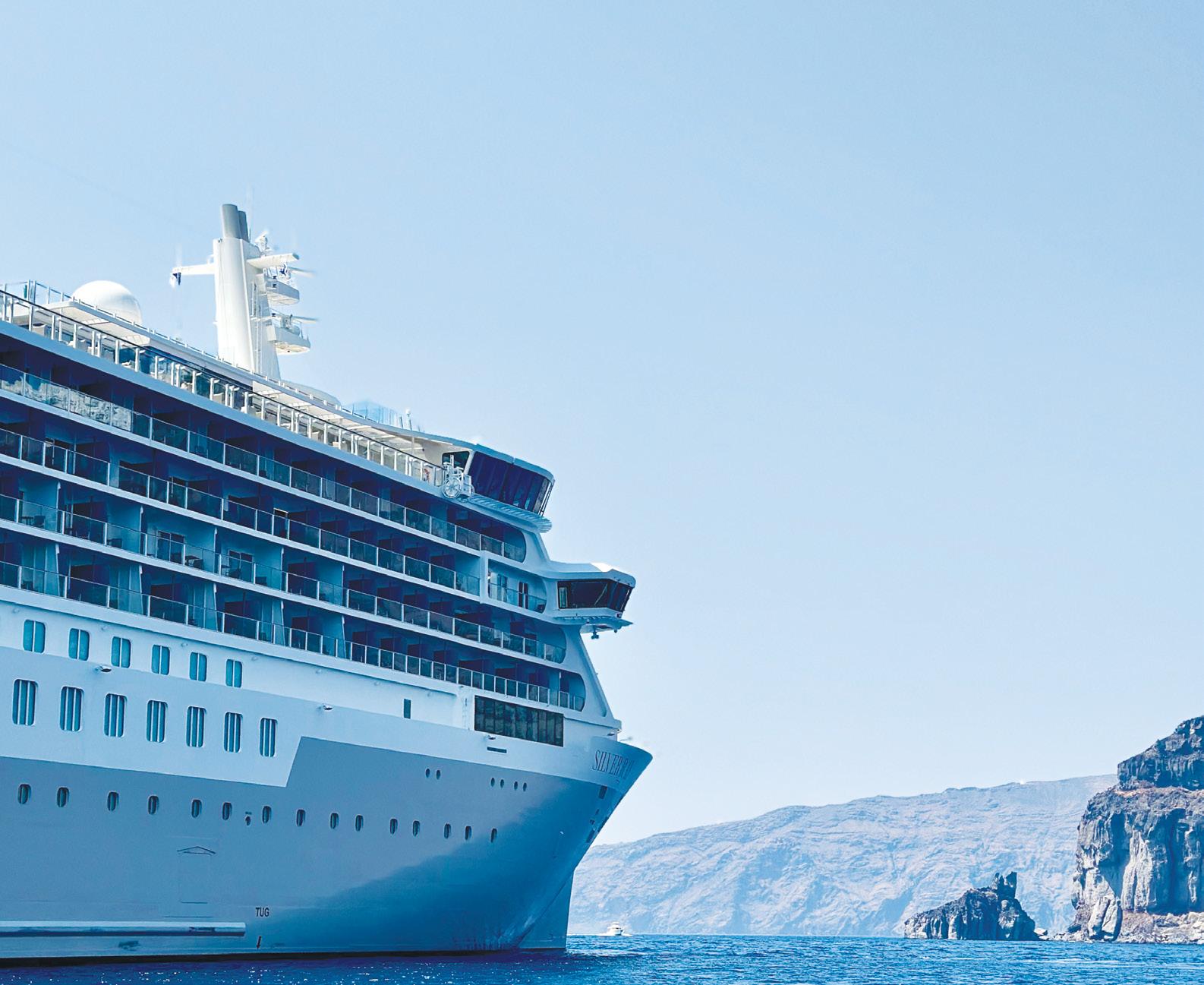




Karen Martini and Gary Mehigan set sail in Europe aboard the Silver Ray, one of the newest ships in the Silversea fleet.
“How beautiful is the Aegean Sea, that wonderful blue,” says Karen Martini, from the deck of her Silversea cruise ship. “Silver Ray is revolutionising small-ship, ultra-luxury travel. You see the water from every angle, it doesn’t matter which deck you are on you are connected to what’s going on outside and the places you are visiting.”
On the latest season of Luxury Escapes: The World’s Best Holidays, the foodie pair are setting sail around Europe visiting the Greek Islands and the Montenegro coast.
“One of the reasons I wanted to come on Silver Ray was the S.A.L.T. experience – which is Sea and Land Taste – and the experience is scattered throughout the whole ship but it extends to onshore as well because you can book an authentic foodie experience at every port you stop in.”
Pulling up in Corfu, the first time for Gary Mehigan, he loves the view from the ship.
“Rocky outcrops, pencil pines, beautiful villas and the old city or the citadel with the walls and fortifications reminding you it has a rich and interesting history,” Gary says.
The pair take a Corfu Foodie Walk, part of the S.A.L.T. program and they tour delicatessens and local tavernas. Later in the cruise they visit an organic farm and winery in Montenegro meeting a multigenerational winemaker for wine tasting, a cooking class and a local lunch spread.
“You know what it is,” Gary says of his S.A.L.T. experience. “It is properly of its place it makes me feel I could not be anywhere else in the world.”
Watch the Silversea TV episode
Whether you want a sustainable backpack made from recycled ocean plastic or the perfect summer picnic rug, our latest picks from the world of travel gadgets and fashion will see you staying ahead of the pack.

TOSCA’s Interstellar 2.0 is an evolution of its best-selling original Interstellar hard luggage case. This large-sized luggage case is sleek, super light but tough as nails. Crafted from premium polycarbonate, the Interstellar 2.0 also comes in a range of easy-to-spot-onthe-carousel colours like lavender. The perfect case for a long-haul trip.
TOSCA Interstellar 2.0 range; from $179 toscatravelgoods.com.au

Lightweight and soft, Miss Amara’s Picnic Rugs are crafted from 100 per cent recycled fibres, featuring stain-resistant properties. They are not only eco-friendly but also designed to withstand the rigours of outdoor life. The rugs are handwoven in India for premium craftsmanship and are easy to fold or roll up and take on the go.
Miss Amara’s Picnic Rug Collection; from $129 missamara.com.au
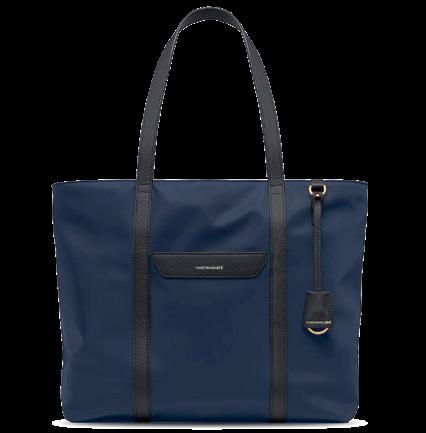
MAISON de SABRÉ launches a new generation of carryalls designed for the bold, modern journey. The collection arrives in the all-new dual-tone Sabré Blue and is crafted from 100 per cent recycled nylon yarn sourced from ocean plastic. Each piece in the collection is designed to be water-resistant, stain-proof, and dust-resistant.
Resilon luggage range; from $219 maisondesabre.com

Why should kids have all the fun? These adult Towelies are like a hooded, towel onesie from STOKEDNZ, that act as both a cosy towel and a change room, making them incredibly practical for beach and camping holidays this summer. They are ethically made from 100 per cent Turkish cotton and and they dry quickly and fit into any bag.
Towelies; from $114 stokednz.co.nz

New Zealand outdoor brand, Kathmandu launches its all-new sustainably made and style-driven outdoor active range. Featuring men’s and women’s fleece jackets, quarter-zip tops, tees, tanks, fleece joggers and loose shorts, the range – that Kathmandu has dubbed “Seeker” – is made with recycled material.
Seeker range from Kathmandu; from $34.99 kathmandu.com.au

Revlon Professional’s newly launched Eksperience Marine Face Mist is perfect for arriving at your destination fresh and ready to explore. It can be carried along onboard to help hydrate and remineralise the skin. It is the ideal companion for long travel days and will be the element of self-care frequent travellers are looking for.
Eksperience Marine Face Mist; RRP $38.95 revlon.com







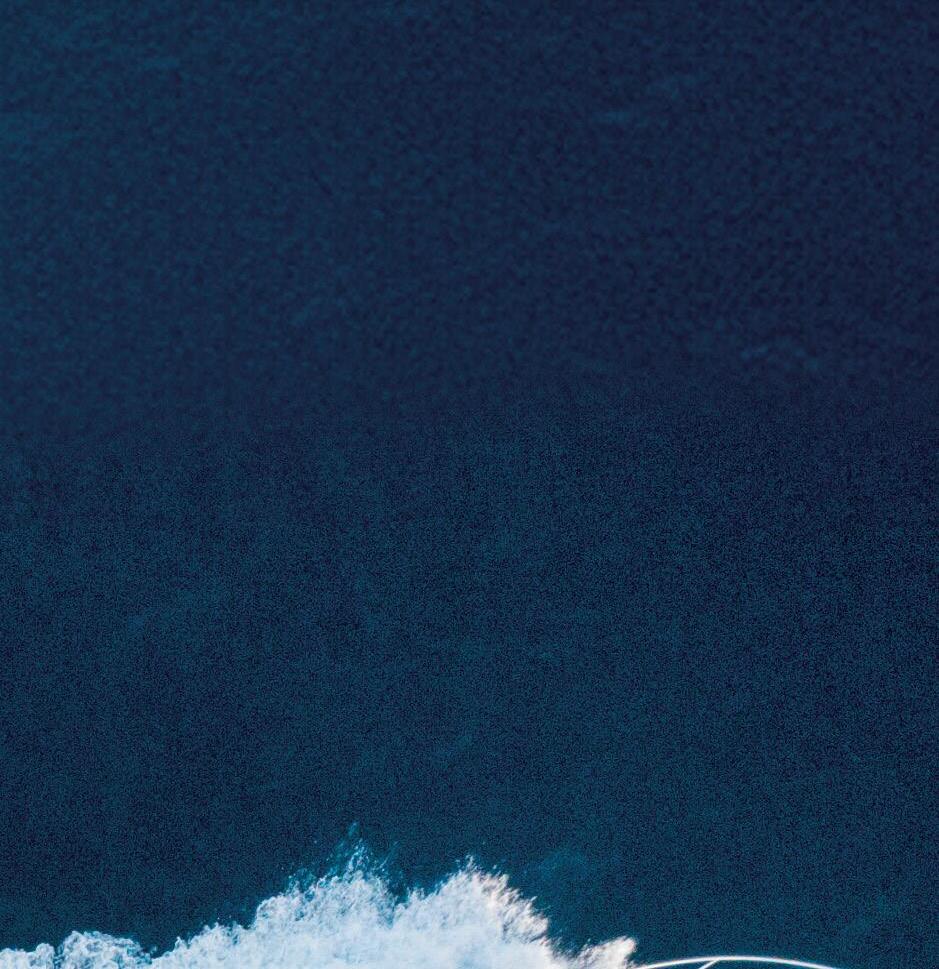



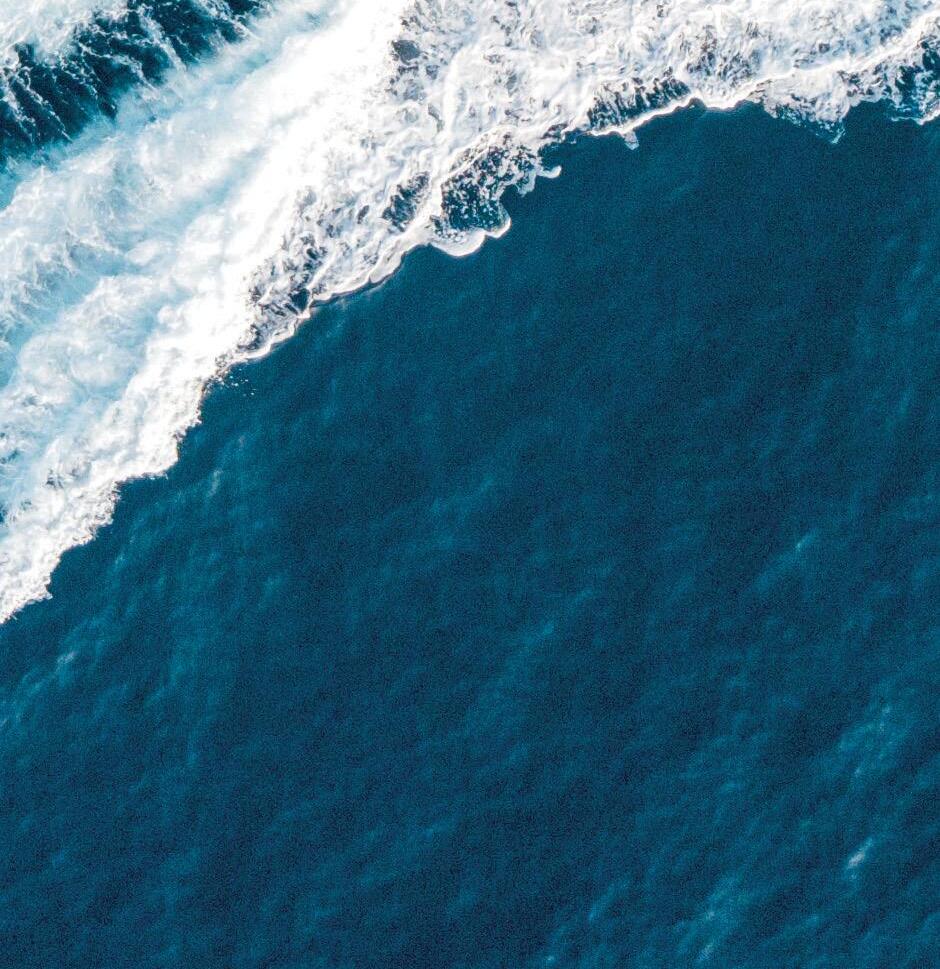





In 1777, Samuel Johnson said “When a man is tired of London, he is tired of life”. Nearly 250 years later, the sentiment remains true of the United Kingdom’s capital city, a modern metropolis that has roots dating back to 47AD.
With centuries of history, world-class attractions and museums, famous landmarks, jaw-dropping theatre and sensational shopping, London has something for everyone. Culture vultures will love the countless museums and galleries, while aspiring thespians will feel right at home in the West End. Foodies will
flourish under the bevy of cafes, restaurants and bars to try, while shopaholics can indulge in retail therapy at the world-renowned Harrods, Selfridges and Fortnum & Mason.
With so much to do, see, taste, watch and learn, you’ll never tire of London life.
Here is our insider guide to the perfect escape.
One block back from bustling Piccadilly Circus, this all-day brasserie celebrates the best of France, with a chic interior, extensive menu of French classics and an 80-page wine list. Come for the moules mariniere flatbreads and pate en croute, but stay for the dessert trolley: layered with the likes of apple tart, hazelnut Paris Brest, vanilla and caramel macaron and chocolate and almond gateaux.
Taking its name from the Yiddish word for “darling”, Bubala is all about Middle Eastern feasting, without the meat. Vegetables take centre stage, with chefs transforming the humble ingredients into flavourful dishes like oyster mushroom skewers, hummus with harissa and apricot oil and confit potato latkes with toum. Opt for the Bubala Knows Best tasting menu for the full experience, available at both their Soho and Spitalfields locations.





There’s a reason the Connaught Bar consistently appears in the World’s 50 Best Bars list – this quintessential London hotel bar is a haven for classic and contemporary cocktails, hidden away in Mayfair’s five-star Connaught Hotel. A cool grey bar sets the tone for an immersive evening – a bespoke martini trolley provides a front-row seat to the magic of mixology, with your bartender guiding you through a choice of bitters, before shaking and stirring your drink right in front of you.


The Devonshire might be a relatively new addition to the London pub scene, but it’s catapulted straight to the top of every “Best of” list since its opening in late 2023. There is a warm and welcoming public house and a refined restaurant, complete with in-house butcher and bakery. Stay downstairs for one of the capital’s best pints of Guinness or take a seat upstairs in the grill restaurant for Scottish dry-aged beef, creel-caught langoustines and hand-dived scallops.
Some of the capital’s best Indian food is hidden away in an unassuming neighbourhood pub in the back streets of North London. On the corner of a residential street near Highbury and Islington, The Tamil Prince delivers a succinct menu of sharing plates, inspired not only by the flavours of Tamil Nadu, but the sub-continent as a whole. Don’t miss the onion bhajis, dal makhani and channa bhatura, served with a soft globe of deep-fried bread.

Next to historic Borough Market, Oma and Agora are a pair of restaurants under one roof, with the same aim: to celebrate the diversity and simplicity of Grecian cuisine.
Start at the casual Agora (meaning “market”) for drinks, woodfired flatbreads and skewers, before heading upstairs to the laidback Oma, where you’ll find a menu inspired by the country’s islands and coastline, with dishes like seabass crudo and spanakopita gratin.
London’s climate is as unpredictable as the weekend’s football scores, but there are some key differences throughout the year worth keeping in mind.
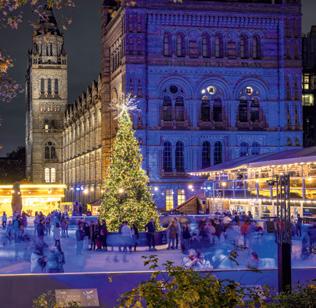
While the days may be short, the city comes alive with the Christmas spirit, with window displays and sparkling lights popping up all over the city. Festive markets line the River Thames and Christmas carols provide the soundtrack for shopping adventures down Oxford and Regent Streets. Wrap up warm with extra layers and waterproof shoes – rain is likely.
Pop by the Chelsea Flower Show to celebrate the country’s best green thumbs, say hello to a furry friend at one of the many city farms, or head to Richmond Park to wave to the local deer. The weather is still a little touch and go, so come prepared with an umbrella and warm layers.


London truly comes alive during the summer months with over 12 hours of daylight and a program of diverse festivals and events. Perch in a beer garden or a rooftop to watch the world go by or explore local markets like Broadway Market (East London) and Portobello Road (West London). The iconic Wimbledon tennis championships are on in the first two weeks of July; sign up for the ballot or join the locals in the daily queue (from about 5am).
Find refuge in one of the city’s many museums or galleries (most of them free) or get lost in the conservatories of Kew Gardens or the Barbican. Catch a classic movie at BFI Southbank, or find a new tome amongst the shelves of Daunt Books or Hatchard’s, open since 1797, before escaping the rain in a homely pub.


Standing on the prestigious Park Lane, complete with views over Hyde Park, COMO Metropolitan London is an elegant retreat perfect for London adventures. After a day wandering past Buckingham Palace and through Green Park, rest in your contemporary room or suite, or discover true serenity at COMO Shambhala Urban Escape spa. World-renowned Japanese restaurant Nobu has an outpost here for all your black cod needs, but should you wish to explore, the restaurants and shopping boutiques of Mayfair are on your doorstep.
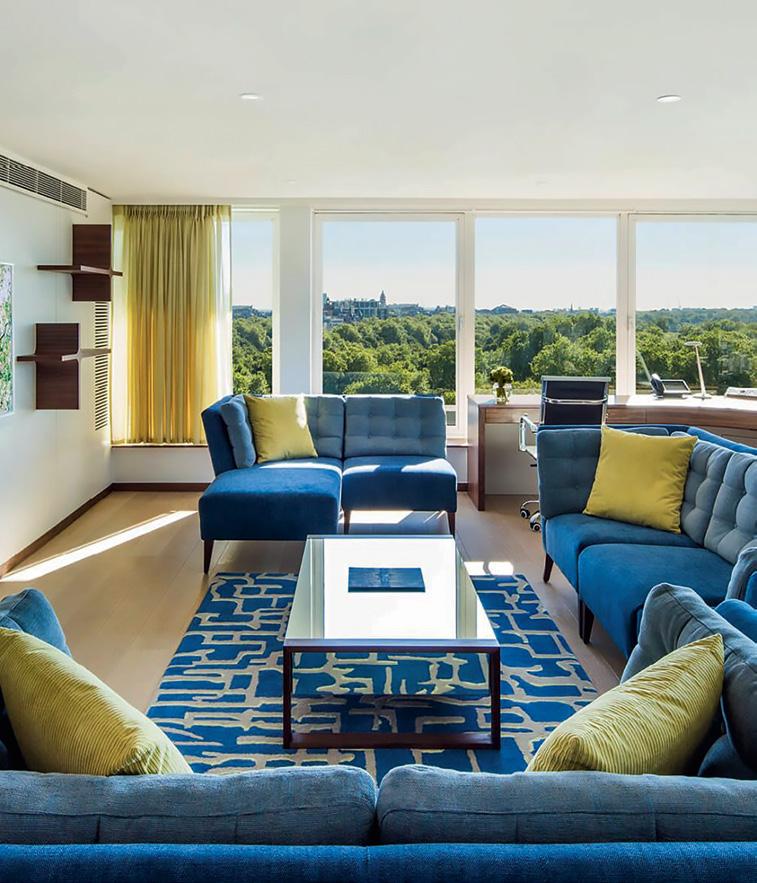
Explore London’s West End with a stay at the Parisian-inspired Henrietta Hotel. The elegant townhouse, hidden in Covent Garden, is just metres from London’s beating heart, but offers a calming escape from the action on the street. After days wandering nearby Soho and Leicester Square, return for a bite to eat at Henri restaurant, or rest in the ground-floor bar.
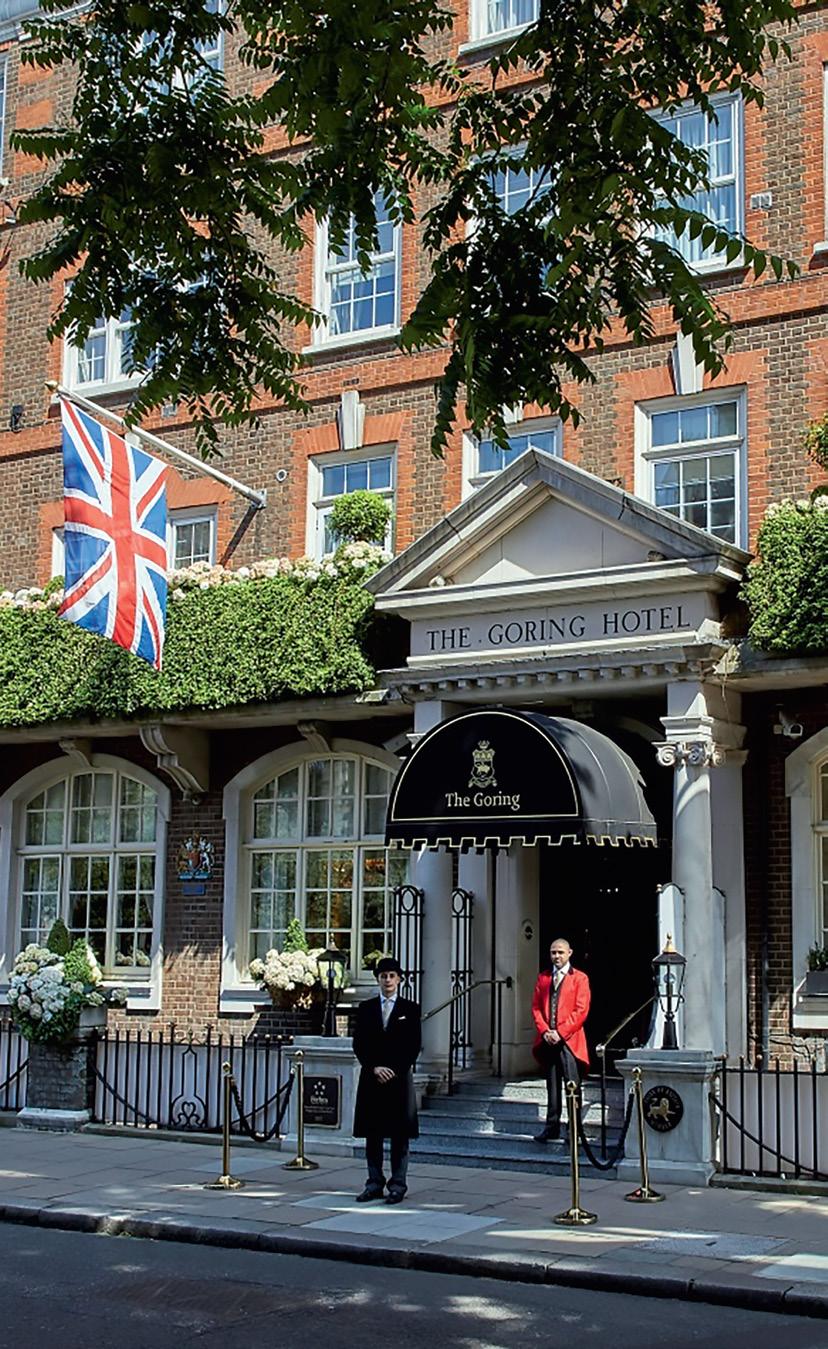
Sitting on the banks of the River Thames, this heritage stay couldn’t be better located for a trip to the Big Smoke. The Victorian-era hotel combines grandeur with world-class comfort, all just minutes from Big Ben, the Houses of Parliament and the London Eye. Finish your day at One Twenty One Two Restaurant to enjoy British classics, before retiring to your carefully crafted room.
Discover quintessential British luxury with a stay at The Goring, which hosted Kate Middleton in its Royal Suite on her final night before becoming the Duchess of Cambridge. Located in the heart of Belgravia, one of London’s most exclusive neighbourhoods, this royal retreat offers timelessly elegant rooms and suites, a Michelin-starred restaurant and lavish cocktail bar, plus an ideal location for days spent shopping up a storm at Sloane Square.


As one of the world’s oldest cities, London’s streets have stories to tell. From its Roman origins – when it was known as Londinium – through to today, it has plenty of historical sites and landmarks preserved. Visit the Crown Jewels and beefeaters at the Tower of London, admire the Georgian architecture of Buckingham Palace or go back to where it all started in the City of London, where Roman ruins are dotted throughout. Whisper around the walls of St Paul’s Cathedral or wander through the hallowed halls of Westminster Abbey, before checking the time at Big Ben.


London’s West End is home to some of the world’s very best stage performances. From the famous to the fringe, there’s a show for every interest in the theatres dotted across central London. Sign up for spectacle with a jaw-dropping musical like Les Miserables, Wicked or The Lion King, or grab your chance to catch a star on stage – Sigourney Weaver, Tom Hiddleston, Rosamund Pike and Brie Larson are just some of the household names popping up in 2025.

With approximately 15,000 restaurants, 3700 cafes and 2225 pubs, London has an ever-evolving hospitality scene. From classic English pubs serving Sunday roasts, to all-day French brasseries and West African fine diners, there’s a spot for every time of day and any occasion. And it’s not just restaurants – Borough Market is a flourishing foodie haven selling fresh produce, meat and seafood amid surrounding restaurants, while Broadway Market is a Saturday mainstay for East London locals, with a mix of street food and groceries.
Spend your days exploring South Kensington’s multitude of museums before retiring to The Kensington Hotel, a charmingly luxurious city retreat just metres from South Kensington Tube station. With heritageinspired rooms and suites, plus a grand restaurant, discreet cocktail bar and beautiful Drawing Room for afternoon tea, it’s bound to make you feel right at home.
Soar above London’s iconic skyline from your modern room at Shangri-La Hotel at the Shard, located in (you guessed it) the iconic Shard building in London Bridge. Spread out over 18 floors of the distinctive building, this five-star marvel has everything you need for a fantastic London stay: gaze out over the city from your floor-to-ceiling windows, sip on a cocktail at GŎNG bar or take a dip in the indoor infinity pool. When ready to explore, the Tate Modern is on your doorstep.
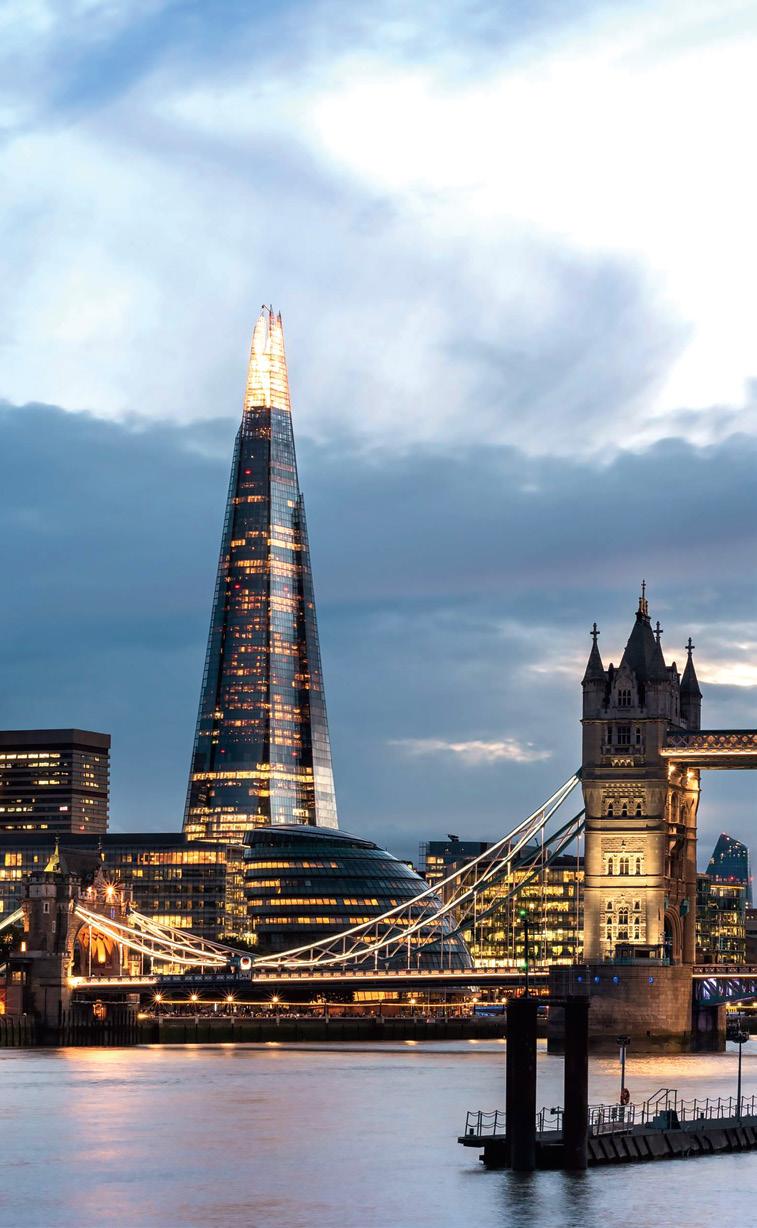
Soak up London from the sky from one of its many viewing platforms around the city. Make a reservation at one of the restaurants and bars on levels 31 and 32 of The Shard, or book ahead for a free ticket to Horizon 22, located in the City of London. Sitting on Level 58, it offers 300-degree views of London’s most iconic landmarks. All sold out? Try Sky Garden, London’s highest public garden at 155m above the street. Tickets are also free and are released a week at a time.

There’s no better way to get a feeling for the global cultural capital than with a guided walking tour. Both the sweeping and the specialist are on offer in any given week: follow in the footsteps of Jack the Ripper and his victims around Whitechapel and Spitalfields, explore the beautiful Kensington Gardens and enjoy a spot of high tea, or learn about British food culture with a three-hour tour around London Bridge, snacks included.

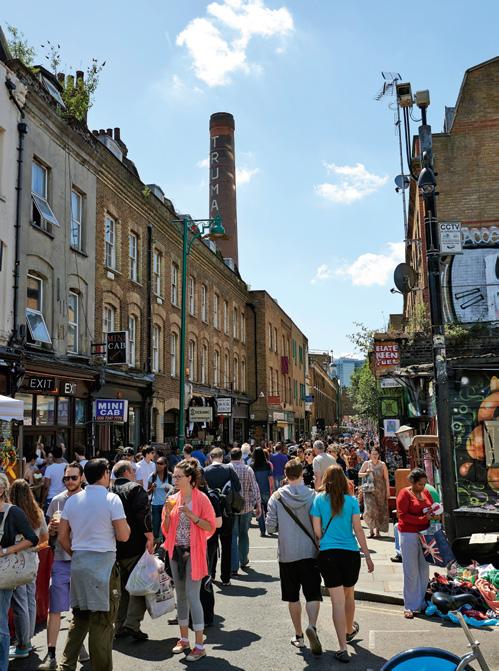
Stretching from the River Thames at Embankment, through the centre of London and up to Kings Cross, the Museum Mile is a hub of 13 world-class museums holding over one million objects from all over the world. Peer at Shakespeare’s First Folio at the British Library, gaze over the Rosetta Stone at the British Museum and learn how art and science combine at the Wellcome Collection. Finish at the Courtauld Gallery to admire Van Gogh’s iconic Self-Portrait with Bandaged Ear Best of all, most are free.
FAMILY AFFAIR:

A super-connected Tube and bus network means you’ll be able to get around easily, with kids under 11 travelling free with a fee-paying adult. Hop-on, hop-off buses are convenient for transport between London landmarks, but with many so close to each other, it’s easier to walk. Most hotels have child-friendly facilities for a restful night’s sleep, with kids’ menus, extra beds and in some cases, free accommodation when staying with parents.
During the day, explore the free, family-friendly exhibitions at the Natural History Museum and Science Museum in South Kensington, or experience the magic of the Harry Potter universe with a tour through the Warner Bros’ Studio. Find out why it’s okay to be a little bit naughty at Matilda the Musical. Follow in the footsteps of Paddington Bear as you discover the book and film locations across the capital, or run wild in the centre of the city at the Diana Princess of Wales Memorial Playground.
Animal lovers are spoilt for choice in this metropolis: spend a day at London Zoo or at Sea Life London Aquarium; spot the deer roaming free in Richmond Park, or come faceto-face with some quirky creatures at the free Horniman Museum. Active teens will love the chance to swing from the treetops at Go Ape Adventure Parks (spread across the city), scale a skyscraper at Clip n Climb or channel their inner James Bond with treasure hunt-style experience from Hidden Cities.

Catch a performance at The Globe Theatre, a one-of-a kind theatrical space overlooking the River Thames. Considered the home of Shakespeare, the open-air, 360-degree auditorium has a year-round program of both classical and contemporary plays from established and emerging playwrights. Seats line the edges, but the central yard is one of the theatre’s most unique features: it can hold up to 700 people standing, with tickets from just £5. Come rain, hail or shine, the performers take to the stage, so dressing warm (and dry) is essential.

One of the most quintessential British experiences is high tea and no visit is complete without an afternoon spent eating scones with jam and cream and sipping on pot after pot of Earl Grey or Darjeeling. Follow in the footsteps of the seventh Duchess of Bedford, inventor of the concept, with a traditional experience of finger sandwiches and cakes at The Ritz, Fortnum & Mason, The Goring or The Lanesborough. For something a little left of centre, try the fashion-themed Pret a Portea at The Berkeley Hotel.

Worship at the altar of sporting greatness with a tour of some of the world’s most famous stadiums. Visit the hallowed Stamford Bridge, home to Chelsea F.C, or Arsenal’s Emirates Stadium, to go behind the scenes of the dressing rooms, press rooms and pitch, plus admire their
collection of silverware at the adjoining museums. If a bat and ball is more your thing, join an expert guide as they take you through the “Home of Cricket”, Lord’s Cricket Ground. Visit the Victorian Pavilion, Long Room, dressing rooms and the MCC Museum, home to the Ashes urn. THE SURPRISING THING:
London is one of most multicultural cities in the world, with over one third of Londoners coming from elsewhere and over 200 languages spoken throughout its neighbourhoods. This melting pot makes for an incredible fusion of traditions, rituals, cuisines and experiences, all worth exploring. Just off Leicester Square sits Chinatown, packed full of Asian supermarkets, restaurants and bakeries, while Camden remains the neighbourhood for immersing yourself
in Latin American culture, with Cuban restaurants and bars and a Spanish translation service. Immerse yourself in modern Jewish culture in nearby Golders Green, where many World War Two immigrants settled in the 1940s and ’50s. Stop by Carmelli for bagels, Pita for falafel and sabich or The Salt Beef Bar for sandwiches and latkes before walking up the hill to Golders Hill Park, where a water garden, butterfly house and minizoo await.
At the other end of the city, Brixton is known as the unofficial capital of the British-Caribbean community, with nearly a quarter of its population identifying as of African or Caribbean descent. Expect countless reggae music stores, supermarkets selling traditional ingredients and of course, plenty of Caribbean restaurants. Other spots worth exploring? Little Poland in Ealing, Little Korea in New Malden, Little India in Tooting and Little Portugal in Vauxhall.


Ubud has seen its popularity soar as travellers discover this Balinese gem.


Ubud in Bali is having its moment in the sun. Claire Turrell discovers the mountain town is home to immersive new hotels, innovative Balinese cuisine and a jewellery workshop where visitors can create with local artisans.
e
volcanic mountains of Bali have long been part of myth and legend, but perhaps they have been hiding one of the biggest secrets of them all. Once viewed as a day trip from the south, the mountain town of Ubud has now evolved into a destination of its own. Restaurateurs, fashion designers and hoteliers have taken the road north to help make this cultural capital the hottest spot in Bali.
Lose yourself among its leafy lanes and you’ll discover some of Asia’s 50 Best restaurants, fashion-forward boutiques and artists’ studios that you can explore. And it’s no surprise that some of the biggest hotel brands are now opening their doors in the area to help you stay a little longer.
One of the latest hotels to launch in the Balinese mountainside is Anantara Ubud Bali Resort. Taking inspiration from the UNESCO-heritage-listed rice fields, this six-storey hideaway descends down the mountain. Guests enter the lobby on its uppermost floor to make the most of views of Mount Batur. The hotel’s sleek walls are draped in vines, and it sits in a forest filled with teak wood, eucalyptus and jackfruit trees. The aim of the hotel is for you, like it, to blend into the surrounds.
One way that you can do this is with the help of its naturalist Made Ganendra. The 36-year-old multihyphenate is a Silat athlete, energy healer and even a judge for body building competitions in Bali. But what makes him the secret sauce at Anantara Ubud is that he has been immersed in the culture of Ubud since the day he was born. A descendant of priests, he knows what

makes Ubud so special. The reason why guests can now venture into the heart of a sacred forest near the original Balinese village of Taro is because of Made.
He grew up in the mountain village of Begawan. The date-like soap nut plucked from the jungle that the therapists in the spa lather into a foam for guests’ footbaths was introduced to them by Made. The forest leaves that act as a nest for one of the dishes in the degustation menu at the Amerta restaurant is thanks to Made’s knowledge of the wild. The campaigns to look after the fireflies and the Bali Starling at Anantara are because Made wants to protect his home.
He wants people to make a connection to Bali. His only request is that guests don’t tag the images, so the waterfalls and forests he takes people to remain free of crowds.
“As an Ubudian person, I really want people to know that Ubud is not just a small local district in Bali,” says Made. He wants people to understand that this is a place that is rich in heritage and culture, and embodies the Balinese way of life.
Made’s village is where the famed jeweller John Hardy honed his craft. The Canadian
sculptor arrived on the island in the 1970s and worked alongside Balinese silversmiths. While the brand has grown dramatically, and since moved to Mambal, at the root it remains the same.
The bamboo workshops levitate on stilts above the rice fields, while the brick buildings wrap around the trees and match the undulating land. The babbling brook that runs through the centre of the Willy Wonkalike village they’ve created makes it seem as if it’s been plucked out of a fairytale, but it’s not been created just for looks. “It’s not like a Disney setup,” says senior director of heritage, Polly Purser. “This is how we make the jewellery.”
Visitors to the John Hardy Workshop in Ubud can not only learn how to make a piece of jewellery, but wind their way from the design studio to the workshop before they enjoy a family-style lunch with the artisans in the thatched long house.
While John Hardy could use 3D printers instead of wax carvers to create the moulds, Utami Sri, who has worked for the brand for nearly two decades said this won’t happen at John Hardy. The aim is to support the artisans, not replace them.



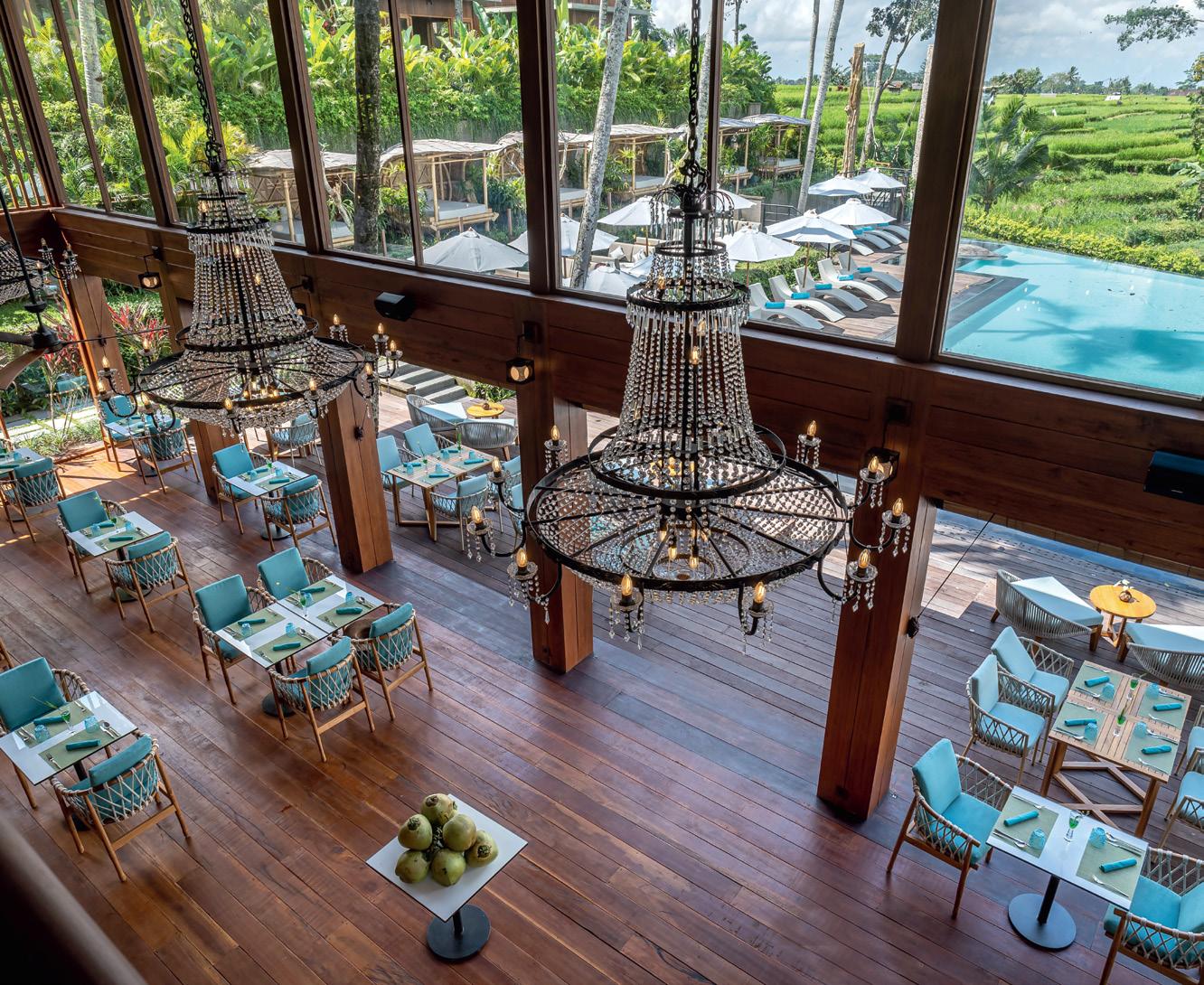


Only an hours’ drive from Kuta, Ubud is Bali’s cultural heart and it draws yogis and retreat-seekers eager to detox Western stresses with holistic traditions. Luxury Escapes has a range of incredible accommodation across Ubud and all of Bali.
Explore hotels & more

Ubud isn’t short of homegrown brands. Strict local laws have kept international fast-food joints at bay and Ubud is a place where innovative chefs can flourish. Locavore NXT shows how cutting-edge Ubud has become.
Helmed by Indonesian chef Ray Adriansyah and Dutch chef Eelke Plasmeijer, the restaurant, which opened in December 2023, focuses on hyperlocal produce. Guests enjoy a 20-course tasting menu surrounded by a food forest and koji fermentation lab. Their first restaurant Locavore was a regular on Asia’s Best 50 list; now they are pushing the boundaries again. “It’s fair to say that the culinary landscape in Ubud has changed a fair bit over the last couple of years,” says Eelke. “When we opened the old Locavore 11 years ago there were only 100 or [so] restaurants in and around town, now there are over 1,000.”
Dining has risen to the next level among the mountains of Bali. When chefs would try and cater to different tastes it wasn’t unusual for them to serve an eclectic array of dishes from
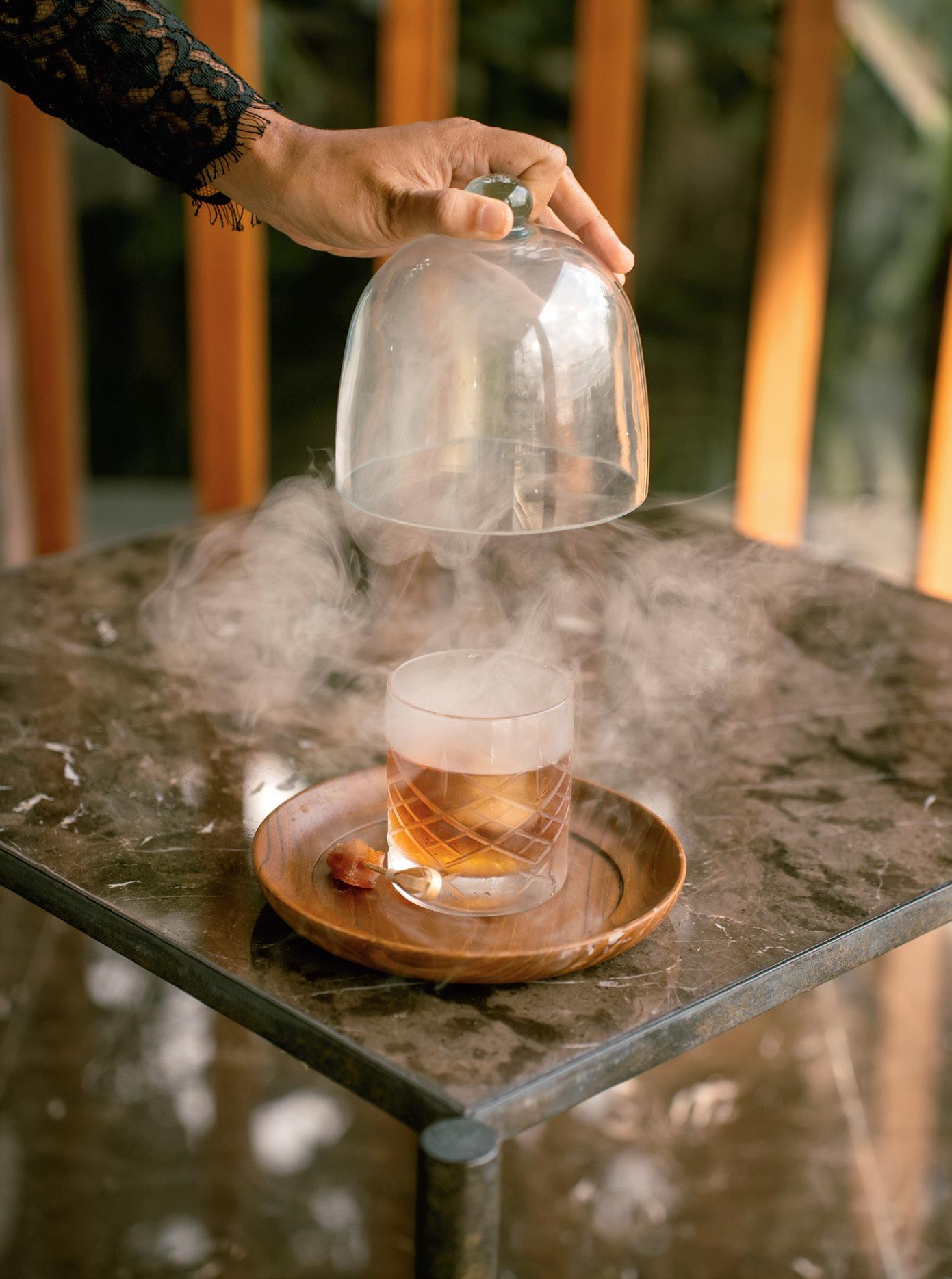
Indonesia, Japan, Mexico and France on the same menu. “Restaurants [are] simply better than they used to be,” says Eelke. “Now there is a lot more focus on doing one cuisine in one restaurant and I think that’s a good thing. For chefs, it means there’s a lot more competition and we all had to [raise] our game.”
Other brands entering Ubud include Kappa Senses from the same family as the Kappa Club in Nusa Dua, Kappa Senses aims to create an elevated experience. While its goal is to trigger all the senses with its 1,000-metre squared Clarins spa, yoga classes and Instagram-worthy swing that ascends over the rice fields, gourmands for one won’t be disappointed. Alongside its villas and jungle split-level suites, you’ll find five restaurants including Kokokan, which serves up Balinese roast pork, the Kelapa poolside restaurant that serves nasi goreng and the Bale Gourmet with fresh French pastries and a wine cellar.
At the heart of the resort is an organic permaculture garden where guests can join chefs for a tour among the lines of
sour starfruits, plump chillies and edible flowers. Then they can join a cooking class and make banana-leaf-wrapped parcels of tilapia fish, which they cook over hot coals. Balinese-born executive chef Eka Arsana, who would watch his chef parents cook as a child and then followed in their footsteps by becoming a chef at the Four Seasons in Singapore and Hawaii, has made it his goal to take the gastronomy of France and marry it with the tastes of Bali.
He sweetens dishes with a small mushroom found inside a coconut and is now searching for seaweed flowers that, when combined with grated coconut. taste just like corn. “I want to bring back forgotten ingredients and introduce them to people coming to Bali,” says Eka.
The gastronomic approach has also been taken with the cocktails. Not only do they clarify the liquids in the same way as a chef would do with sauce or stock, but they pick herbs from the permaculture garden and with the sous vide machine create infusions of ginger and whisky.


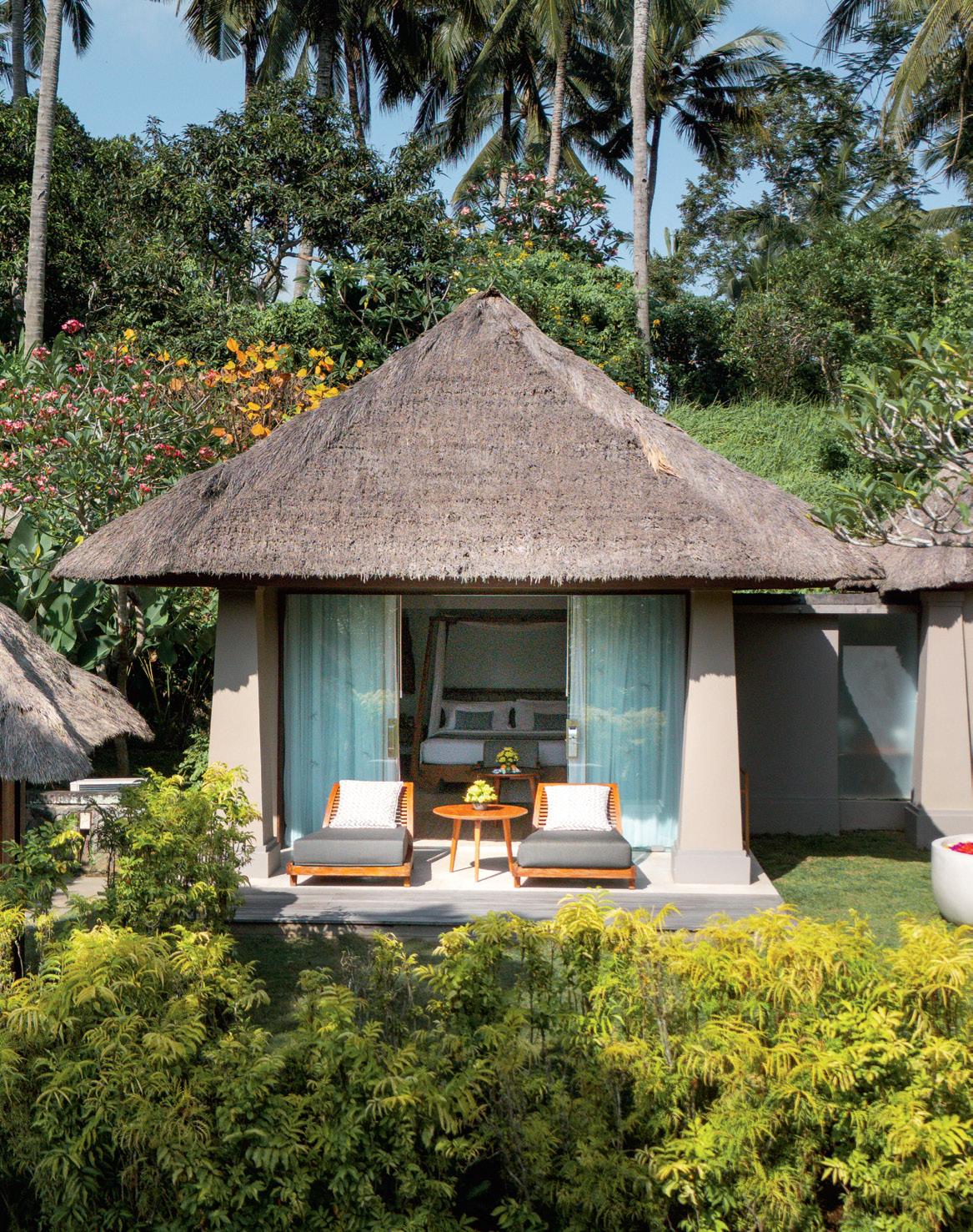

Health and wellness is part of Ubud’s DNA. It attracted the hippies and healers in the 1970s, now a new wave of health seekers is looking to the cultural capital to help them regenerate their mind, body and soul.
The Maya Ubud Resort & Spa in Ubud gives people the chance to do just that. From offering forest walks dusted with the cotton from kapok trees to flower-filled statement baths that hang over the river, this mountainous retreat, based upon a traditional village, helps you find your own space within this much-loved island.
Guests can choose from newly renovated private villas and suites that offer garden views or expansive scenes of the forest. Its two infinity pools are where most of the guests like to spend their time. Either on a lounger or in a cabana at the rice terrace-inspired Riverside Pool that overlooks the Petanu River or in the sleek Forest Pool that gives you a bird’s-eye view from the top of the resort.
Its Ubud-born yoga teacher Dewa Gede Bawa has watched the rise of Ubud. Each morning the rooftop pavilion where Dewa’s clients slip into a zen-like state to the sound of singing bowls is filled with yoga mats. As a young boy Dewa could count how many visitors would enter his village, now he says they arrive every minute. “The thing we can’t avoid is change, it’s going to happen. But I wish that we can slow it down a little bit,” he says.
Yet he understands the attraction. “Most people come to Ubud because they want to relax. The word ubud means ‘medicine’,” says Dewa. “Ubud is more for the people who want to do nothing – just be.”
One stalwart that is getting ready for the influx of new visitors is the luxury resort of Tanah Gajah. The former summer home of the celebrated Indonesian architect Hendra Hadiprana is about to launch new pool villas overlooking the rice fields and designed by his granddaughter Sekaraya. What started as a Balinesestyle compound for a family still holds true to its traditions –complimentary afternoon tea is still served at 4pm to club guests, but so are floating breakfasts in the resort’s main pool.
The late architect, who was behind The Legian Seminyak and the InterContinental Bali Resort, wanted to create a hotel that offered unique moments for his guests. From his collection of artworks that grace the walls and the black and white swans that grace the lake, to the traditional Kecak dance performed in front of the statuesque Elephant Gate. That same philosophy continues with the next generation with guests being able to enjoy a hot-air balloon ride above
the rice fields or they can dine by torch light in the amphitheatre. They can even enjoy a romantic picnic on a wooden boat in its sister hotel, the Dua Dari Ubud.
Bali has long been a favourite with holidaymakers, but those who have lived in Ubud since being a child say that this mountaintop getaway is extra special. “It’s something that people can’t put their finger on. Whether it’s the healing or just the energy that’s like a magnet,” says Polly Purser.


Tales of gold and riches, stories of warlords and shamans and fascinating, o beat city stops are all woven through a luxury private train journey along the Silk Road. Belinda Jackson makes tracks for the untapped beauty of Central Asia.

It’s 4.30am and my skin is burnt orange as I face the Door to Hell.
By far the most bizarre – and therefore most popular – of Turkmenistan’s charms is its Darvaza gas crater, a well of natural gas that was lit in 1971 in an attempt to burn off “a little excess gas”. It’s still burning, here in the severe, Karakum desert, unquenched for the past 53 years.
Like moths to the flames, a small group of us is drawn to the 70-metre-wide fire pit to watch as flames roar and flicker; a scant fence does nothing to keep the foolhardy from standing at its lip.
As dawn breaks, we retreat back to the train tracks and there waits the Golden Eagle.
In the first flush of dawn, our 12-carriage private train resumes its journey tracing just one strand of the Silk Road, a web of ancient

trading routes that sent silk to the West and gold to the East.
Slaves, paper, gunpowder and foods also travelled the route; words, beliefs, ideas and plague their intangible travel companions across more than 15 centuries.
Here, in the deserts of Turkmenistan, it’s my second-last day on this private train tour of Central Asia – seven days ago, we’d set out from Kazakhstan’s former capital, Almaty, travelling through Uzbekistan and now on to curious and curiouser Turkmenistan.
By day, I rarely find myself in my Silver Class cabin – there’s always something marvellous to explore and locals to guide me. But when I do pause, it is a calm, timberlined space with a doily-covered table, blue upholstered window seat, gold curtains framing scenes of farmsteads on a butter-
coloured steppe, a towering fortress, a desert plain.
Each night, my cabin is transformed; the double bed is folded down, its light duvet and pillows fluffed, an itinerary of the next day’s adventures slipped under the door with weather forecasts, a note on currencies, the restaurants we’ll visit. I know when Ekatarina has been here, my Russian cabin attendant always leaves a fresh flower in a small vase.
At its full capacity, the train has 19 carriages carrying 85 people, but ours is a far smaller group, and we share our stories over pre-dinner G&Ts in the bar car, plan shopping forays into ancient markets, soak up the history in the little library stacked with train titles and histories before the next day’s explorations.
In Samarkand, Uzbekistan’s jewel, I find romance at the crossroads of the medieval world, in Registan Square. Here, a magnificent mosque was built in the 14th-century by Mongol warlord Timur, or Tamurlaine, for his wife Bibi-Khanym, who clearly loved turquoise tiles as much as I do. Since the 6th century, it has been a site for meetings and bazaars, workshops and executions, the imprint of the Mongol Empire on its beautiful face. Now, it’s the pin-up for Silk Road tourism.
The number of local tourists outnumbers those of us from abroad, but everyone wants the selfie, and so phones are handed around as Uzbeki women in their headscarves and long, colourful dresses and we jeans-clad tourists cement our new friendships with group photos, forever embedded in each other’s phones’ memories. All are well pleased.
Irreverently backed up against the outer walls of the mosque is the busy Siyob Bazaar, where I pick up a huge ring of the city’s famous bread. Dense, chewy and slightly sweet, the bread is baked in a tandir oven, and can apparently last three years – after which time it could be used as a blunt instrument.
In Bukhara, its 5th-century fortress walls are a backdrop for a dance troupe of girls in white, as they record a video to traditional Uzbeki music. Later, I’ll spy a shaggy, two-humped Bactrian camel standing innocently beside the picturesque walls of the Ark of Bukhara, its handlers swift to appear at the sight of a camera-wielding tourist.
In contrast, little Khiva’s deliciously crumbling mudbrick walls are just the place to hang your vivid carpets, hoping for a sale. Blood red or bright fuchsia, sky blue and the green of spring grass all are wrought into flowers and curlicues that are also embroidered across the cropped jacket I buy, redolent of the heat and dust of Khiva’s position between two deserts, the Karakum and the Kyzylkum.
This is my favourite of the Silk Road cities – in Khiva, I’m told the softest wool is from the neck of the camel. I’ll take two scarves, please and yes, the seller is correct. In its walled city, Ichan Kala, mystique is a curtained, outdoor café, where long, low cushion-lined daybeds
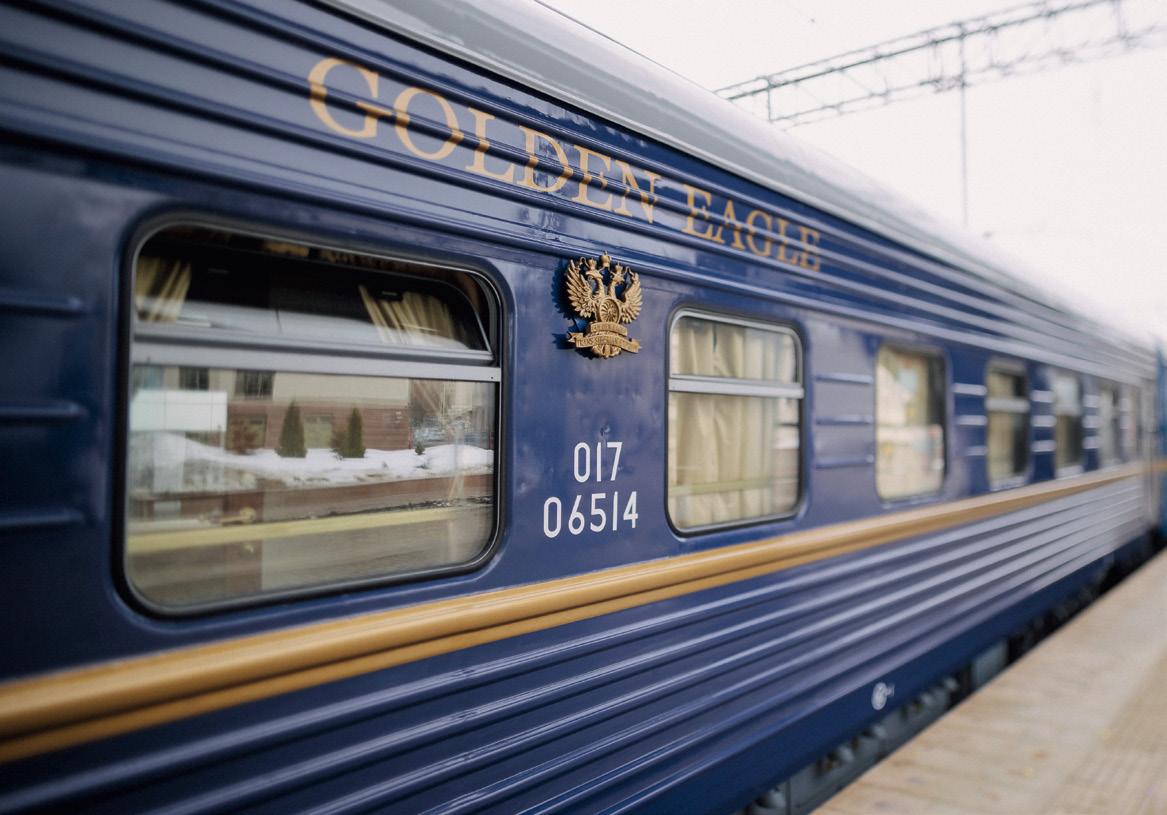
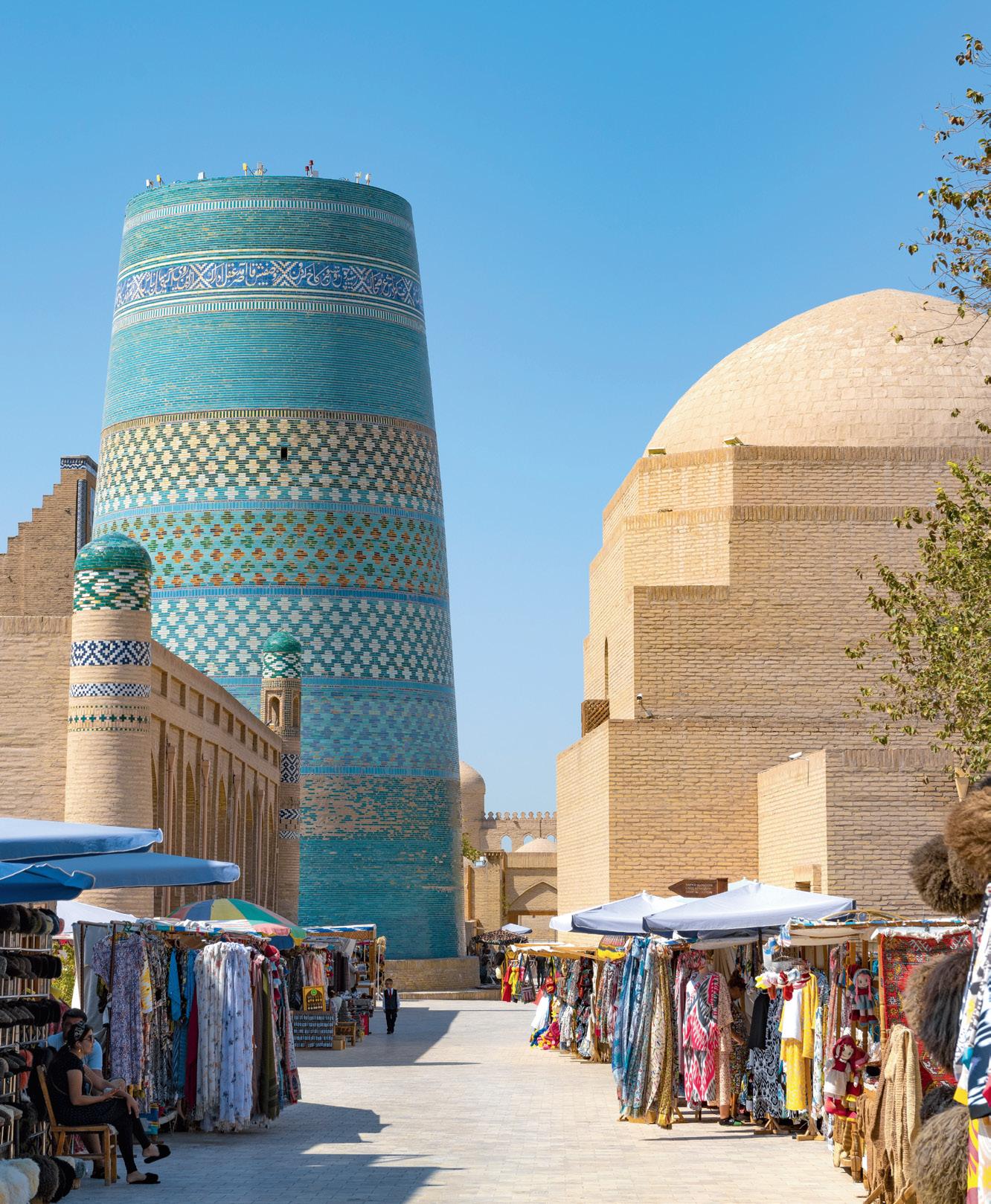
beckon, an ornate retreat from the beating desert sun where I sip cold pomegranate juice.
Leaving Uzbekistan, I watch as entire families pick cotton in the late afternoon, fathers holding their babies up to watch our smart, blue train sail past, the driver’s long too-oooot lingering in the still, warm air.
The cotton fields peter out as we enter the sandy Karakum desert, which cloaks more than two-thirds of Turkmenistan. Camels stroll through a desert littered with clumps of dehydrated grass and crawling shrubs – the snow-dusted mountains and laden apple trees of Almaty seem a world away.
Turkmenistan lives up to its reputation as one of the world’s most cumbersome countries to enter. A host of rigidly uniformed customs officials boards the train with a giant, metal machine. For the next four hours, it will whir and stamp our passports in a marvellous display of antiquated bureaucracy.
My last stop on the Golden Eagle is also the most peculiar in a whistle-stop tour of peculiarities – even dwarfing the falconry show in Almaty, where a wolf-hunting golden eagle swoops so low over our heads, it gives the perfect centre part.
Fifty kilometres from the Iranian border stands the capital of Turkmenistan, Ashgabat, aka the “Las Vegas of the Karakum”. In four hours of driving its broad, eight-lane streets, I see only two people, both gardeners tending the immaculate lawns and trees. On seeing us, they melt swiftly into the greenery, clearly aiming to avoid us. Ditto, the eight-lane freeways are devoid of cars.
Packing tip: bring your biggest sunglasses – the hot, Central Asian sun is hard on this desert city of white marble. The story goes that Ashgabat would look like any other concrete Soviet-built city except its first president, Saparmurat Niyazov, aka Turkmenbashi “the father of the Turkmen”, clad all its buildings in white marble, simply because he could.
It’s ironic, then, that Turkmenistan’s stories are told in its jewelcoloured carpets, stacked up for sale in a shop forgotten even by its owner. Free from the seller’s patter, I run my hands across the motifs, which tell the stories of tribes and amulets, spirituality and identity.



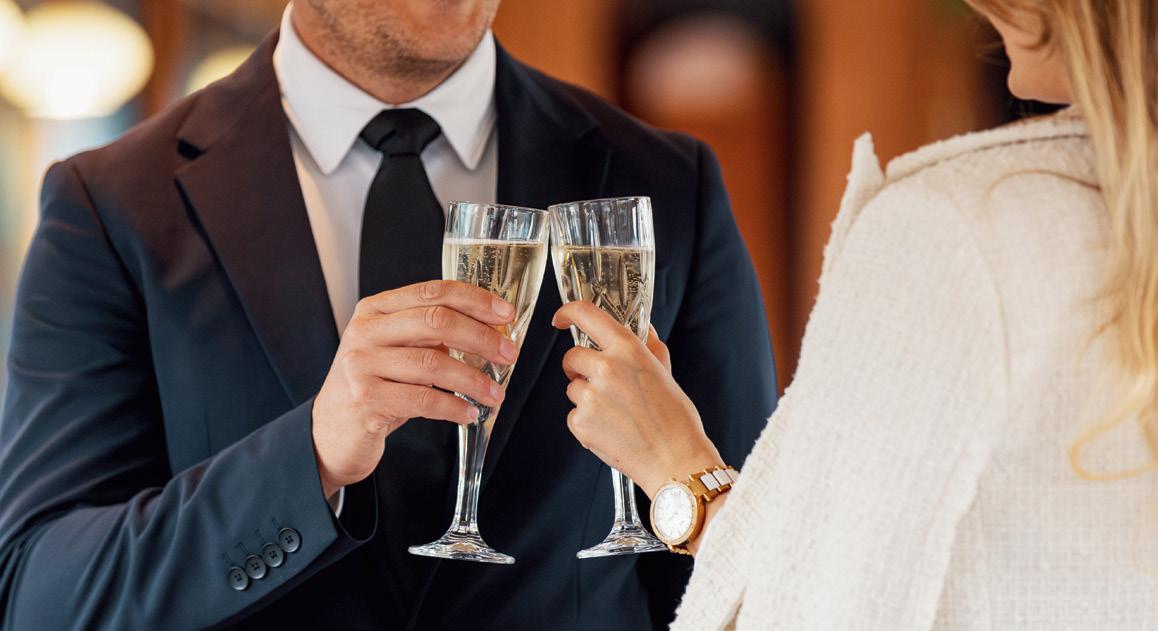
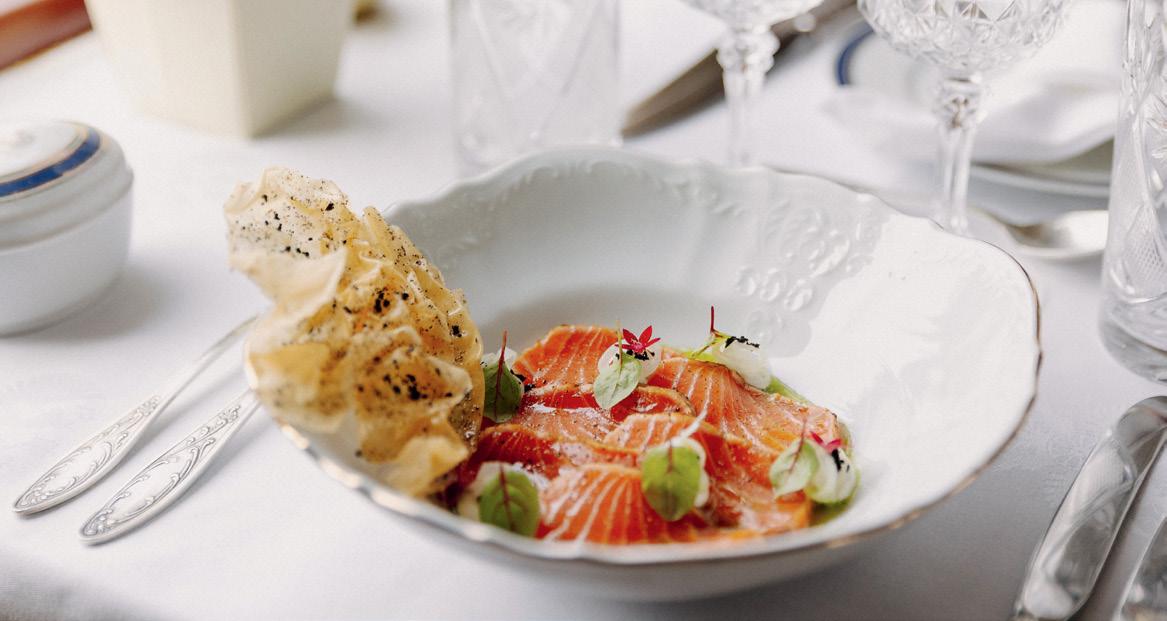
Mine is a special trip; the Golden Eagle Luxury Trains’ entrepreneurial founder, Brit Tim Littler, is onboard and the crew –many of whom joined the staff when the company first started running the rails a decade ago – are beaming.
So, is he a mad train tragic? I ask over dinner on the train. Tim hesitates before replying.
“No, but I did organise the train society at my public school at age 12,” he says. “I must have been very precocious.”
Tim first joined the family’s wine trading company, which explains the thoughtful, exploratory wine lists on offer, but with his cofounder, the late Marina Linke, spent decades combing the train cemeteries of the former Soviet empire, rescuing and rehabilitating diesel and steam engines to create his own rolling stock. He takes us to a graveyard in Almaty, his hands gentle on the great black engines, and sympathy for their neglect rises through my body.
The company started operating rail tours through Eastern Europe and Russia, running the first private, luxury steam train along the Trans-Siberian railway in 1996. It now concentrates on its European, Indian and Central Asian journeys.
If you’ve ever travelled on Russian trains, you’d recognise the structure: each carriage has two attendants, who tidy our cabins each morning, serve meals and at a pinch, bring me tea, delivered in fine china pots bearing the company’s golden, doubleheaded eagle logo.
That eagle-eye attention to detail continues throughout; each morning, we breakfast on the train, watching villages and orchards pass as fruits, eggs, a choice of caviar and charcuterie are served; and each morning an offering such as kasha, a Russian buckwheat pudding stained purple by the addition of tiny bilberries, or pancakes stuffed with sweet tvorog, a fresh farmer’s cheese found on all good breakfast spreads in Central Asia.
In the cities, I cement my passion for Uzbekistan’s national dish, the rice and lamb crowd pleaser of plov. I rejoice in its juicy dumplings called manti and appreciate the mastery of good shashlik – which country doesn’t have a meat-on-stick variation?
One evening, a barbecue dinner is served on the platform of Bukhara’s old train station; the chefs seem to enjoy the chance for some open-air grilling, instead of working culinary miracles from the tiny kitchens onboard.
But the evening that everyone is talking about is the train’s famed caviar dinner – Beluga and Osetra caviar from the Caspian Sea is served from enormous, silver tureens, blinis and sour cream hot on its heels, followed by bottles of J. Lassalle champagne.
The decadence almost takes my breath away as our train continues to ride the rails; beneath the bluest skies above the empty plain, by the impossibly vivid mountain waters of the Big Almaty Lake in the Tian Shan mountains, past the towering walls of turquoise tiles that clad mosques, madrassas and mausoleums
A theatre for warlords and shamans, for steppe empires and the home to the Great Game, where Britain and Russia fought each other for influence in Central Asia, the Silk Road is meandering, intriguing, occasionally infuriating and always rewarding – we are simply the latest travellers following its path.
ABOVE, CLOCKWISE FROM LEFT: inside the Golden Eagle carriages; bubbles are never far away; dining on the rails.

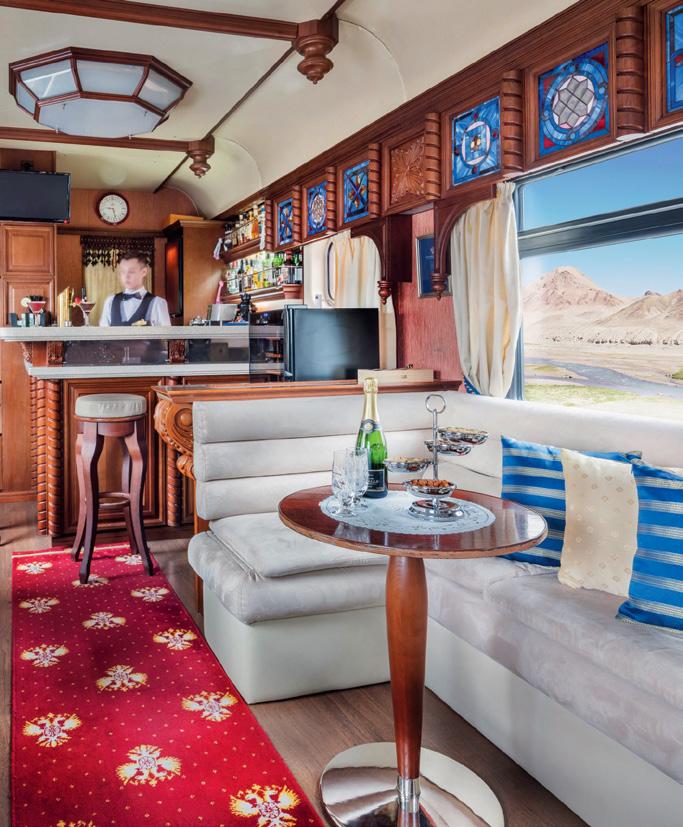
Golden Eagle Luxury Trains operate longdistance rail journeys crossing Europe, India and Central Asia. They began operating private luxury train along the Trans-Siberian route; and currently operate the Danube Express, Swiss Rail, the Deccan Odyssey in India and the Golden Eagle, which travels the Silk Road.
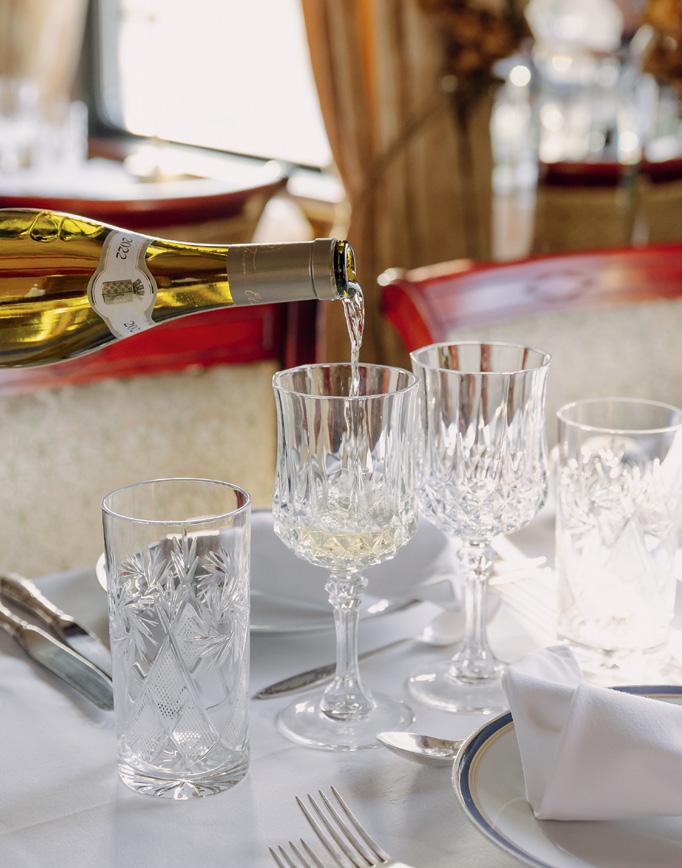
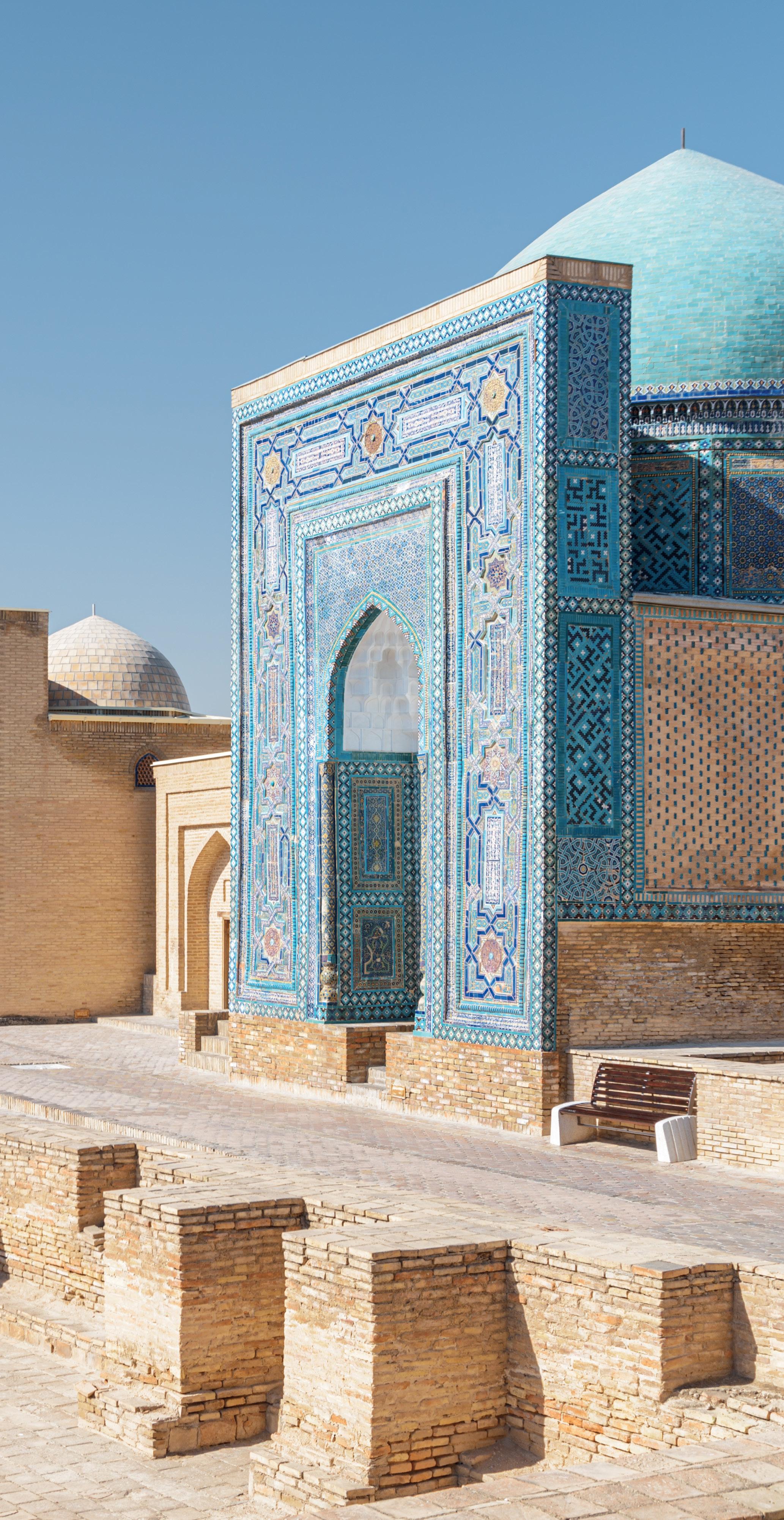




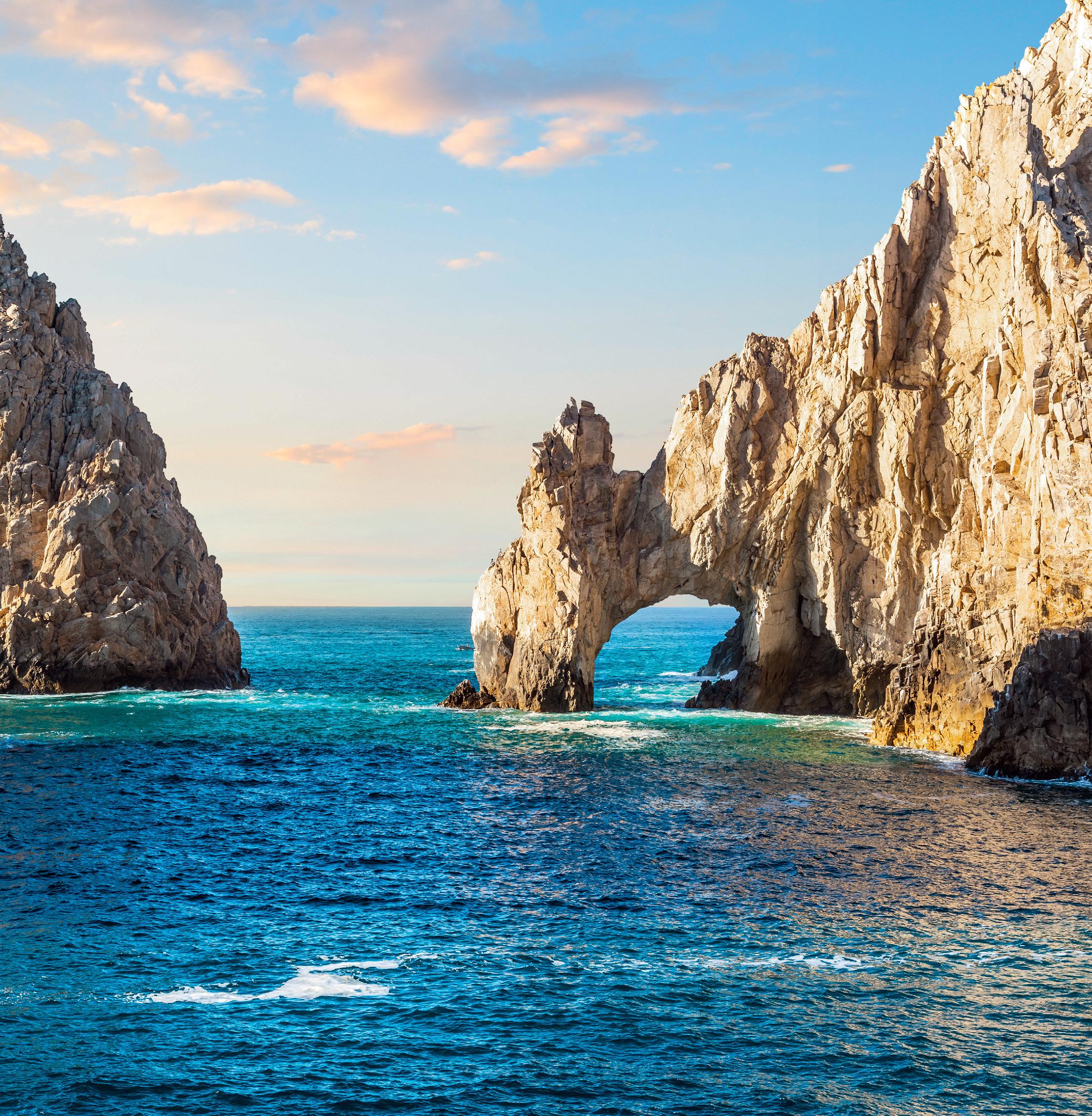
Setting sail through the vibrant Mexican Riviera aboard Norwegian Cruise Line’s Norwegian Bliss, Annabel Fuller discovers that sometimes, the best adventures are found onboard.
Aboard the Norwegian Bliss, high above the shimmering Sea of Cortez, I grip the wheel of the go-kart, my knuckles turning white. The engine throbs beneath me, sending a thrill up my spine as my heart races. When the flag drops, I shoot forward, the salty sea breeze stinging my cheeks. The roar of the engines fills my ears as I speed down the Bliss Speedway, a go-kart track improbably perched atop the ship. It is as if I am hurtling through the sky into an endless horizon.
Just ahead, Connor Burgwin, my newfound friend, laughs heartily, his grin wide with mischief. “You’re not catching me this time!” he shouts above the roar. My competitive spirit flares, and I slam the accelerator, determined to close the gap between us.
I have been on cruise ships before, but nothing has prepared me for the kind of adventure that Norwegian Cruise Line offers. Sailing onboard a five-night Mexican Riviera cruise from Los Angeles along with nearly 4,000 fellow passengers, I worry it might feel crowded, yet the thoughtfully designed spaces ensure there is always a corner of tranquility. The ship’s rich mahogany and marble interiors exude understated elegance, with floor-to-ceiling windows framing endless ocean views.
After our adrenaline-fuelled race, our legs still trembling, Connor and I sink into a pair of deck chairs in the adults-only retreat, Spice H20, catching our breath and exchanging stories. I listen as Connor, a “ten-pound Pom” who migrated to New Zealand reminisces on

his lifelong love affair with the sea. He isn’t accustomed to the bells and whistles of modern ships, which makes him appreciate all the onboard activities available on the Bliss even more. “I like to think ships like this keep me young,” he says. As I watch the white ribbons of the ship's wake
stretch towards the horizon I realise I have not thought about reaching land once since boarding. The days flow together effortlessly: soul foods at the '50s-inspired American Diner, afternoons by the pool, and nights spent waving our hands in the air at the Social Comedy & Night Club.

Ready to cruise?
At our first port of call, Cabo San Lucas, I take the plunge on a scuba-diving excursion, slipping beneath the surface where the world transforms into a dazzling kaleidoscope of colour and light. Schools of tropical fish dart around me, their scales shimmering; flecks of gold in the sunlight. The coral forms a labyrinth of shapes and textures; some rigid and sharp, others swaying gently like fans in the current.
As I drift over the maze of coral, a sleek shadow glides past: a sea lion, its dark eyes meeting mine in an instant of shared curiosity. It twists effortlessly, its sleek form cutting through the water, and then it is gone, vanishing into the depths.
After the thrilling seal encounter, we climb back aboard the dive boat, still buzzing with excitement. Cabo San Lucas’s famous rock arches of El Arco glow golden in the afternoon sun. Cliffs jut into the sea, their rugged edges softened by colonies of feathered pelicans perched along the ledges. Beyond, sandy beaches curve gently around the bay, dotted with thatched palapas and sunbathers sipping frosty cocktails.
Back on shore, I wander through the bustling marina, where vendors display colourful crafts and fishermen clean their catches as hopeful pelicans hover nearby. As I stroll along, I bump into a few fellow cruisers swapping stories about their
own excursions along the Mexican coast.
One group has just returned, windblown and exhilarated, from a UTV adventure through the dramatic dunes of Los Cabos, their shoes still dusty from the desert trails.
Another couple spends a leisurely afternoon at The Veleros Beach Club, a private retreat with porcelain sands and swaying palm trees, where they lounged by the water with margaritas in hand.
To my surprise, I even spot Connor, my competitive companion from the go-kart track, who had chosen a desert hiking and craft beer tasting excursion. He raves about cacti as tall as trees, whale spotting and craft beers that rival Belgium brews.

Back onboard the magic doesn’t wane. Though Cabo San Lucas is behind us, the Bliss feels like a destination in itself.
Days at sea have a rhythm of their own. Mornings are spent doing laps of The Waterfront oceanfront promenade as the sun rises, afternoons see me enjoying the obligatory second lunch – the meal that all regular cruisers are all too accustomed to – and evenings are when we all gather on the top deck.
As we glide from port to port, I begin to anticipate each evening’s golden hour, when the Observation Lounge fills with the gentle murmur of conversation and the sky melts from orange to indigo.
One afternoon, I slip away to the Mandara Spa, where quietude awaits beyond frosted glass doors. Inside, the scent of eucalyptus lingers, and I treat myself to a hotstone massage. As smooth, heated basalt stones ease away the day’s tension, I feel every knot release in time with the soft rocking of the waves outside. Afterwards, I venture into the expansive Thermal Spa and discover the “salt rooms” encased in layers of salt crystals, lauded for their benefits to respiratory health. I also take a moment to relax in the refreshing snow room, a delightful contrast to the sunny conditions outside.
Even dining onboard feels like an adventure. At Los Lobos, the onboard specialty Mexican restaurant, I share plates of sizzling carne asada and fresh guacamole with Debbie and Caroline, two lifelong cruisers.
“We’ve been cruising for years, but once we discovered Norwegian, there was no going back,” she says. “Where else can you go from a Broadway show to a tequila tasting in the same evening?”
When we reach Ensenada, the last Mexican stop on our journey, our visit coincides with Día de los Muertos, or the Day of the Dead – a time when Mexican families honour their loved ones who have passed on.


Brightly decorated altars, known as ofrendas, adorned with marigold flowers, candles and sugar skulls, dot the town in vibrant displays. Vendors line the waterfront, their stalls bursting with handwoven textiles, traditional pottery and small hand-painted skulls, or calaveras, in a dazzling array of colours and designs.
A mariachi band, decked out in brilliantly embroidered jackets and wide-brimmed sombreros, plays a spirited rendition of La Bamba and I am still humming along to the catchy tune as I arrive at the historic Hotel Riviera del Pacífico, a grand old building with a storied past.
Built in the 1930s, it once attracted Hollywood’s elite, and Prohibition-era bootleggers; it’s said to be the birthplace of the margarita. In its atmospheric bar, I order the legendary cocktail.
Buzzing from my morning cocktail I arrive at La Bufadora, the world’s second-largest blowhole, where I stand in awe as the sea erupts through a natural rock tunnel, sending a geyser of mist high into the air to the delight of onlookers.
Vendors near the blowhole call out with friendly banter, selling everything from woven bracelets to bottles of local tequila. I pick up a small, hand-painted skull, a reminder of my visit.
It is our last evening, and the Norwegian Bliss feels almost like home. As the glittering city lights of Los Angeles emerge on the horizon, we gather one last time at the Waves Pool Bar beneath a canopy of stars. Dewa, the bartender who always anticipates my nightly arrival, is already mixing my Mango Meltdown.
Holding the cool glass, I find myself standing at the railing, watching the last glimmers of moonlight dance on the waves. I feel a wave of nostalgia, not just for the places we’ve seen, but for the memories I have created aboard this floating world.
The best part of cruising isn’t just about reaching each destination; it’s about the unexpected moments that stay with you, like gripping the wheel of a go-kart as the ocean rushes by, or sharing a laugh with new friends as the ship carries you forward rising and falling in perfect synchronicity like a Mexican wave.



Of all the Australian capital cities, the diversity of Melbourne’s regions within a two- or three-hour drive makes it an unmatched metropolis from which to launch a driving holiday or weekend away. Paul Chai hits the road and samples the best regional Victoria has to o er.

Victoria is a compact state but within its borders you can find alpine snow and outback red dust, hotels made from converted railway stations and retro motels given a glow up. You can dine on Texas BBQ and sip cocktails in hidden speakeasies that exist metres from acres of farmland. If you give Victoria three hours or less of your driving time, you can have just about any Australian travel experience you can think of.
“Victoria is a fantastic short-break state due to its compact diversity, with so many amazing regional destinations within a short drive from Melbourne,” says Steve Dimopoulos, Minister for Tourism, Sport and Major Events in Victoria. “Regional Victoria also showcases some of the country’s most vibrant
communities, each with its own unique character. It’s no surprise that visitors return time and time again to rediscover the magic of these regions.”
Here are just some of the regional wonders you can discover on a Victorian road trip.




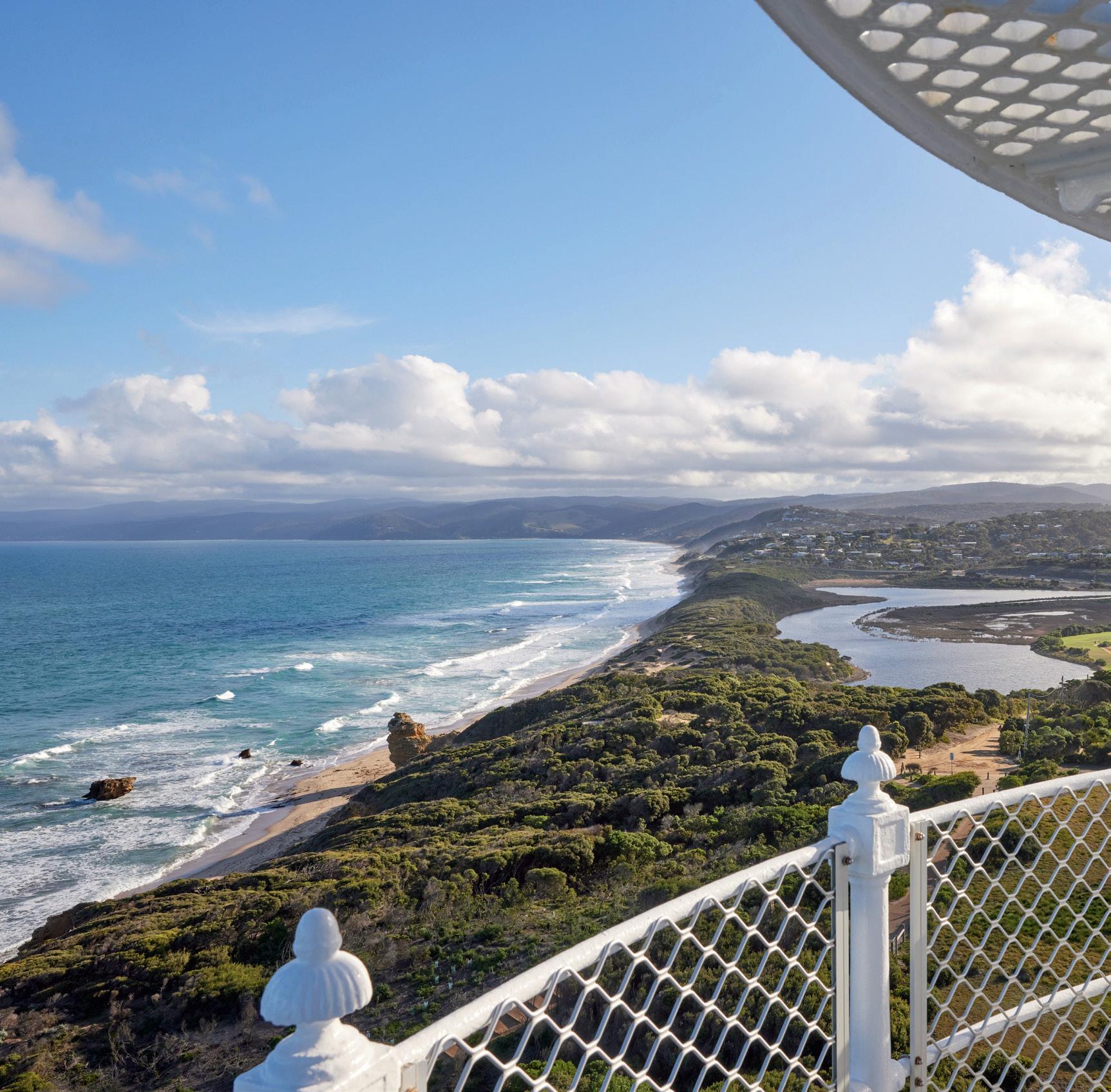
The Surf Coast, one and a half hours’ drive west of Melbourne.
Sunnymead at Aireys Inlet feels like driving into a sunny summer afternoon with all the hues of a Great Ocean Road sunset, a pool bar with firepit gathering spot; fine diner and an unexpectedly versatile spa all on the premises. Smart wooden floors, petite mushroomshaped lights and 70s-esque ceramics as well as mid-century cocktail gear in the rooms all give it a (stylish) homely feel.
Santara is the on-premises modern fusion restaurant that leans towards India. Indie Spa, tucked behind reception, offers a bathhouse with four deep tubs for hens’ parties or prewedding spas. Walk across the road to the Aireys Pub, known for onsite Salt Brewing. Sample beers like the Moby, which gives 10 per cent of sales to the Sea Shepherd.
It’s the permanently sunny disposition, from check in to checkout with meticulous retro styling, great food and thoughtful drinks in a beachside locale – the whole thing feels like a perpetual beach party.
THE TRAVELLER:
The Bellarine Peninsula is just over an hour from Melbourne by car.
e base
With just seven outsized residences, Lon Retreat & Spa has done well naming its rooms after cloud formations because one night here will see you floating on air. My abode, Cumulus, is like a separate cottage with high, wood-panelled ceilings, a sandstone open fireplace and immaculate soft furnishings.
e must-dos
Chef Brian Anderson at Baah lah! offers up handpicked figs from a friend’s tree dressed with condensed milk, or mulberries harvested from his father’s farm. Tulip is the veteran serving a roasts and hearty sides from its off-street premises that opens out into a courtyard. Two Noble is a light, bright space with modern Asian fusion
THE TRAVELLER:

on the plate. Felix has big flavours and a passion for French-inspired fare.
The Bellarine is best-known for sand and surf beaches, brunches and takeaways on the sand but the tide has been turning and the dining scene in Geelong has been upping its game.

THE TRAVELLER:

High Country, three hours’ drive north of Melbourne.
e base



The Strathbogie Ranges are an hour’s drive north of the city.
The Trawool Estate is a boutique hotel that was given a serious renovation in 2019. The name means “wild water” in the local Taungurung language, which is also the name of the signature
restaurant. The Estate references the region’s nowdefunct rail line and looks out over the Trawool Valley.
There is great military history in nearby Seymour. You can taste wine at Mitchelton, Tahbilk and Fowles, the holy trinity of local winery spots. But if you really like a secret
party spot, Trawool Estates speakeasy, Turbine, draws in locals that like well-shaken cocktails and hips.
This is an area that many drive past on the way to the snow, stop awhile and you will be enchanted by this region so close to Melbourne you can pop up for lunch.

Miette is a brand-new build behind what was once the first French bakery to set up in town in the 1800s. Miette is French for “crumb” but this two-bedroom house is a feast for the senses with a Scandinavian-style living space boasting a huge glass frontage that fills the place with natural light. Bedrooms are stylish and simple with the downstairs master suite all dark and brooding with a secret outdoor clawfoot tub.
e must-dos
The main street is home to Feather & Drum custom hatmakers where Cat Leahy will fashion your own rock ‘n’ roll headpiece, or offer you a readymade hat. Backwoods Distillery Co. makes the world’s only whisky steeped in red gum. The Guard serves top-flight coffee out of a century-old railway carriage; and The Star Hotel serves some of the best BBQ this side of Texas.
A morning stroll in Yackandandah can be so tranquil you might see the resident town kangaroo lazily hopping up the main street, but for a small rural community one thing arriving in droves is creative businesses.

THE TRAVELLER:

THE TRAVELLER:




Mornington Peninsula, just an hour’s drive south-east of Melbourne.
The Keith motel’s walls are painted sunscreen-white with tropical welcome mats and The Cabana, an outside social space, has pale stones under foot and plenty of seating with access to an open kitchen for grilling and chilling. It’s part of the new retro motel glow-up trend.
Point Nepean National Park might have more history packed into a few kilometres than anywhere else in Victoria: there is the indigenous Bunurong stories, the tales of separation in the quarantine station and a memorial where Prime Minister Harold Holt went for his fateful final swim. See it all with Emocean e-bike tours.
The perennially popular St Andrew’s Beach Brewery is housed in a former stable,
with a pear and apple orchard (to make cider) filling the former grass racetrack. JimmyRum was founded by career seamen James McPherson who is a lively presence behind the tasting bar most weekends. Alba Thermal Springs and Spa is the perfect way to unwind.
The Mornington Peninsula is a popular beach getaway, but with great distillers, bang-on breweries and rich history, there is just as much action away from the sand.



Mt Buller is in the heart of Victorian snow country, three hours’ drive from the city.
Arlberg House is just about the closest bed you can get to the summit of Mt Buller. Yes, it’s the perfect ski-in, ski out spot but in summer the mountain is packed full of adventure of a different kind.
RockWire is the brand-new attraction with new routes arriving just this past December. The wires are embedded into the alpine rocks and they allow novices to rock climb like a pro giving you access to parts of the High Country few get to see. Buller’s mountain-bike trails have recently had an upgrade so the brave can tackle the mountain on two wheels; the Delatite River Trail with log-bridge crossings is equal parts thrilling and terrifying. Arlberg is also having a series of summer “long lunches”, using local sourced produce, on the roof deck.
Don’t let the skiers have all the fun, and remember on the hot summer days it is several degrees cooler up on the mountain.








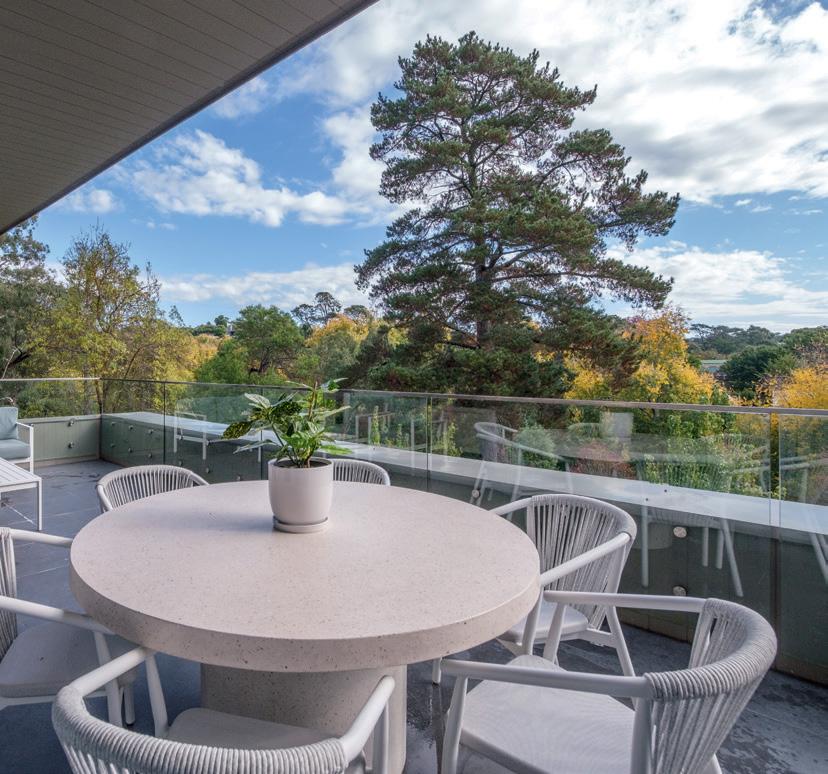
THE TRAVELLER:
e region
Ballarat is part of the Victorian Goldfields, just over an hour north-west of Melbourne by car.
e base
Hotel Vera, is a passion project from the same owners as Hotel Ernest in Bendigo. Stay in a renovated 19th-century mansion whose rooms have five-metre
Hepburn Bathhouse and Spa is the spiritual home of mineral bathing in Victoria, just over an hour from Melbourne.
The Mineral Springs Penthouse at Hepburn Bathhouse and Spa is a two-bedroom, twobathroom suite with chef’s kitchen – and a private steam room. In the second
bedroom, fire up the steam room set into the bedroom wall and give yourself a salt scrub. The main bedroom has a huge in-room spa at one end and a glass fireplace at the other.
You have to bathe, and you have to do it at the exclusive bathing experience in The Sanctuary. Reserved for bathers 16 years and older and featuring a different
array of pools, Sanctuary Bathing also has an outdoor section where you float in steaming pools on a wooden deck overlooking the forest and creek.
This historic spa town offers a getaway packed with indulgence as guests soak in thermal pools, visit the onsite spa and retreat to a stay every bit as relaxing as the mineral springs themselves.




high ceilings and magazineshoot worthy soft furnishings; art is hung throughout the property and the colours are all taken from the local region, be it the blue of the sky or the greens and browns of the earth.
Visitors to Ballarat no longer seek nuggets, but fine dining.
Babae restaurant in Hotel Vera is an intimate space of just 26 seats and champions local makers and growers. Underbar has long been the city’s hot table with chef Derek Boath lovingly creating Japaneseinspired seasonal menus and Tony Schuurs making sure every glass is full of liquid gold. Damien Jones’ Mr Jones Thai fine diner is even more venerable having
helped put the gold mining town on the foodie maps.
Ballarat has restaurants and brewhouses that have Melburnians heading up for a day of dining; discover the amazing evolution of this rural city.
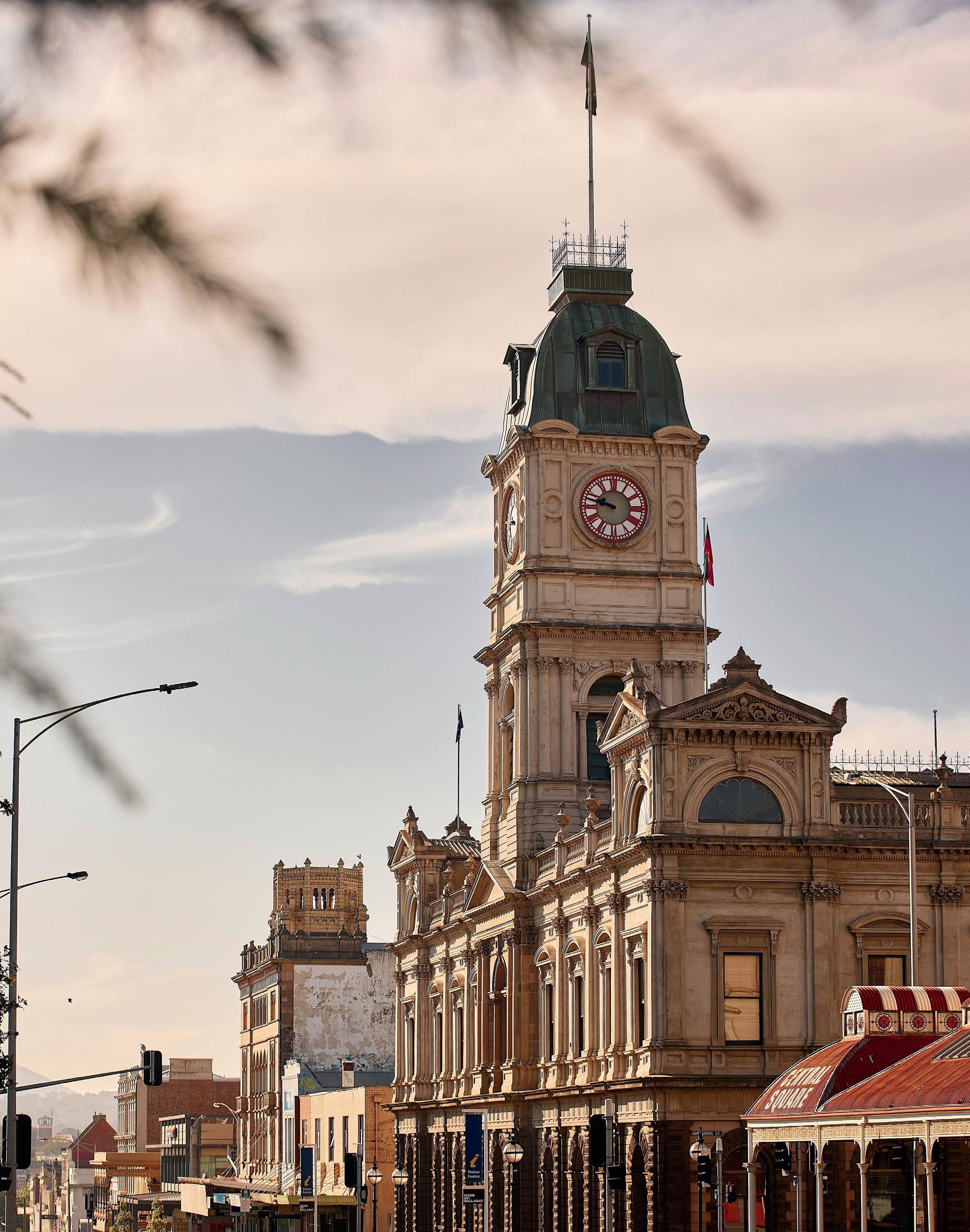
The King Valley is three hours’ drive north of Melbourne, once home to tobacco growers but now known for “Prosecco Road”.
Spend the night in a converted shipping container in amongst the famous vines at Dal Zotto Wines, the first place in Australia to plant prosecco grapes. The studio has a private deck and outdoor seating for al fresco meals and your very own firepit to sit around while you look up at the stars.
Exploring the winemakers here, many of whom have familial links, and enjoying the old-school European hospitality. Learn to cook with Katrina Pizzini who passes on tricks and tips as well as fabulous Northern Italian recipes (their wine is amazing, too). Have dinner at the Pizzini’s pub, the Mountain View Hotel, that serves seasonal Italian fare. Have a pint at King River Brewing and try the sparkling at Chrismont Wines.
This is a very special winemaking area well worth the drive.
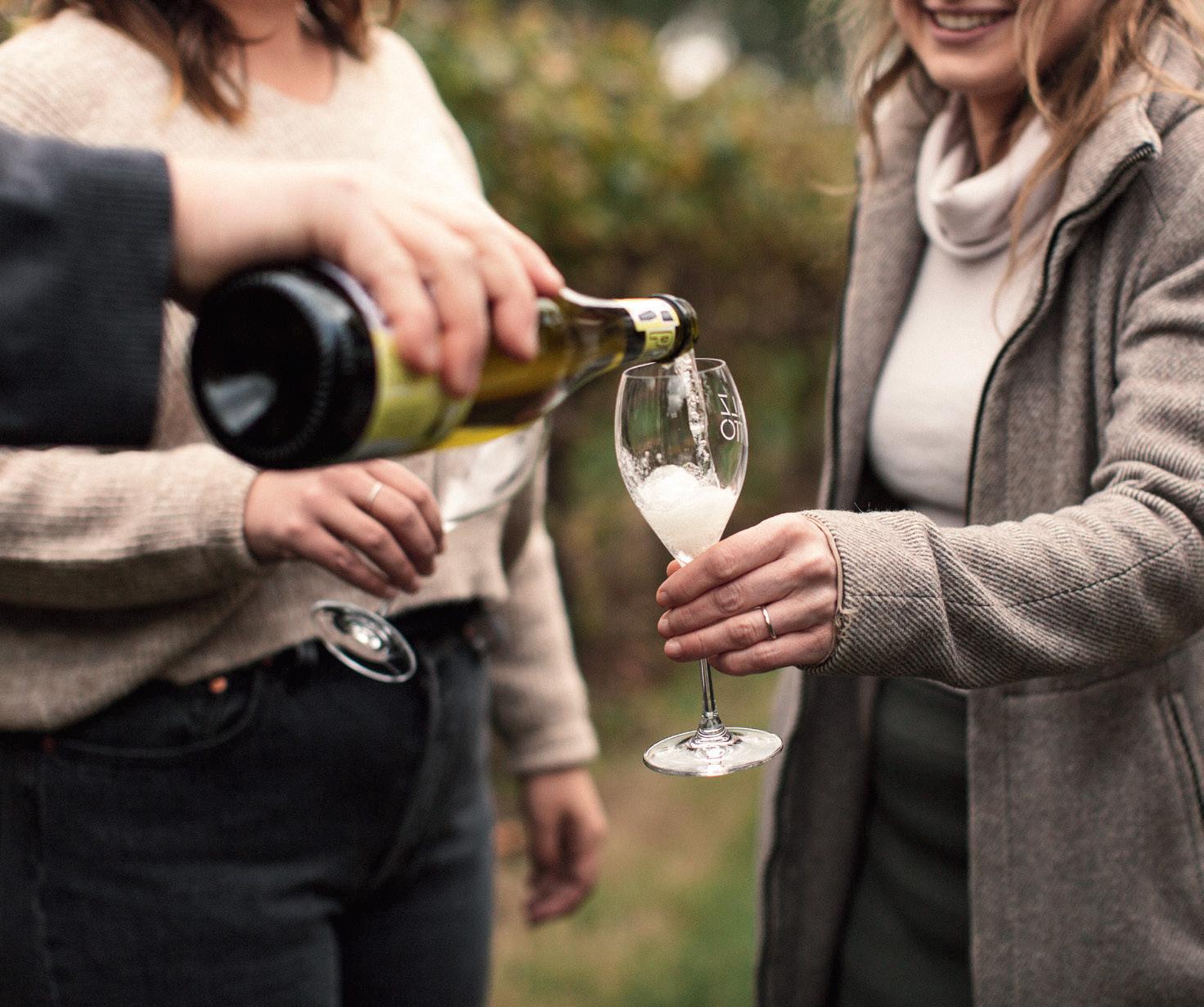


The Victorian Mallee, or the Victorian outback, three hours’ drive northwest of the capital.
Why not base yourself on the Mighty Murray itself with a houseboat from All Seasons Houseboats.
The Iconic Luxury Houseboat lives up to its name with a huge upstairs entertaining area and deck with the six bedrooms and ensuites located downstairs leading out to a second deck with sun lounges.
Explore Mildura with its orange groves, Italian restaurants and lively hospitality. Have a cold beer at Victoria’s only outback pub, the Werrimull Hotel, where tables are
decorated with rusted farming tools. Take a tour of Murray Sunset National Park with pink lakes and red dirt. Check out the distilled offerings at Fossey’s in Mildura who do a Navel Strength Gin that celebrate the region’s famous navel oranges.
Mildura feels rugged and removed from the rest of the state, but has all the good food and great drinks that Melburnians expect.

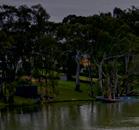






Bali Beach Hotel, e Heritage Collection

“The first time I used a bullet mic, it was the middle of winter in Reykjavik, Iceland. I was making my first record and would walk from my hostel to the studio through thick snow under streetlights because the sun never came out. I was working with producer Alex Somers and he plugged a bullet microphone into an amp and I began to sing through it. They’re traditionally used for harmonicas so they produce this dampened, almost cloudy, sound. I loved the tone so much that I bought one on my travels through the US and it’s a staple for me in the studio and on stage.”
For information on Gordi’s new music and tour news visit instagram.com/ gordimusic
Feel the spirit of South Africa in its tapestry of cultures, breathtaking journeys and unforgettable moments.


Scan to start your adventure





















